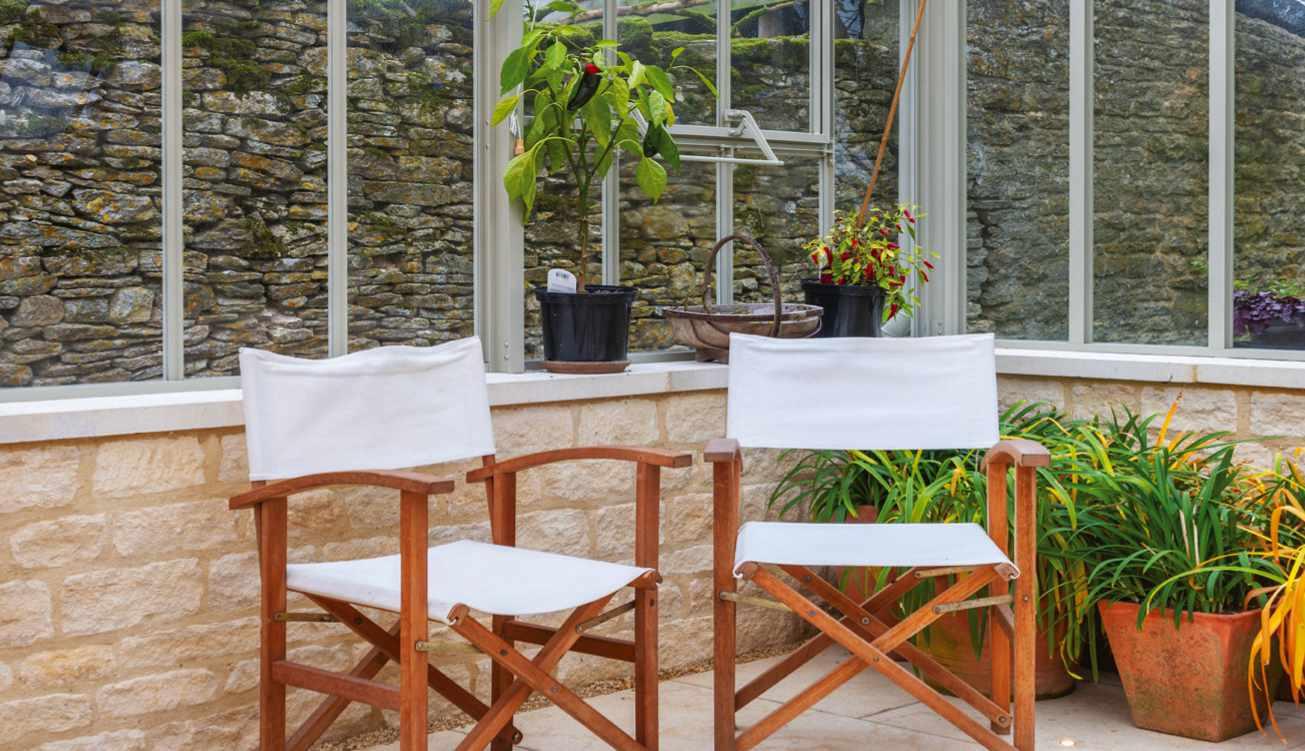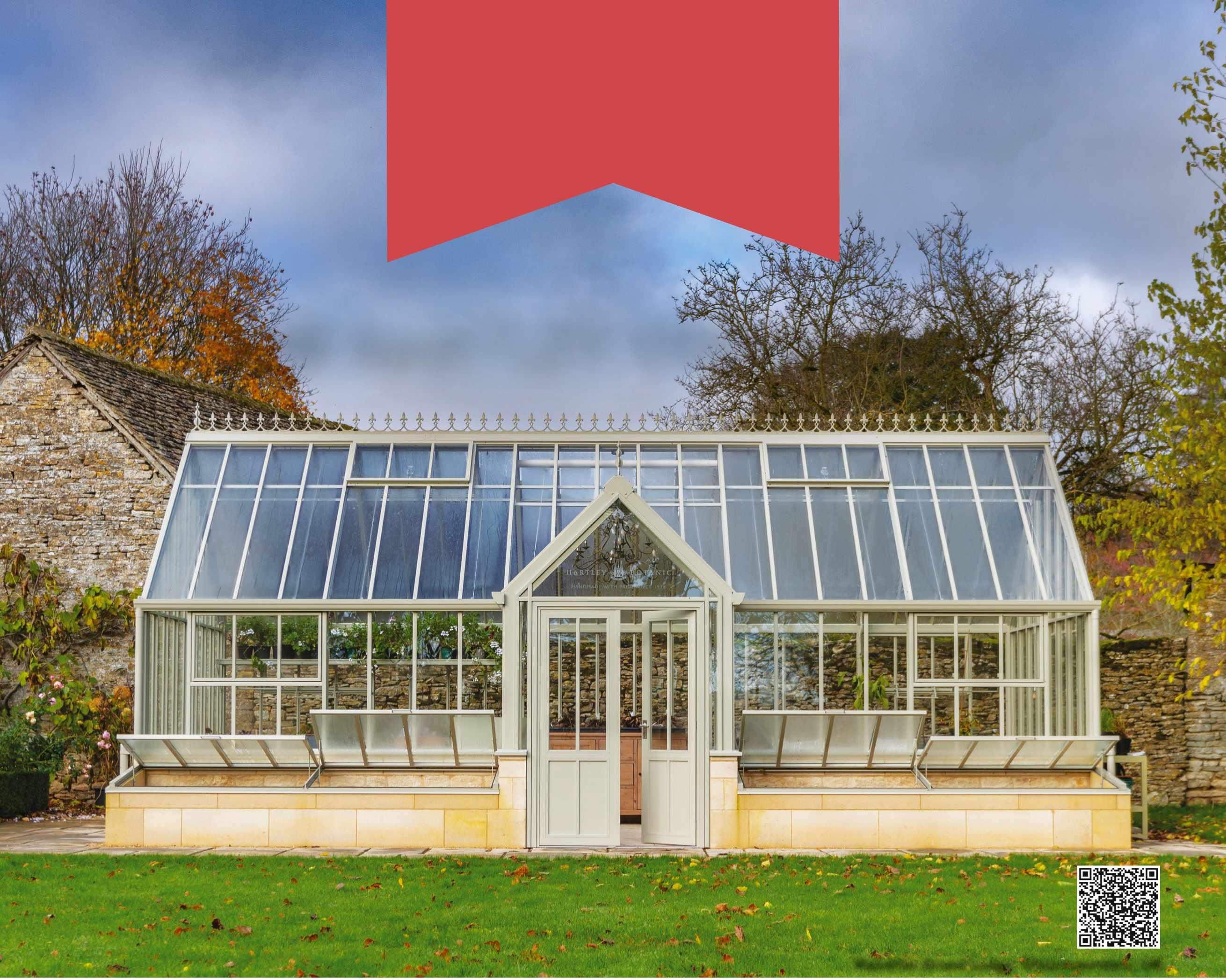LORY
indulge in the mellow
TREADING SOFTLY A Finnish moss garden amidGardening the ruins

TREE GUIDE
euonymus for striking colour and interest
Ch h s
how to become an enthusiast h ysanthemum o enthu iast

GARDEN IN STYLE
the best workwear for gardeners

Often feel fatigued? Try magnesium.
Best known for helping to reduce tiredness and fatigue, magnesium is also vital for our health.
Defi ciency can cause mood swings, migraines, eye twitches and muscle cramps.
If you have low magnesium levels, you are also less likely to get a good night’s sleep.
taking a daily supplement – but not all supplements are equal. Your body’s ability to absorb the magnesium depends on the way that the supplement is made.
‘Most supplements use magnesium oxide – it is the most common form, as it has a high concentration of magnesium but it’s not easily released into the body,’ explains Dr Miriam Ferrer PhD, head of product development at FutureYou Cambridge.

Nicole, 57, says: ‘I genuinely started to feel different within a couple of weeks. I started to feel much more perky –that’s the best word to describe it... I’ve taken them religiously ever since.’
Another happy customer, Anne, 74 says: ‘I had no energy at all. I put it down to my age, but it was really impacting on my life. Within two weeks of trying it I was a different woman, with energy to spare.’

Magnesium is present in foods such as black beans, bananas and pumpkin seeds, but to get the benefi ts we need to absorb it into our bodies.
One way to ensure we consume a consistent level of magnesium is by

‘Taking more magnesium to try and make up for the problem isn’t the best approach, as too much can cause an upset stomach so we created Magnesium+ using magnesium lactate which is twice as absorbable as a standard magnesium oxide supplement. This means you need much less per capsule to deliver the same amount.’
Now FutureYou Cambridge is offering you the opportunity to try a 28 day supply of Magnesium+ for free.*

‘We’re happy to offer people their fi rst pack for free so they can experience it for themselves,’ says Adam Cleevely, CEO of FutureYou Cambridge.

‘Most people know if it’s working for them within four to eight weeks – and if they like it, they will stick with it.’

less than half of us consume
magnesium, a mineral that helps turn the food we eat into energy.
two weeks I was a different woman, with energy to spare”
Welcome
Much of gardening thrives on the enthusiasm of the enthusiast – the specialist nursery focusing solely on a particular genus or grouping of plants; a grower in their garden who can’t resist adding to their particular collection. Or the designers whose passions for better spatial planning and planting gives rise to some remarkable gardens that are a joy to experience.
This issue we celebrate such enthusiasms. On page 88, we learn more about The Glasshouse Project. Set up in the glasshouses of East Sutton Park women’s open prison, the project offers rehabilitation through the growing and tending of houseplants for sale both online and in a stylish local shop. The passion of founders Kali Hamerton-Stove and Melissa Murdoch, who run the project, gives participants purpose and confidence.
In Finland we discover a moss enthusiast who has nurtured moss species to create a living piece of art as a ‘garden’ of quieter contemplation (page 66). We also visit Berlin (page 74) to discover an atmospheric garden created among the tumbledown buildings of an old boat yard. The strength of vision from architect-owner Tanja Linck to use the graphic qualities and heritage of the site, rather than clear them away, has resulted in a space of real visual impact. And to Cornwall (page 52) where chrysanthemum enthusiast Beth Tarling just can’t help growing these late-season beauties for the sheer joy they bring her.
Finally, we pay tribute to HM The Queen and her own considerable dedication. Her unending curiosity and interest in others extended to her support and active involvement as Patron of the RHS. Her appearances at the Chelsea Flower Show were greatly anticipated and will be greatly missed.
Website gardensillustrated.com
Instagram @gardens_illustrated
Twitter @GdnsIllustrated
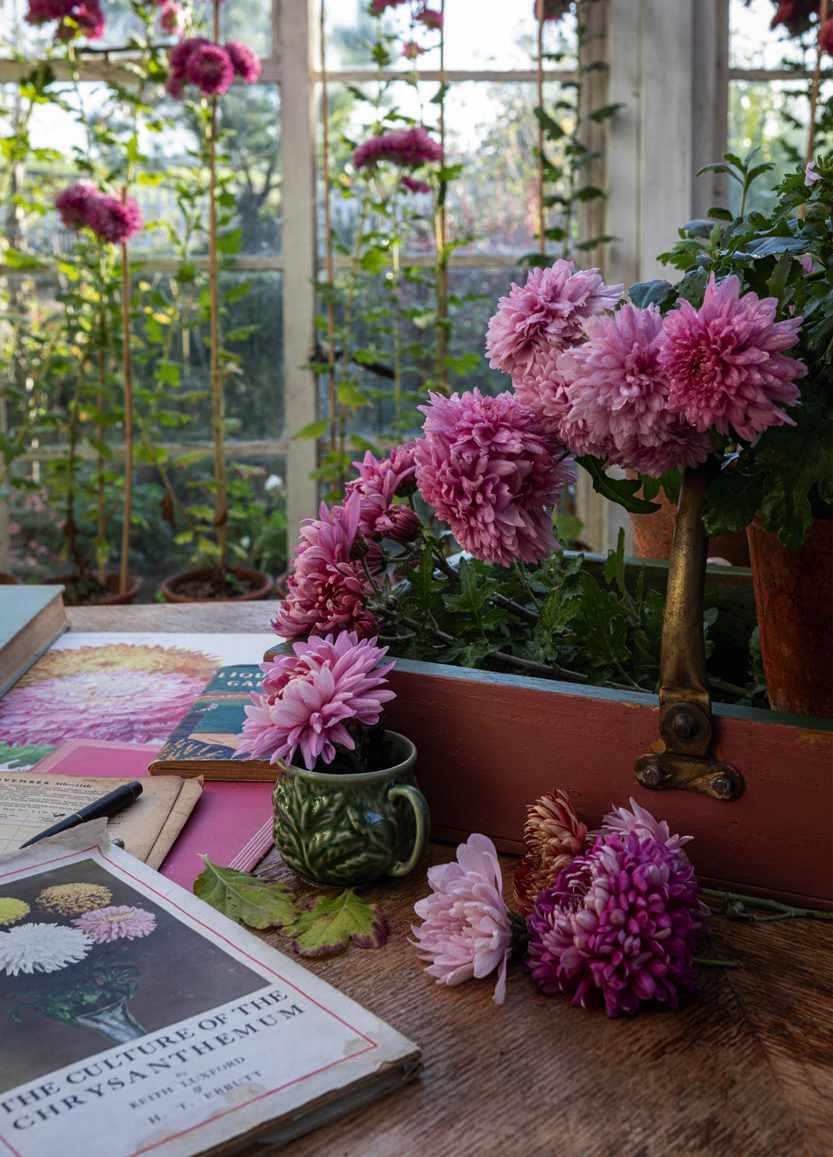

Facebook @gardensillustrated

 MARK BOLTON
Chrysanthemums exude an enduring, old-world charm for grower Beth Tarling, page 52.
STEPHANIE MAHON, EDITOR
JOHN CAMPBELL
MARK BOLTON
Chrysanthemums exude an enduring, old-world charm for grower Beth Tarling, page 52.
STEPHANIE MAHON, EDITOR
JOHN CAMPBELL
Places
34 The place to be Matthew Childs’ design for a modern garden in Surrey prioritises year-round family fun
44 Kentish belle Designer Jo Thompson takes a light-touch approach to a garden hidden deep in the Kent countryside
66 Natural wonder With careful curation, landscape architect Tom Simons has created an artful moss garden within a pine forest on an island near Helsinki
74 Rising from the ruins
Architect Tanja Lincke and artist
Anselm Reyle balance romance with Brutalism in a garden set among the ruins of a former boat yard in Berlin
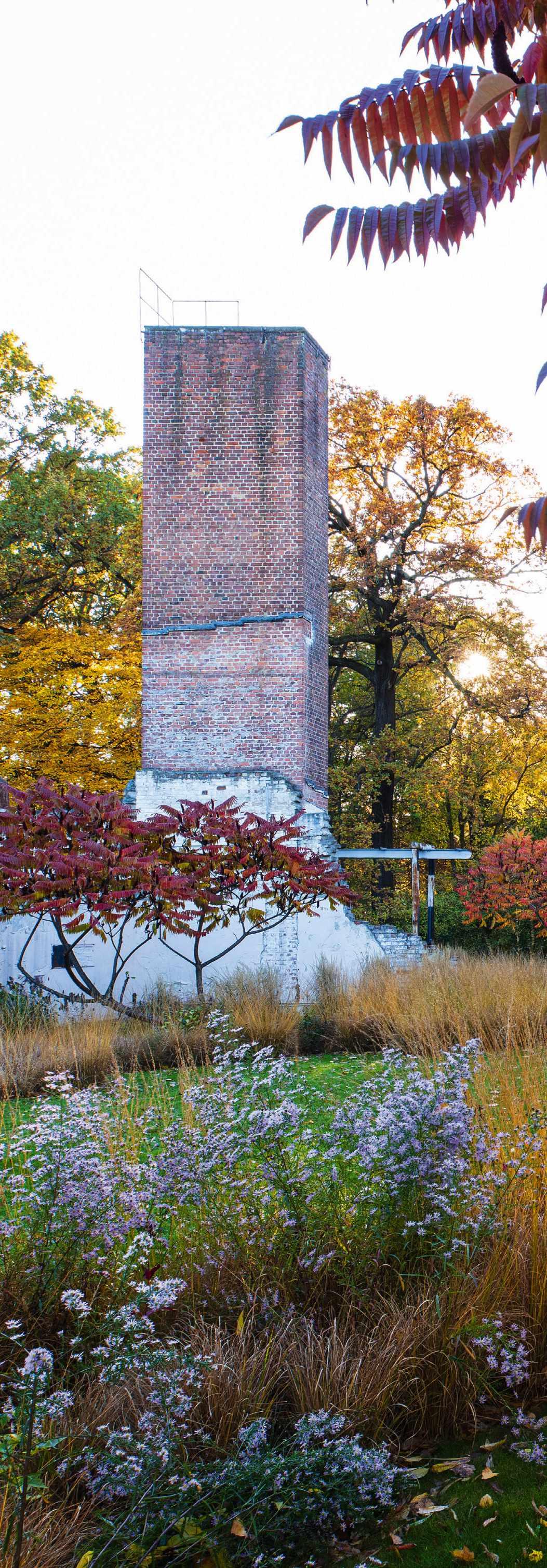
82 Screen time Privacy is paramount to a design by Studio Cullis for an overlooked garden in south London
94 Meeting of minds Designer Peter Janke’s garden combines German precision with Beth Chatto-inspired informality
Plants
26 Plantsperson’s favourites Gravetye Manor’s head gardener Tom Coward chooses his top ten plants for October
52 Old-fashioned flair Long dismissed as a garish granny flower, chrysanthemums are prized by cottage gardener Beth Tarling precisely for their cheering, vintage character
58 Plant profile: Euonymus Tony Kirkham looks at the European spindle, to him one of the most beautiful native shrubs or small trees in the British landscape
88 Growing a brighter future
An inspiring social enterprise offers horticultural training to boost prisoners’ employability
People
43 Gardening talent Meet Poppy Okocha, ecological food grower, speaker and writer
72 Who’s who Malverleys’ head gardener Mat Reese on plant hunting, his time at Great Dixter, and horticultural apprenticeships
130 Tulip mania The modern-day spring bulb craze continues apace, but, ponders columnist Alice Vincent, is it time to halt our pursuit of the perfect Instagrammable border?
Design
103 Design update Including news of a new garden at Nymans and plans for therapeutic spaces in three Greek hospitals
111 Sourcebook Nine of the best path and pedestal lights
Regulars
3 Welcome
6 Contributors
15 Dig in This month: news of a new competition for young artists, and garden photography to look out for at the Affordable Art Fair in London 21 Kitted out for staying warm and dry while working in the garden
32
constant gardener Benjamin Pope looks forward to spring by adding bulbs to borders and meadows 113 Books New books, including a photographic celebration of English gardens and an essential guide to gardening in pots 125 Crossword and back issues 129 Next issue What’s coming up in our November issue
Shimmering grasses and warm, autumnal hues soften the rough industrial edges of a garden created on the site of a dilapidated former boat yard in Berlin, page 74.
SEE PAGE 24
COV E R I M AGE COVER IMAGE
Surrey garden by Alister Thorpe
ON T H E COV E R ON THE COVER
Autumn glory, pages 34, 44, 58, 74, 82, 94
Best workwear for the garden, page 21
Chrysanthemums, page 52
Euonymus, page 58
Finnish moss garden, page 66
Gardening amid the ruins, page 74
EV E EVE N T S A N D NTS AND OFFE R S OFFERS
• Download any of our expert online talks from the latest Gardens Illustrated Masterclass series – page 10
• Join us on a four-day cultural and horticultural tour of artists’ gardens in Sussex – page 13

• Save money when you subscribe to the digital edition of Gardens Illustrated – page 24
• Win a luxurious two-night stay at historic Bodysgallen Hall in Snowdonia† – page 123
† Entrants must be UK residents, aged 18 or over. See gardensillustrated.com/ bodysgallen for full details.
Our packaging
Subscriber copies of Gardens Illustrated are now delivered in paper wrapping instead of recyclable plastic polywrap. This paper wrap is 100% recyclable and made from sustainably sourced paper. Please recycle in your kerbside recycling bin. We would love to hear your feedback, please contact us at paperwrap@immediate.co.uk
LIFE SIZE ANIMAL SCULPTURE Contributors

Alister Thorpe
Alister takes pleasure in a Kent garden, page 34. “I occasionally look out from behind my camera and relish where I’m standing. This garden brought a beaming smile to my face.”
www.andrewkaysculpture.co.uk
07740 306412
Kreetta Järvenpää
Kreetta photographs
Tom Simons’ ethereal moss garden in Finland, page 66. “I was touched by the power of this silent work of art, and by how delicately Tom had designed the garden.”
Paula McWaters
Paula visits an exciting houseplant project in a women’s open prison, page 88. “Meeting the prisoners and learning just how many benefits they’ve derived from working with plants was uplifting.”
CONTRIBUTING EDITORS
James Basson
James lives in the South of France where he runs Scape Design, a practice specialising in low-maintenance and dry gardens. He is a fervent advocate for creating sustainable landscapes. The winner of four Chelsea Gold medals, he was awarded Best in Show in 2017.



Fergus Garrett
Fergus was appointed head gardener at Great Dixter by Christopher Lloyd in 1993. He is passionate about passing on his knowledge through student programmes at Dixter and worldwide lectures. He was awarded an RHS Associate of Honour in 2008 and an RHS Victoria Medal of Honour in 2019.
Anna Pavord
Anna’s books include her bestseller The Tulip and most recently Landskipping. For 30 years she was The Independent’s gardening correspondent. In 2000 the RHS awarded her the Veitch Memorial Medal. She lives and gardens in Dorset.


Dan Pearson
Dan is one of the UK’s best-known garden designers, familiar to many through his gardening columns in the Observer magazine. Eight of his gardens, including the Tokachi Millennium Forest in Japan, have won awards and he was awarded Best in Show for his garden at Chelsea in 2015.


Sarah Price
Sarah is one of the UK’s most sought-after garden designers who gained worldwide recognition for her designs for the 2012 London Olympic Park. She won Gold at Chelsea in 2012 and 2018, and was GMG Garden Columnist of the Year in 2016 for her design series in Gardens Illustrated


GA R DENS
HOW TO GET IN TOUCH WITH US TOUCH
Subscription enquiries and back issues
UK 03330 162114
USA/CANADA 1 866 464 8103 (TOLL-FREE)
REST OF THE WORLD +44 1604 973722
UK buysubscriptions.com/contact buysubscriptions.com/gardensillustrated
USA/CANADA GILcustserv@cdsfulfillment.com, britsubs.com/garden
UK/REST OF THE WORLD Gardens Illustrated, PO Box 3320, 3 Queensbridge, Northampton NN4 7BF.
USA/CANADA Gardens Illustrated, PO BOX 37495, Boone, IA 50037-0495 USA.
Advertising enquiries
+44 (0)117 300 8805 heather.golden@ourmedia.co.uk
Editorial enquiries
+44 (0)117 300 8622 gardens@gardensillustrated.com
Gardens Illustrated, Our Media Ltd (an Immediate Group Company), Eagle House, Bristol BS1 4ST.
Syndication & Licensing
Gardens Illustrated is available for licensing and syndication. +44 (0)117 300 8787 emma.brunt@ourmedia.co.uk

App support
For App support please visit apps.immediate.co.uk/support
We abide by IPSO’s rules and regulations. To give feedback about our magazines, please visit ourmedia.co.uk, email editorialcomplaints@immediate.co.uk or write to Katherine Conlon, Our Media Ltd (an Immediate Group Company), Eagle House, Bristol BS1 4ST.

MAGAZINE CONTACTS
Stephanie Mahon
Sorrel Everton
director David Grenham
editor Daisy Bowie-Sell
Commissioning content editor Veronica Peerless
Editorial and digital assistant Molly Blair
Botanical adviser Dr James Compton
Thanks this issue Hilary Brown, Jodie Jones, Rosemary Smith, Rosanna Morris, Abigail Whyte
ADVERTISING
Group advertising manager Laura Jones 0117 300 8509 laura.jones@ourmedia.co.uk


Portfolio advertising manager Heather Golden 0117 300 8805 heather.golden@ourmedia.co.uk
Senior brand sales executive Mia Dorrington 0117 300 8266 mia.dorrington@ourmedia.co.uk
Brand sales executive Mica Enwright 0117 300 8756 mica.enwright@ourmedia.co.uk
Advertising designer Parvin Sepehr
INSERTS
Laurence Robertson +353 (0)876 902208
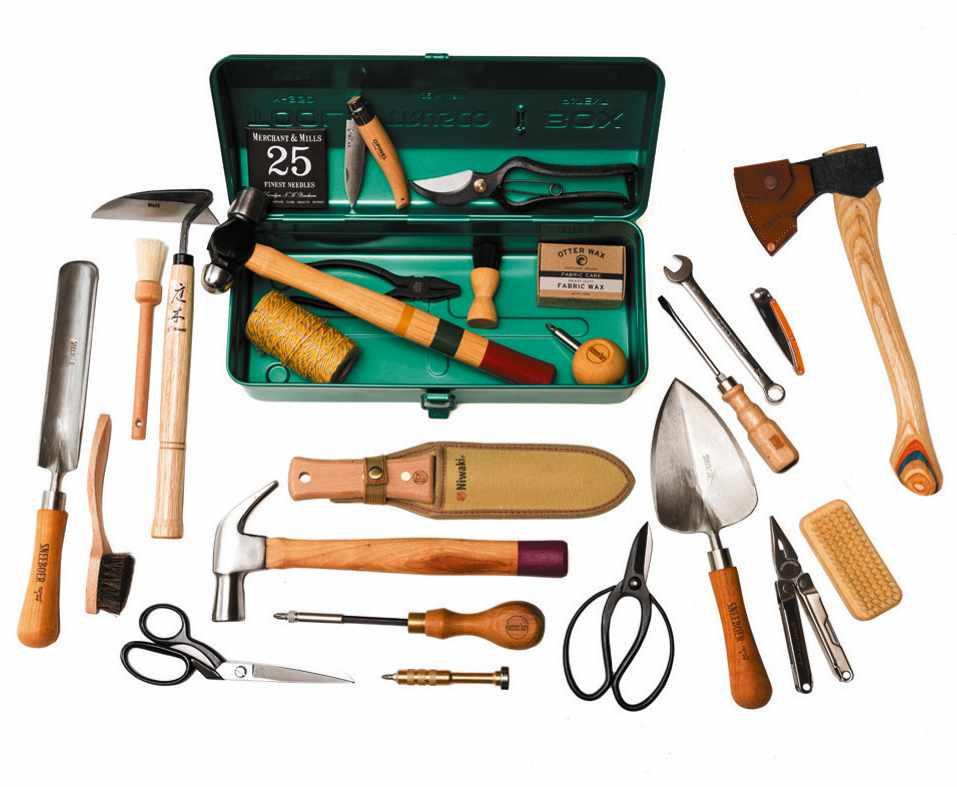
CIRCULATION, MARKETING, PROMOTIONS, PRESS & PR
Newstrade manager John Lawton
Subscriptions director Jacky Perales-Morris
Direct marketing manager Aimee Rhymer
Buyer Karen Flannigan
PR & Outreach Manager for Comms Emma Cooney emma.cooney@ourmedia.co.uk
MANAGEMENT
Chief executive officer Tom Bureau
Group managing director Our Media Andy Marshall
Managing director Our Media Marie Davies
Head of brand marketing Rosa Sherwood
Publishing assistant Lara Von Weber
SYNDICATION & LICENSING
Director of licensing & syndication Tim Hudson
PRODUCTION
Production director Sarah Powell
Group production manager Louisa Molter
THIS
Peace at last
From the idyllic N orwegian Fjords to the sun-kissed Caribbean , you can immerse yourself in some of the most beautiful landscapes in the world with P&O Cruises

There’s nothing quite as soothing for the soul as losing yourself in spectacular natural sights in a far� WPI NCPF # 2� 1 %TWKUGU JQNKFC[ can take you to places you’ve only ever
FTGCOGF QH��HTQO VJG OCLGUVKE 0QTYGIKCP
(LQTFU VQ VJG OCIPK � EGPV /GFKVGTTCPGCP ��
VJG RKEVWTGUSWG %CTKDDGCP CPF DG[QPF
,WUV VJKPM ��[QW EQWNF DG TGNCZKPI QP FGEM
QPG OKPWVG CPF GZRNQTKPI C TGOCTMCDNG
RNCPVCVKQP KP /CTVKPKSWG QT VJG XCUV��
FTCOCVKE NCPFUECRGU QH 0QTYC[ VJG PGZV
Exploring the fjords
# 2�1 %TWKUGU IGVCYC[ KU VJG KFGCN YC[ to access the furthest reaches of the

0QTYGIKCP (LQTFU��YJGTG C JQUV QH JCPF
RKEMGF OKPFHWN UJQTG GZRGTKGPEGU CYCKV
9JGVJGT [QWoTG C UGCUQPGF [QIK QT C
EQORNGVG DGIKPPGT��Yoga in the Blue
Mountain Hall QHHGTU RWTG GUECRKUO 6JG
JCNN HGCVWTGU VJTGG YCNNU OCFG QH UVQPG��
YQQF CPF INCUU��CPF C HQWTVJ HQTOGF D[ C
JWIG DQWNFGT VJCV HGNN HTQO VJG OQWPVCKPU
KP C OCUUKXG CXCNCPEJG�������[GCTU CIQ +V
QHHGTU DTGCVJVCMKPI XKGYU QH VJG VTCPSWKN
UWTTQWPFKPIU��KPENWFKPI C JWIG YCVGTHCNN��
OQWPVCKPU CPF VJG INGCOKPI $TKMUFCN )NCEKGT
6JGP��CU [QW UKPM KPVQ [QWT [QIC RQUGU��[QWoNN
HGGN CNN VJG VGPUKQP TGNGCUG HTQO [QWT DQF[ CU
[QWoTG IWKFGF HTQO QPG RQUKVKQP VQ VJG PGZV
/QTG QH C IGV WR CPF IQ V[RG! 6CMG C
UEGPKE OQWPVCKP JKMG PGCT Nordfjordeid�
C UJQTG GZRGTKGPEG CEEGUUKDNG HTQO VJG RQTV
QH 1NFGP +V YKNN VCMG [QW VJTQWIJ HTCITCPV
RKPG HQTGUVU VQ VJG OQWPVCKP HCTO CDQXG��
CPF CNQPI VJG YC[ [QWoNN JGCT VJG NGIGPF
QH *WNFTC C UGFWEVKXG HQTGUV ETGCVWTG YJQ
VCMGU VJG HQTO QH C DGCWVKHWN YQOCP YKVJ
C EQYoU VCKN $WV FQPoV YQTT[ KH UJG FQGUPoV
OGUOGTKUG [QW D[ VJG VKOG [QW TGCEJ VJG HCTO
CV 1UDGTIGV��VJG HCPVCUVKE XKGYU EGTVCKPN[
YKNN 5QCM WR VJG XKUVCU QH VJG URCTMNKPI HLQTF
DGNQY CPF VJG UWTTQWPFKPI RGCMU HTQO�����
OGVTGU CDQXG UGC NGXGN��VJGP EQQN FQYP YKVJ
C TGHTGUJKPI FKR KP VJG ET[UVCN ENGCT NCMG
Natural wonders
+H [QW JQNKFC[ KP VJG %CTKDDGCP QP DQCTF VJG
PGYGUV 2�1 %TWKUGU UJKR��#TXKC��[QW ECP
VTCXGN DGVYGGP UVWPPKPI KUNCPFU��FKUEQXGTKPI
GZQVKE XGIGVCVKQP CPF URGEVCEWNCT JKMKPI
QRRQTVWPKVKGU CNQPI VJG YC[��GURGEKCNN[
QP UQOG QH VJG UOCNNGT KUNCPFU UWEJ CU
5V /CCTVGP $NGUUGF YKVJ DQVJ &WVEJ
CPF (TGPEJ KP�WGPEGU��KVU VYKP ECRKVCNU QH
2JKNKRUDWTI CPF /CTKIQV CTG DQVJ EJCTOKPI
RNCEGU VQ XKUKV��YJKNG VJG Scenic Coastal Hike
UJQTG GZRGTKGPEG YKNN TGCNN[ JCXG [QW KP CYG
;QWoNN JGCF CNQPI VJG TWIIGF VTCKN VJCV
NGCFU VQ )GPGXG $C[ HCOQWU HQT KVU TQEM[
JKNNU CPF PCVWTCN RQQNU YKVJ RNGPV[ QH UEGPKE
RCPQTCOKE XKGYU VQ CFOKTG CNQPI VJG YC[
1P C ENGCT FC[��[QW OC[ ECVEJ C INKORUG QH
VJG PGKIJDQWTKPI KUNCPF QH 5V $CTVU VQQ
#NVGTPCVKXGN[��[QW ECP UCKN YKVJ #TXKC VQ VJG
/GFKVGTTCPGCP��NGCXKPI HTQO 5QWVJCORVQP
6JGUG JQNKFC[U YKNN CNNQY [QW VQ VTCXGN
DGVYGGP OCP[ FGUVKPCVKQPU DQCUVKPI NWUEKQWU
ICTFGPU��UWEJ CU Barcelona’s Parc Güell��
YJKEJ KU QPG QH VJG NCTIGUV ITGGP URCEGU KP
VJG EKV[ CV OQTG VJCP����CETGU 0QV QPN[ ECP

[QW GPLQ[ RCPQTCOKE XKGYU QH VJG EKV[ HTQO
VJGTG��DWV [QW ECP CNUQ VQWT VJG CTEJKVGEV
)CWFÉoU HCUEKPCVKPI JQWUG��CPF UVTQNN COQPI
XKDTCPV OCIPQNKCU��YJKNG UYC[KPI QNKXG VTGGU
CPF #NGRRQ RKPGU UJGNVGT [QW HTQO VJG UWP
Variety at sea
$CEM QP DQCTF ��[QWoNN GPLQ[ VJG DGUV QH
GXGT[VJKPI CU [QW GZRNQTG��FKPG CPF WPYKPF
;QW ECP VCMG [QWT RKEM QH VJG 2� 1 %TWKUGU
� GGV ��KPENWFKPI VYQ PGY 'ZEGN ENCUU UJKRU ��
#TXKC ��CTTKXKPI KP &GEGODGT�������CPF +QPC
6JG UJKRU CTG RQYGTGF D[ NKSWK � GF PCVWTCN
ICU TCVJGT VJCP FKGUGN��CPF VJG[oTG DWKNV
VQ QHHGT [QW C HTGUJ RGTURGEVKXG��TGXGCNKPI
XKGYU QH VJG INKUVGPKPI UGC CNN CTQWPF [QW
VJCPMU VQ NCTIG RTQRQTVKQP QH INCUU
1P (QQF *GTQ ETWKUGU [QW ECP YCVEJ NKXG
EQQMKPI FGOQU CPF GXGP TGETGCVG FKUJGU
CNQPIUKFG EQQMKPI UVCTU UWEJ CU /CTEQ
2KGTTG 9JKVG��QT UCORNG CP GZENWUKXG VCUVKPI
OGPW HTQO 0QTYGIKCP EJGH -LCTVCP 5MLGNFG
;QWT EJQKEGU QP DQCTF CTG CU XCTKGF CU
VJG RNCEGU [QWoNN XKUKV ;QW ECP FKUEQXGT
TGUVCWTCPVU CPF DCTU ��KPFWNIG [QWT UGPUGU
KP VJG URC ��NGCTP VQ FCPEG��TGEJCTIG YKVJ C
I[O ENCUU ��TGNCZ YKVJ C EQEMVCKN D[ VJG RQQN
QT VCMG KP NKXG OWUKE ��UJQYU ��EQOGFKCPU
CPF�� NOU 6JGTGoU UQOGVJKPI HQT
Win
To discover more unforgettable holidays with P&O Cruises and to enter, visit bit.ly/po-cruises-gi or scan the QR code

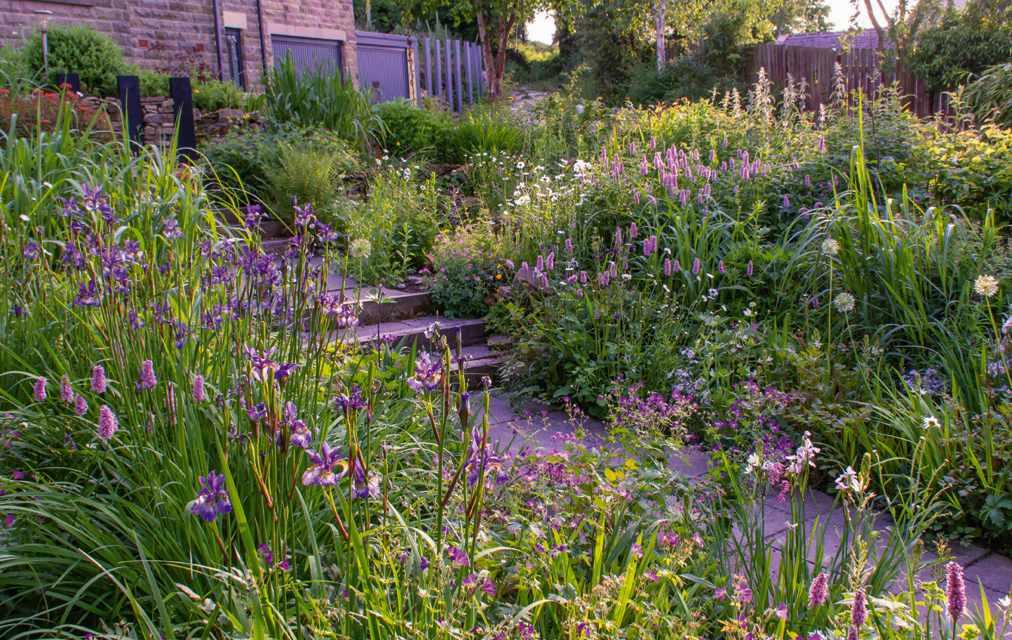






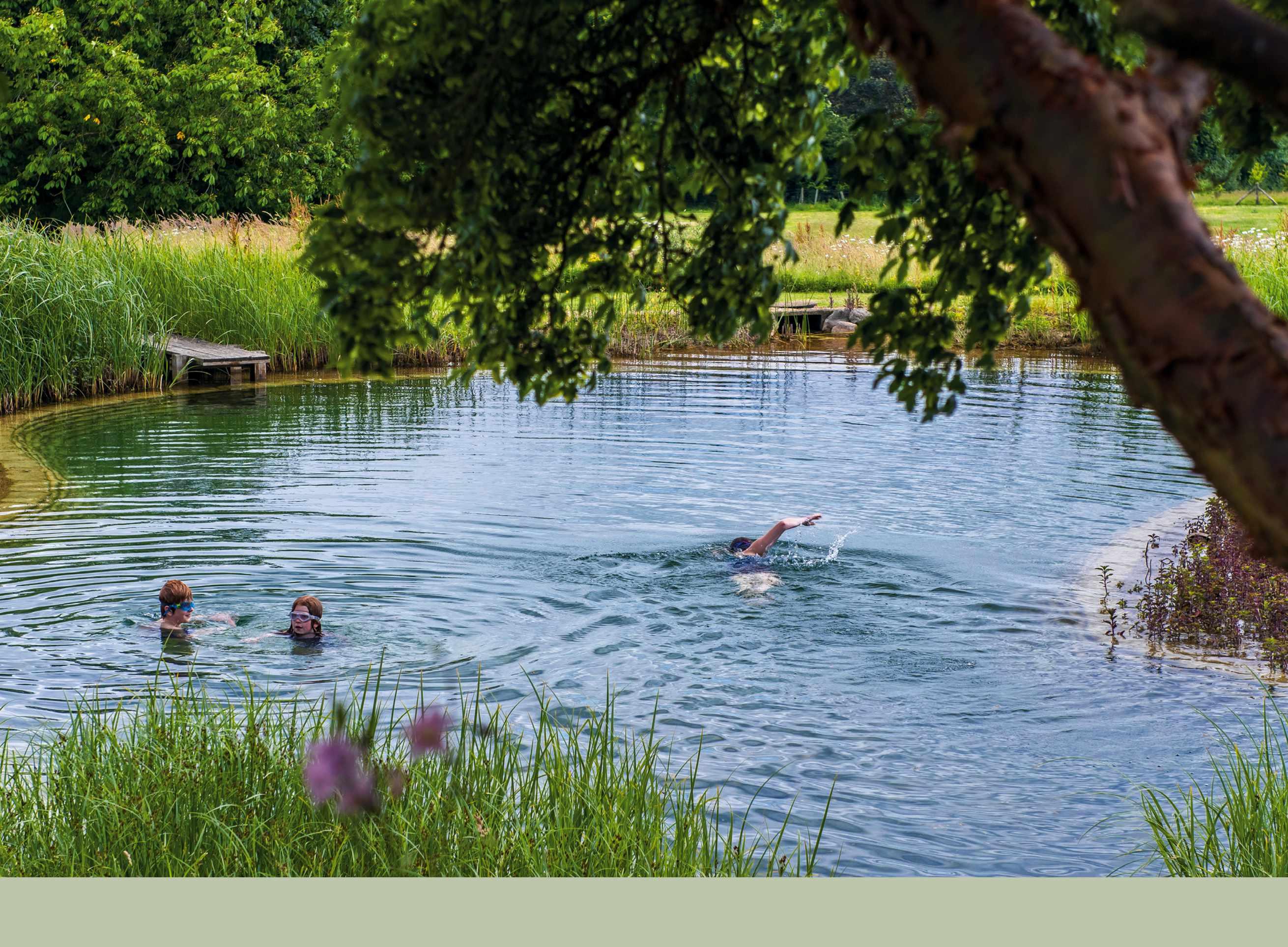

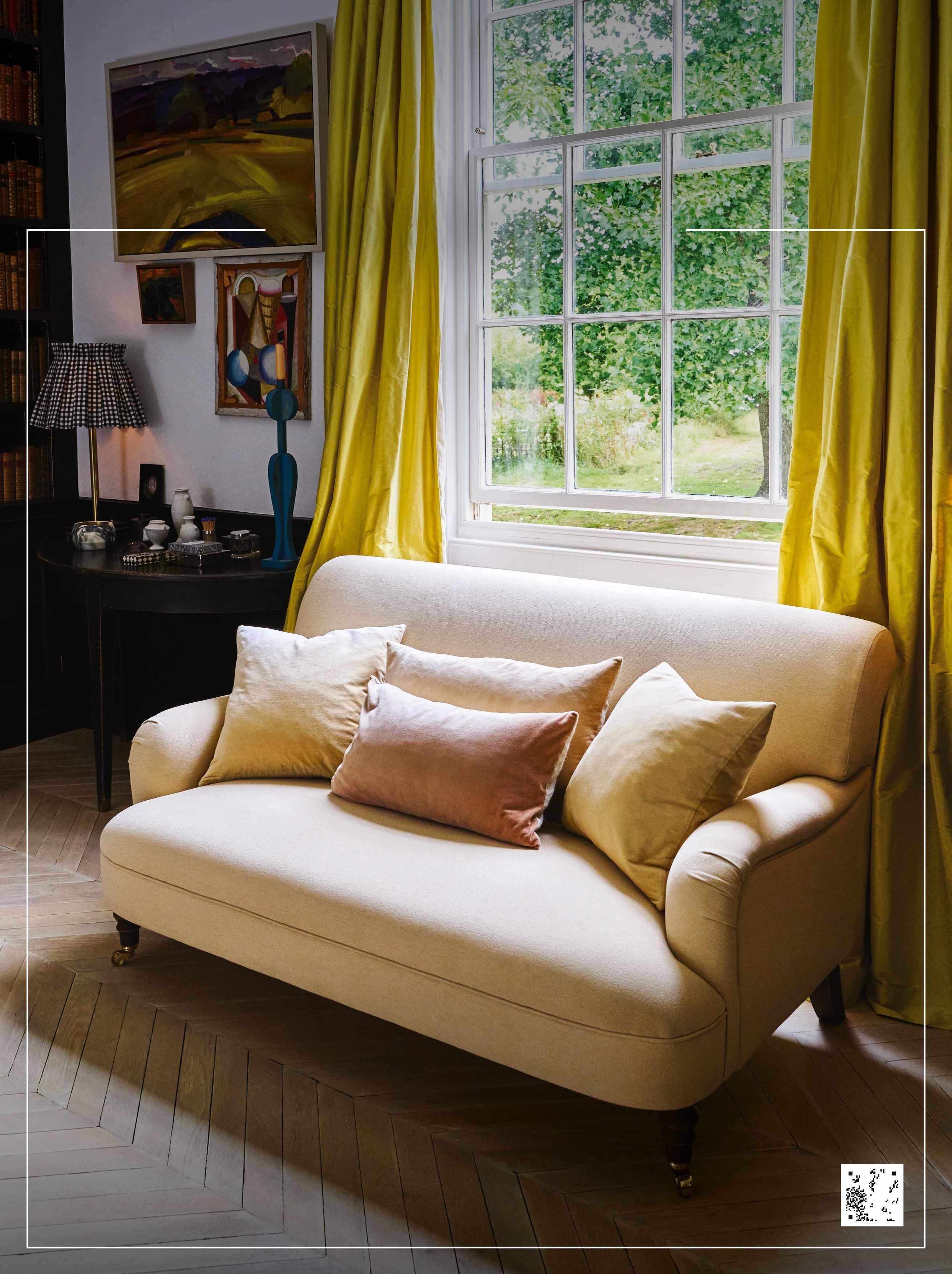
TOUR GI Reader
Artists’ Gardens of Sussex
A four-day cultural and horticultural garden tour that will explore some of the most evocative gardens of Sussex and some over the border in Kent

The concept of artists’ gardens can be interpreted in many ways, especially as the creation of all gardens can be considered an art form. For this tour, we’re homing in on gardens that have been owned or created by many different artists, examining how these gardens play a role in the artist’s work. We’ll visit Monk’s House, where Virginia Woolf penned many of her novels in the garden writing lodge, and nearby Charleston, the country home of her painter sister Vanessa Bell and Duncan Grant where the Bloomsbury Group gathered and found inspiration in its beautiful gardens. We also visit the gardens of contemporary artists, including Balmoral Cottage, where we explore how Charlotte Molesworth’s topiary work has influenced her paintings, Fairlight End with its wildflower meadows that provide Robin Hutt with the plant material for her extraordinary photographs, and Sussex Prairie Garden where boldly planted swathes of perennials are interspersed with modern sculptures. Our base throughout the tour will be Ockenden Manor Hotel, a charming and tranquil Elizabethan Manor House that offers good food and warm hospitality, as well as a new spa and swimming pool.
30 MAY 2 JUNE 2023
EVENT DETAILS
Price per person, based on two people sharing, is £3,250 (a single supplement of £190 is levied by the hotel).
The price includes three nights’ dinner (with wine), bed and breakfast accommodation at Ockenden Manor, plus four lunches as stated in the itinerary and transport from Haywards Heath railway station. Please note that Boxwood Tours uses hotels of character featuring a variety of rooms and styles. The price does not include extras at the hotel, or travel insurance. For more details and for an in-depth itinerary with details of day-to-day visits, meals, etc, please contact Boxwood Tours.
FOR INFORMATION AND BOOKING, PLEASE CONTACT
Boxwood Tours, 1 West Street, Buckingham HK18 1HL, UK. Tel +44 (0)1341 241717. Email mail@boxwoodtours.co.uk
Website boxwoodtours.co.uk
The tour has been arranged exclusively for readers of Gardens
Illustrated by Boxwood Tours Quality Garden Holidays, a specialist garden tour company set up in 1990. Please note that itineraries may be subject to change for reasons beyond Gardens Illustrated’s control. The tour is financially protected by the ATOL scheme. Please see booking conditions for further information or for more information about financial protection and the ATOL Certificate go to: arenatravel.com/why-arena/financial-protection





DIG IN
What’s new, what’s growing and what’s going on this month
Kew’s call for a new generation of artists
A new competition has launched that will give budding artists the opportunity to have their work displayed in the Shirley Sherwood Gallery at the Royal Botanic Gardens, Kew. The Young Botanical Artist competition invites 16-25-yearolds to submit 2D botanical artworks depicting trees – it could be an entire tree, a leaf, a bud, a branch or a moss-coated trunk, as long as the work depicts a part of a tree that has inspired the artist. There will be two age categories (16-18 and 19-25), and within each category, one winner will receive £750 and two highly commended artists will each receive £250. All the shortlisted works will be showcased in an exhibition at the Shirley Sherwood Gallery. Entry closes on 30 November. For more information, visit shirleysherwood.com

News
COMPILED BY MOLLY BLAIRA LIFE WELL GARDENED
From newspaper clippings, to photographs, personal notes and letters, renowned plantswoman Beth Chatto kept everything. In 2015, she deposited her archives at the Garden Museum on long-term loan. Project archivist Jane Harrison has spent the past two years researching this archive – 6,000 documents in total –and in a recent edition of the Garden Museum Journal shares an in-depth collection of stories that show the remarkable contribution of Beth Chatto to horticulture throughout her lifetime. Garden Museum Journal no.40 (£10) is available to purchase at gardenmuseum.org.uk

ART ON DISPLAY
There’s a chance to view work by Dianna Jazwinski, garden, plant and floral photographer and regular contributor to Gardens Illustrated, at the Affordable Art Fair in Battersea this month.

Dianna is known for her dramatic compositions of seasonal flowers on black backgrounds, creating eye-catching pieces using all manner of plants from hellebores to dahlias. Dianna, who exhibits at Will’s Art Warehouse, is one of the artists selected by the gallery to showcase her work at the popular contemporary art expo. You will find Dianna’s work at the Will’s Art Warehouse stand. The fair takes place from 20-23 October and you can book tickets at affordableartfair.com
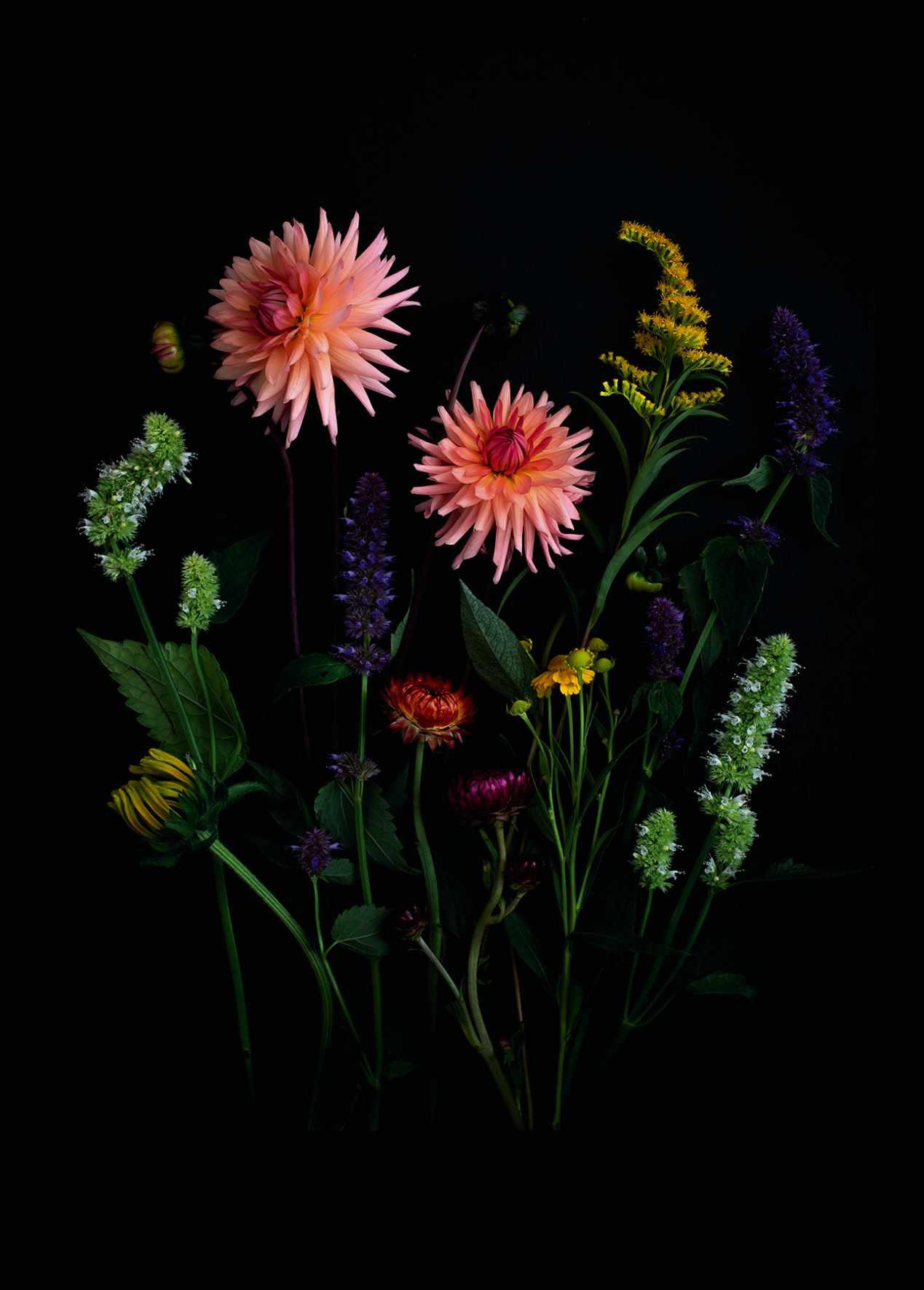 BETH CHATTO EDUCATION TRUST
DIANNA JAZWINSKI
BETH CHATTO EDUCATION TRUST
DIANNA JAZWINSKI
Bird-friendlier feeders
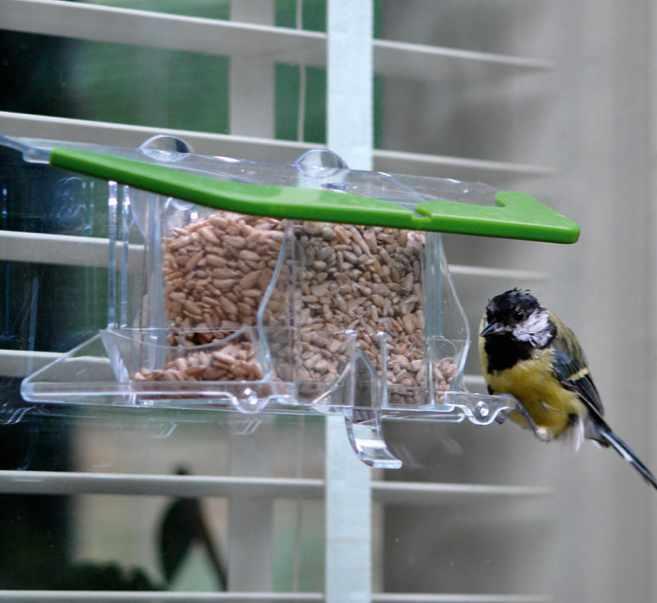
Finches Friend, which produces bird feeders designed to protect garden birds from the spread of diseases, has launched a new product that allows you to watch birds up close while they feed safely at the window. To celebrate the launch, Finches Friend is offering five Gardens Illustrated readers the chance to win one of its new Cleaner Window Feeders (worth £23.95). For details of how to enter the competition head to gardensillustrated.com/finchesfriend
Reduce, reuse, recycle
Thanks to a new collaboration with wastemanagement company Veolia and garden product manufacturer Miracle-Gro, you can now return empty, cleaned compost bags to any of the 69 large Dobbies garden centres around the country. With 100 million plastic bags being used for compost, soil and chipped bark each year, and packaging historically difficult to recycle, the scheme is a welcome one. Returned bags will be processed into new products, including garden furniture and plastic films. Read more at gardensillustrated.com/recyclingscheme

Ponds with benefits
Garden writer Lia Leendertz’s annual guide to the year, The Almanac: A Seasonal Guide, is now available for 2023. The theme for the upcoming edition is the patterns of the solar system and the zodiac. The guide also follows the micro-world of the garden pond through the seasons, from tadpoles to fallen leaves, and includes ways of connecting with the seasons using resources such as moon-phase charts and tide timetables. For Lia’s tips on why it is important to have a pond in the garden, head to gardensillustrated.com/pondbenefits

Autumn sparklers
Along with the welcome opportunity to explore its magnificent autumnal walks, a visit to Exbury Gardens in the New Forest this month offers a chance enjoy a dazzling display of nerines. Nerine sarniensis, also known as jewel lilies, have iridescent petals that catch the light. Exbury’s collection, begun in the 1920s by banker, politician and horticulturist Lionel de Rothschild, now boasts more than 900 different shades, from oranges and scarlets to the more newly developed purples, pinks, coppers and bronzes. Many of the new hybrids are available to purchase at the exhibition, which is open 10am-5pm and included in entry to the gardens (£11). exbury.co.uk

3 FOR THE GARDEN… BULB PLANTING TOOLS
ASH HANDLE
Sneeboer Timber
Bulb Planter, £110 95, Harrod Horticultural, 0333 400 6400, harrodhorticultural com

AFFORDABLE
Essentials Long Handle Bulb Planter, £25 38, Faithfull Tools, 0800 977 4242 toolbank com

COMPACT
Bulb Planter, £34.95, Sarah Raven, 0345 092 0283, sarahraven.com
DIARY: OCTOBER
COMPILED BY MOLLY BLAIR AND ANNIE GATTI
1 The Foraged Autumn Wreath
Learn how to make an autumn wreath, using materials foraged from the garden, in an online workshop with Georgie Newbery of Common Farm Flowers in Somerset. 7 October, 5pm. £35. Tel 01963 32883, commonfarmflowers.com
2 Ferment the Seasons
Fermentation guru Rachel de Thample leads this workshop in transforming seasonal ingredients into gut-friendly ferments. The day includes a two-course lunch featuring fermented foods. 9 October, 10am-5pm. £245. River Cottage HQ, Trinity Hill Road, Axminster, Devon EX13 8TB. Tel 01297 630300, rivercottage.net
3 Design Your Own Garden – LCGD
Denmans Garden, home of the late garden designer John Brookes, is the inspiring venue for a practical, four-day course on how to develop your own garden, whether starting from scratch or refreshing the existing one. Led by Andrew Wilson and Andrew Fisher Tomlin of the London College of Garden Design, it is held on Mondays between 10 October and 7 November, 10am-4pm. £595. Denmans Garden, Denmans Lane, Fontwell, West Sussex BN18 0SU. Tel 01483 762955, lcgd.org.uk
4 Magnificent Pots with Sarah Raven & Arthur Parkinson
Learn how to create superb displays in pots on this one-day course with Sarah Raven and Arthur Parkinson. The day includes a two-course lunch. 11 October, 10.30am-3.30pm. £175. Barns & Yard at Hanley Hall, Gilbert’s End, Hanley Castle, Worcestershire WR8 0AS. Tel 0345 092 0283, sarahraven.com

5 Border Renovation
After a hot, dry summer, border renovation is a task that many gardeners might need to think about this year and the Norfolk School of Gardening’s one-day course should provide plenty of ideas. 12 October, 10am-3pm. £85. Ketteringham Hall, Church Road, Ketteringham, Wymondham, Norfolk NR18 9RS. norfolkschoolofgardening.co.uk
6 Hidden Gems Sale
Luxury garden furniture maker Gaze Burvill is hosting a ‘hidden gems’ sale, offering one-off development pieces and ex-display items. There will also be an opportunity to take a tour of the workshop. 14-15 October. Gaze Burvill, Lodge Farm, Gosport Road, East Tisted, Alton, Hampshire GU34 3QH. eventbrite.co.uk
7 Lucian Freud: Plant Portraits
Starting in mid-October at the Garden Museum, a new exhibition will delve into Lucian Freud’s paintings of plants and gardens and show how they were integral to his work. 14 October – 5 March 2023, 10am-5pm. £14 entry to museum. Garden Museum, 5 Lambeth Palace Road, London SE1 7LB. Tel 020 7401 8865, gardenmuseum.org.uk
8 National Alpine Garden Show
Hosted by RHS Harlow Carr, the Alpine Garden Society is showcasing the best varieties of alpines. Specialist growers will be on site selling plants and offering advice. 15 October, 11am-4pm. Free with garden entry (from £8.95). RHS Harlow Carr, Crag Lane, Harrogate, North Yorkshire HG3 1QB. Tel 01423 565418, rhs.org.uk
9 Botanical Art Class for Knitters
Join artist, designer and knitter Dee Hardwicke for a special botanical art class for knitters. You will be guided in creating seasonal artwork and learn to translate this into knitting charts. 19 October, 10am-4pm. £100. The Nash Conservatory, Royal Botanic Gardens, Kew, Richmond, London TW9 3AE. Tel 020 8332 5655, kew.org
10 Designing and Delivering a Show Garden
Alistair Baldwin, founder of the Yorkshire College of Garden Design, has launched a series of design courses to be held at Harewood House. Designing and Delivering a Show Garden is a two-day course led by Baldwin, with input from Matt Keightley, Pollyanna Wilkinson, Ula Maria and Mark Gregory. 1 and 8 November, 10am-4pm. £375 plus VAT. Harewood House, Harewood, Leeds, West Yorkshire LS17 9LG. ysgd.co.uk
If you love your garden then you should place a Rhino at the heart of it. Because not only is it incredibly sturdy and cleverly designed, with an unrivalled standard ëiV�wV>Ì���] Ì�i ÃÌ���Ã��V��ÃÌÀÕVÌ���� and elegant colours will ensure you have something beautiful to look at all year round.
rhinogreenhouses.co.uk 0800 694 1929


KITTED OUT
The ultimate gardenwear for keeping warm, dry and comfortable outdoors






COMPILED BY MOLLY BLAIR AND NIKI GOSS







2 FREE PANELS
INSTALLED IN 1 DAY
“ What a difference a day makes as the saying goes, and yes, that’s all it took to install.”
Mr & Mrs Barber, Wells
WARMER IN WINTER
“ There is no doubt that the conservatory is much warmer than previously, and no, the room is not darker either!”
David Birch, Chichester
USABLE ALL YEAR ROUND
“ The conservatory is now used throughout all seasons of the year and is far more comfortable to sit in whatever the weather outside.”

Mr & Mrs Gibson, Portishead
MOULD & CONDENSATION
“ This is the best thing we have done in this house. Used to run with condensation and now zero.”
Karen Thomas, Chippenham
COOLER IN SUMMER
“You could have fried an egg on the table in there in the summer, I now look upon the conservatory as a new room. It is quiet, restful and cosy.”
Carol Doyle, Surrey
ENERGY EFFICIENT

“I’ve already turned the underfloor heating down. Lovely job guys, thank you!”
Anne Bird, Bristol
QUIETER IN BAD WEATHER
“For the first time in 10 years we do not have to close the door to the conservatory when it rains, as the noise is minimal and before I found it difficult to hear the TV over the loudness of the rain on the old roof.”
Mr & Mrs Bailey-Webb, Warsash

“What a difference a day makes as the saying goes, and yes, that’s all it took to install.”
Mr & Mrs Barber, Wells
GA R DENS





SYMPHYOTRICHUM LATERIFLORUM VAR. HORIZONTALE
I fell in love with this on my first trip to Great Dixter, back when Christopher Lloyd was full of energy and it was still an aster. It was a misty morning and the sight of it used as a low hedge, with a backdrop of topiary and late-season perennials was literally life changing. Profusions of white flowers with pink centres make a stunning show but its structure of horizontal, branching stems is possibly its greatest asset. These look good throughout the winter and should be cut down to the ground at the very start of spring. AGM*.
Height and spread 1m x 1m.
Origin Eastern and central North America. Conditions Most garden soils; full sun or part shade.

Hardiness RHS H7, USDA 4a-8b†
Season of interest September – February.
October plants
WORDS TOM COWARD PHOTOGRAPHS JASON INGRAM
MESPILUS GERMANICA ‘NOTTINGHAM’
Medlars are among the most attractive and underrated fruit trees and are a good choice for a small garden. This particularly good-flavoured form has a slightly scruffy, yet charming habit, with large, very attractive blossom in spring. Medlar’s autumn colour is perhaps the best of any fruit tree and the rose hip-like fruits are ornamental in their own right; they should be picked as soon as they start to ripen then left in the fruit bowl for a few days to ‘blet’, which will result in a sweet and juicy fruit to be enjoyed raw or turned into a delicious jelly. AGM.
Height and spread 4m x 4m.
Origin Garden (species Iran and Black Sea coast).
Conditions Fertile soil; full sun.
Hardiness RHS H6, USDA 5a-8b.
Season of interest Year round.
CROCUS SPECIOSUS
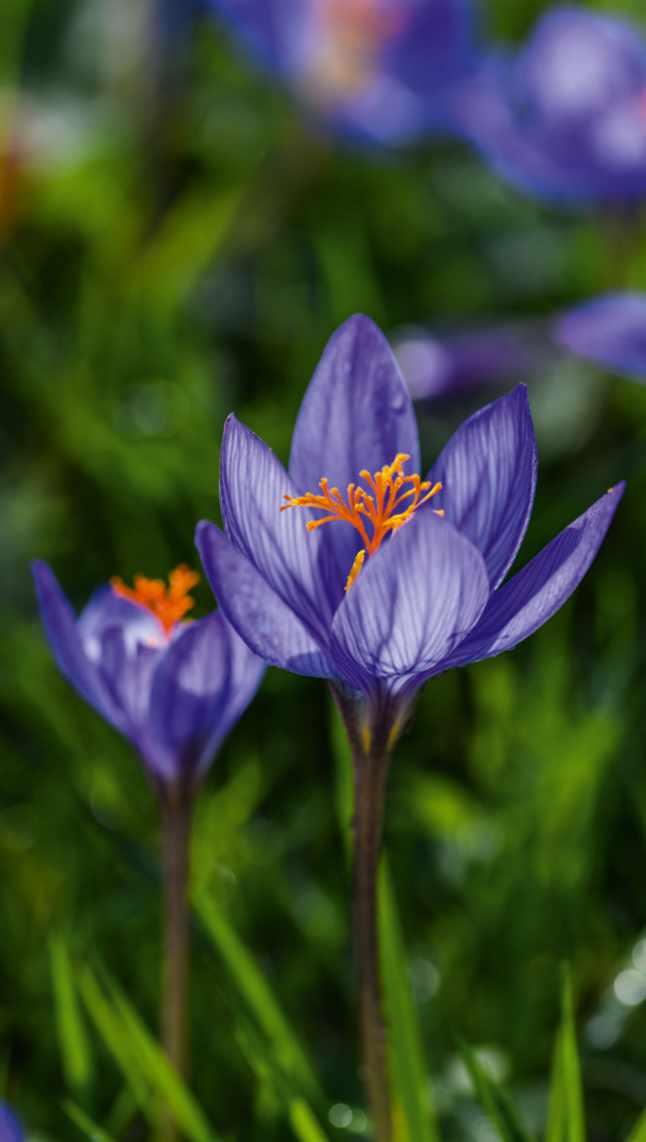
This is a wonderful autumn-flowering crocus that deserves to be planted more often. Its striking flowers appear throughout September and October, sporting the most gorgeous, delicately veined, blue-mauve petals. It will work well dotted through the front of a border, and is also fun grown in a terracotta pot to be shown off by the door. But it is possibly most exciting when naturalised in a meadow. At Gravetye we have the most wonderful display that times perfectly just after the hay is cut and is clearly spreading itself by seed – a true sign of a happy plant. AGM.
Height and spread 10cm x 10cm.
Origin Turkey, northern Iran and Crimea. Conditions Will tolerate damp soil but not waterlogged soil; sun or part shade.
Hardiness RHS H6, USDA 3a-10b. Season of interest September – October.
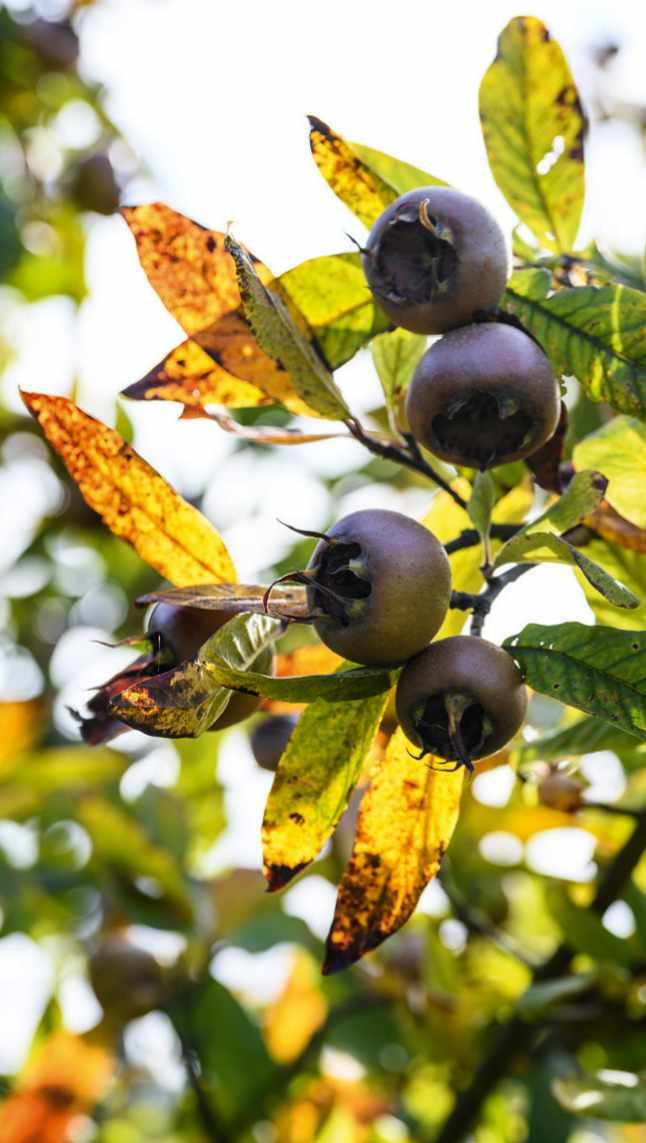
SALVIA LEUCANTHA

Many of the New World salvias have the most wonderful long-flowering season and S. leucantha is no exception, blooming throughout summer and deep into autumn with arching branches bearing the most extraordinary furry, purple and white flowers. Unfortunately, this lovely thing is tender but worth lifting and overwintering in a frost-free greenhouse. Cuttings are easy to root and best taken in July to make a good flowering plant the following year. Makes an excellent combination alongside the red Helenium ‘Moerheim Beauty’. AGM.
Height and spread 1m x 1m.
Origin Mexico.
Conditions Moist but well-drained soil; full sun, sheltered position (may be hardy through winter if not too cold or wet).
Hardiness RHS H2, USDA 8a-10b. Season of interest May – November.
As autumn tightens its grip on the garden, Tom finds pleasure in a medlar’s mellow fruitfulness and a long-flowering aster that helps lift the spirits on misty morningsTom Coward is head gardener at Gravetye Manor in West Sussex gravetyemanor.co.uk
GARDENDESIGN TRAININGFOR PROFESSIONALS

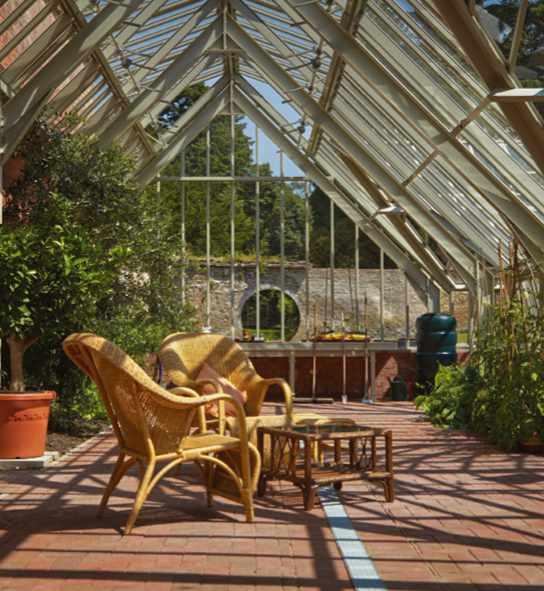
Findoutmoreaboutour inspirationaltrainingatRoyal BotanicGardensKew,RHSGarden Wisleyandonline.

OurDiplomaandProfessional Developmentprogrammesare availableonlineinreal-timeclassesas wellasatourhomeinRoyalBotanic GardensKew.In2022wealsohave shortcoursesforprofessionalsand gardenenthusiastsatRHSWisley Garden,DenmansGardenandonline.



Visitourwebsite lcgd.org.uk tohear howourstudentsarecreating successfulgardendesigncareersand discoveranever-changingrangeof coursesforthegardenenthusiast.
+44(0)1483762955info@lcgd.org.uk
LIQUIDAMBAR STYRACIFLUA
The highlight of this season is of course the stunning colours before the trees drop their leaves. There are so many wonderful plants to select for this moment but if I could pick only one it would have to be the sweet gum. It is sometimes confused with a maple tree but easily distinguished by its alternate leaves (maples are always opposite). The tree we have at Gravetye consistently gives us the longest autumn display of any tree. There are many named selections but this specimen continues to be the best I have ever seen. Can be easily propagated by layering.
Height and spread 12-18m x 8m.
Origin Eastern USA.
Conditions Slightly acid soil; full sun to part shade.
Hardiness RHS H6, USDA 5a-9b.
Season of interest October – December for the autumn colour.
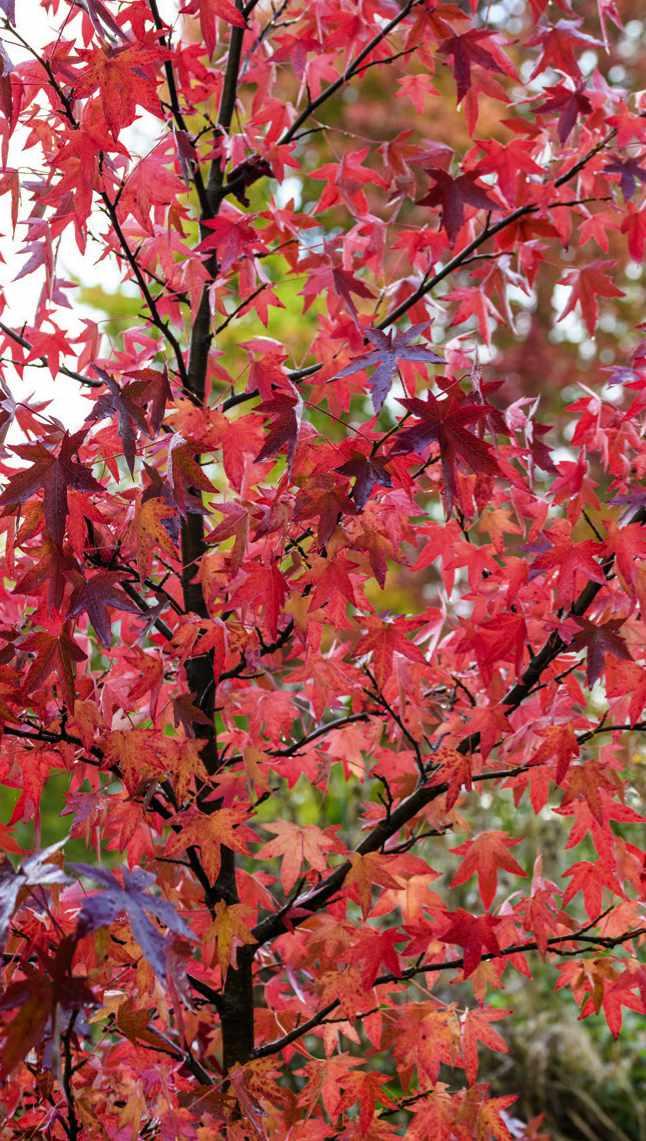
Places to visit
Tom’s recommendations for places to see seasonal plants at their best
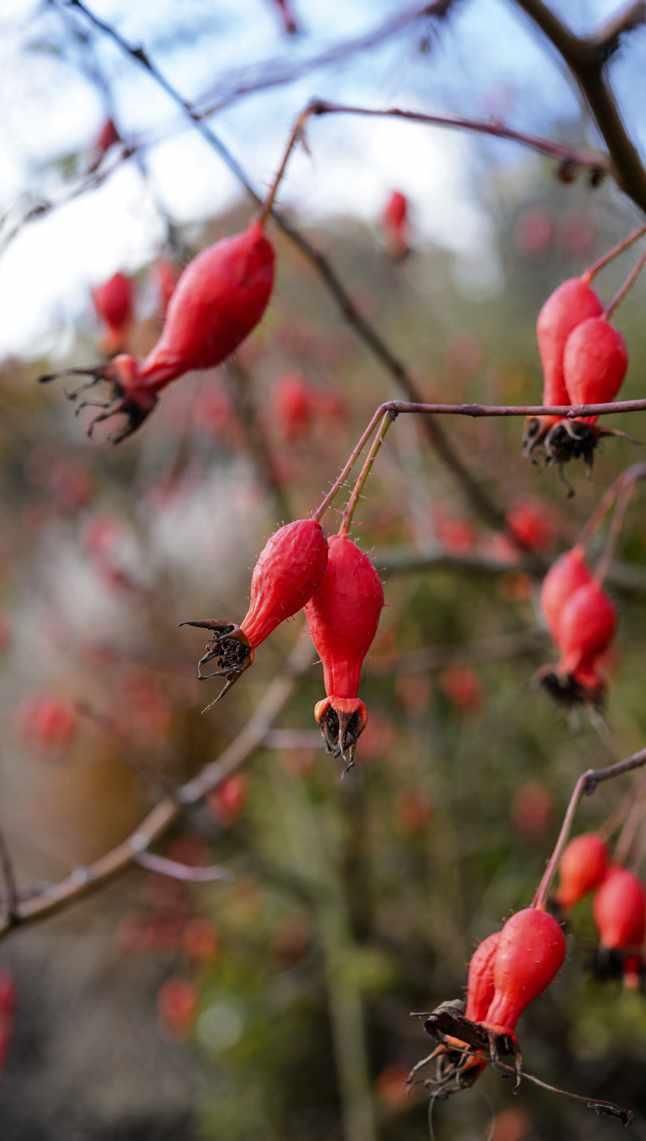
Be sure to check opening times. Some garden visits may need to be pre-booked.
MISCANTHUS NEPALENSIS
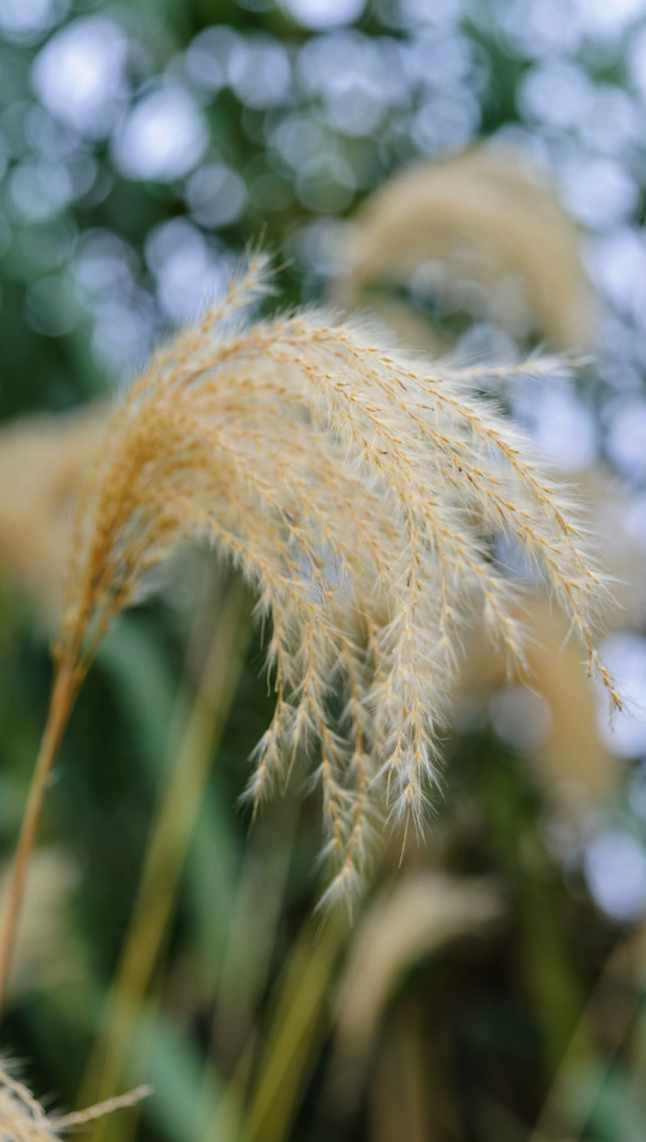
This is a grass that has real elegance and magic all of its own. Through most of the season it is quite inconspicuous, making a neat clump of lush, green foliage but in late summer it starts producing its beautiful, delicately silky, cream-coloured flower plumes that fade to bronze. These are borne on stiff, arching stems that can withstand the weather and will continue looking good until the very start of spring when it can be cut back. We seem to get best germination by laying the entire seedhead on the compost.
Height and spread 1m x 1m.
Origin Pakistan to south-central China. Conditions Well-drained soil; full sun and sheltered spot.
Hardiness RHS H6, USDA 4a-9b. Season of interest September – March.
ROSA ‘GERANIUM’
A hybrid of R moyesii, which Gravetye’s creator William Robinson described in 1894 as ‘the most startlingly beautiful wild rose that has come to us for many years’. It continues to be one of best species roses available, and works well in a border or against a wall. Best of all is its large, pear-shaped hips that colour bright red and remain deep into winter. Flower colour is variable within the species, from soft pink to red, but this hybrid, raised at Wisley in 1938, has excellent orangey-red coloured flowers and is slightly more compact. AGM.
Height and spread 2m x 2m.
Origin Garden (western China and Tibet).
Conditions Moist but well-drained soil; full sun to part shade.
Hardiness RHS H6, USDA 4a-9b. Season of interest August – February for hips; June for flowers.
Merriments is a charming garden centre/nursery in East Sussex with a hidden gem of a garden, and it has been a source of inspiration for many years. Four acres of perennials, exotic plantings, trees and shrubs showcase the plants to their best advantage. As well as being a beautiful garden, Merriments has become a centre for learning and it has given us
great pleasure to send one of our apprentices there to study for his RHS Level 2. Every time he comes back he wants to try a new plant. Hawkhurst Road, Hurst Green, East Sussex TN19 7RA. Tel 01580 860666, merriments.co.uk
After working in hotel gardens for many years I’ve realised that the experience of visiting and enjoying them is unique.
This kind of garden presents several challenges to the gardener and few gardens have risen to these as well as the landscape created by Raymond Blanc and head gardener Anne Marie Owens at Le Manoir aux Quat’Saisons. This is a garden that expresses the personality of its owner so well and the attention to detail throughout is an inspiration. The vegetable
production is wonderful and is displayed on the menu with a beauty of its own. Most exciting for me is the beautiful and ambitious orchard, first planted in 2011 and documented in Blanc’s book The Lost Orchard. The orchard is now approaching its prime, and October is the perfect time to see the fruit Blanc is producing. The lunch isn’t bad either. Church
AMICIA ZYGOMERIS
Known as the yoke-leaved amicia, this woody-based perennial is an exoticlooking character from the pea family with gorgeous heart-shaped leaves in pairs on purple petioles and purplegreen bracts making a magical foliage plant. The large, yellow flowers are produced at the end of summer as the cherry on top of the cake. Such a tropical-looking plant could be assumed to be tender but it has shown itself hardy down to -10°C. In cold winters it will die back to the base and reshoot in spring. We have had best results from cuttings taken in August.
Height and spread 2m x 2m.
Origin Mexico.
Conditions Well-drained soil; full sun in a sheltered spot.
Hardiness RHS H4, USDA 7a-9b.
Season of interest June – November.
BISTORTA VACCINIIFOLIA
This lovely perennial forms a low, creeping mound of tiny, glossy, ovate leaves that in late summer and throughout autumn are covered in small, pink flower spikes. Although it creeps, it is a plant that will never get out of control and makes an excellent groundcover around shrubs and at the front of a border. We have an especially pleasing clump that trails over a wall where the flowers work well with the Mexican daisies around it. In autumn its foliage develops bright-red colour, with gold tints later in the season. AGM.
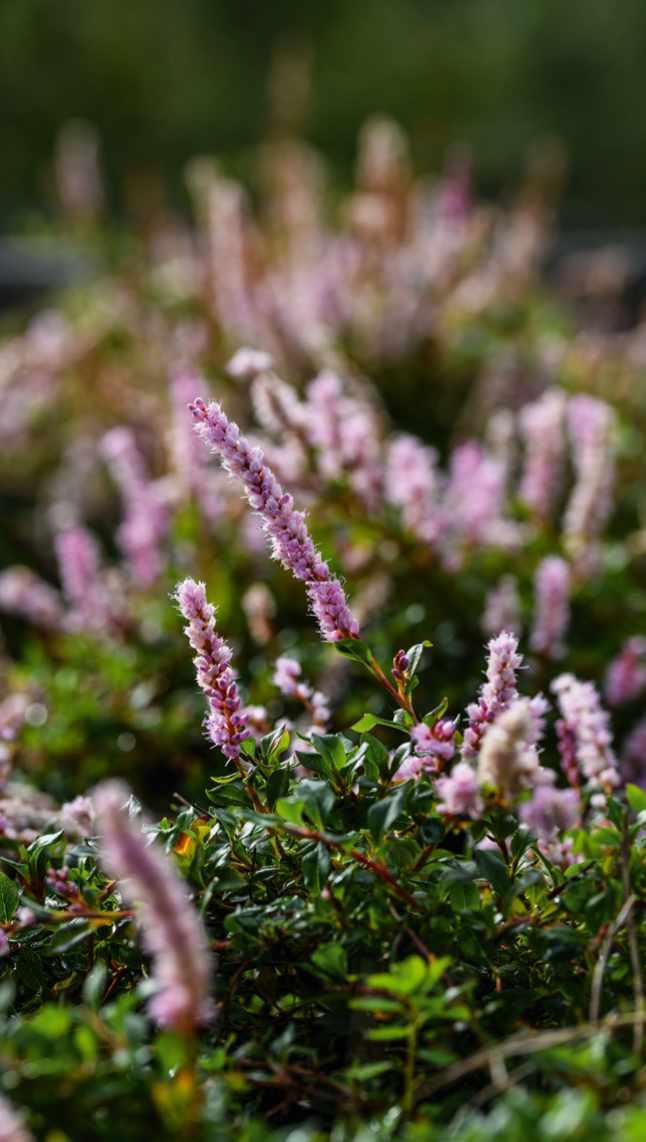
Height and spread 30cm x 1m. Origin Tibet and western China. Conditions Most garden soils; full sun or part shade.
Hardiness RHS H7.
Season of interest August – November.
MOLINIA CAERULEA SUBSP. ARUNDINACEA ‘TRANSPARENT’
A wonderful native grass that, as its name suggests, creates a beautiful transparent haze of flowers at the end of summer. It’s a grass that will work well at the front of a border, adding an extra dimension to the planting and it brings you in contact with the garden as you brush past. In the autumn it colours up to a wonderful gold, although it will usually collapse in December. Our plant self-seeds quite freely around the garden and there is nothing quite like seeing a plant happily growing where it has put itself. AGM.
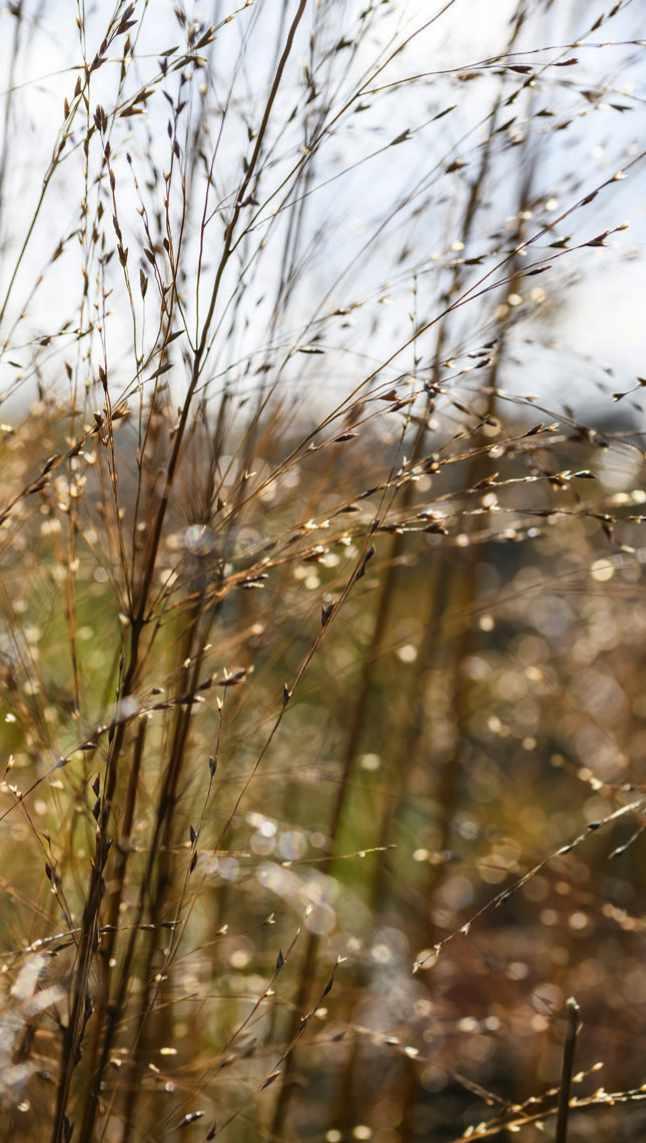
Height and spread 2m x 1.5m.
Origin Europe, Caucasus, Turkey.
Conditions Moist but free-draining, acid to neutral soil; full sun or part shade.

Hardiness RHS H7, USDA 5a-8b.
Season of interest August – December.
Road, Great Milton, Oxfordshire OX44 7PD. Tel 01844 278881, belmond.com
There are many wonderful spots in the UK to see fine autumn colour but every plant lover should try to see the New England fall at least once. I’ve been lucky enough to visit this magical region several times though sadly, always out of season. Connecticut has many
wonderful gardens but Hollister House Garden should be on any list. It was established by George Schoellkopf in 1979 with the inspiration brought back from some formative years in England. Great gardens, such as Sissinghurst, Great Dixter and Hidcote, were at the front of his mind as he started this labour of love. With the artistic input of his partner Gerald Incandela,
and over 40 years of hard work, the garden has developed to a masterpiece where wild contrasts with formality to perfection. An example of New England gardening, from which old England could learn a lot. 300 Nettleton Hollow Road, Washington CT 06793, USA. Tel +1 860 868 2200, hollisterhousegarden.org
In the northeastern corner of Connecticut is
a private 20-acre estate called Robin Hill that UK designer Dan Pearson has been working on for the past ten years. Managed by head gardener James McGrath, this garden shows what can be achieved when owner, gardener and designer come together. This lush landscape uses an intelligent style of wild gardening where the abundant local flora
mingles with exotics and celebrates the surrounding landscape. Terraces, a cutting garden, orchard, moss garden and woodland garden blend together as one. Of special interest is a carefully managed New England meadow that can be viewed from the terrace of the house. It’s a private garden but you can arrange a visit by emailing james. robinhill@gmail.com


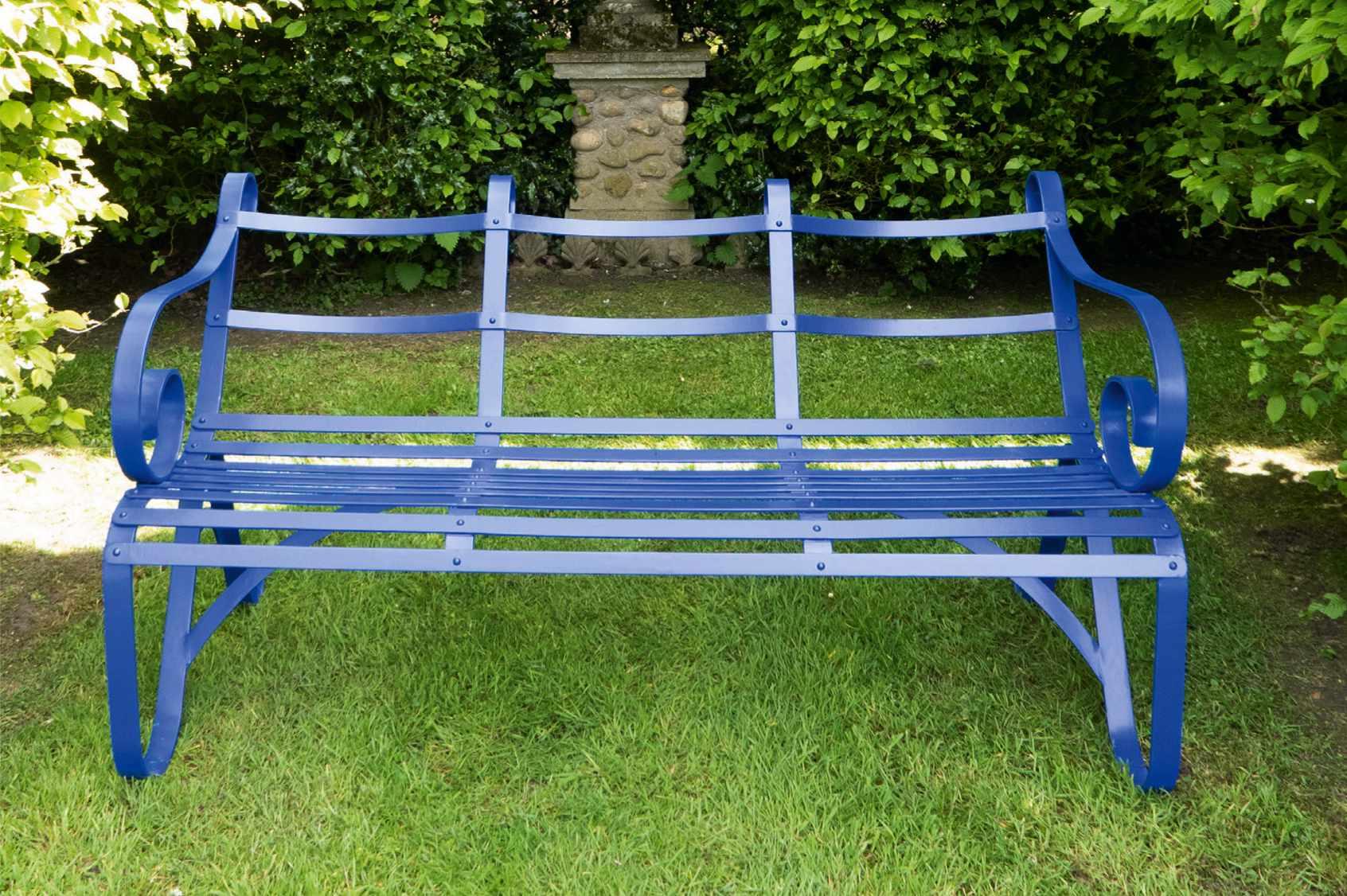
THE CONSTANT GARDENER
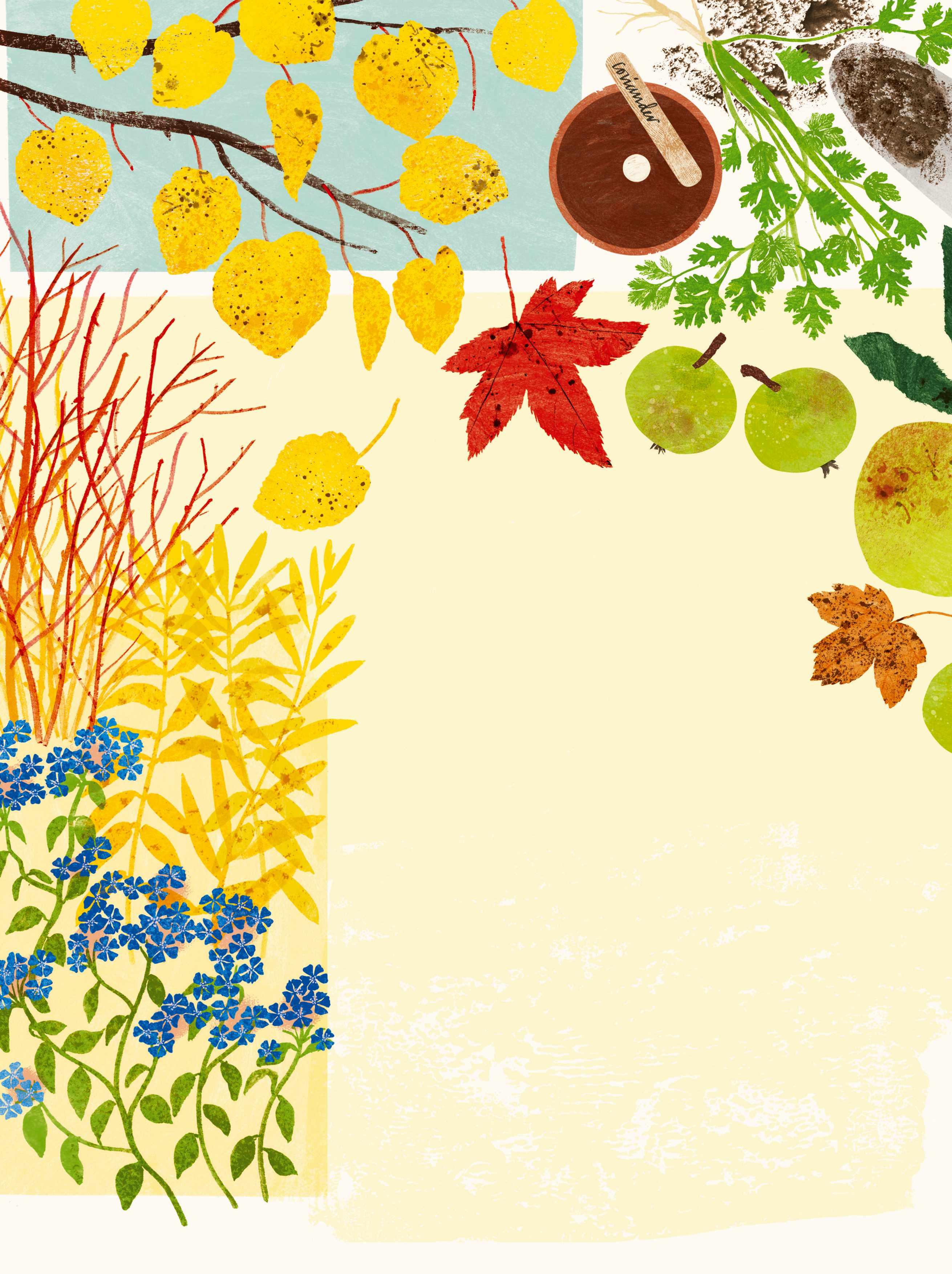
As days get shorter and cooler, Benjamin loves to pair richly coloured foliage with blue and grey tones, and starts to look forward to spring by adding bulbs to borders and meadows
WORDS BENJAMIN POPE ILLUSTRATION CLAIRE HARRUPOctober is a month of change, as summer departs to make way for autumn. Deciduous plants respond to cooler evening temperatures and shortening days by preparing for leaf fall, reducing the green pigment of chlorophyll in their leaves to reveal a blaze of yellow and orange carotenoids and red anthocyanins. I love to see the changing colours both in the garden and wider landscape, and despite the premature leaf drop this year (due to drought stress) there is still much to enjoy. Among the first to change for us are the acers. Acer japonicum ‘Aconitifolium’ and A griseum are my favourites, along with the vibrant Koelreuteria paniculata ‘Coral Sun’. Cercidiphyllum japonicum turns a golden buttery yellow with peachy tones, as does its darker-leaved cultivar ‘Rotfuchs’, both earning the common name candyfloss tree, as the leaves fall with a sweet toffee-apple aroma following a frost.
Shrubs and herbaceous perennials also have something to offer, dark-leaved cotinus and physocarpus enliven with scarlet tints while dogwoods and witch
hazels turn shades of honey. With the abundant array of warm colours, now is a time when blue and grey tones really stand out. Pairing Amsonia tabernaemontana with Ceratostigma willmottianum will give you canary-yellow foliage and blue flowers, add to this a winter-stemmed dogwood or Russian sage and you will be sure to continue the interest as the leaves fall.
My other love at this time of year is ornamental grasses, which work well with late herbaceous perennials, such as Symphyotrichum lateriflorum ‘Prince’. I find molinias very useful as their basal foliage remains low and tidy while the flower stems reach out to create a transparent veil. That said, Panicum virgatum and some Miscanthus cultivars, such as ‘Ghana’ and ‘Ferner Osten’, turn brilliant shades of red and orange, though I couldn’t be without the gold tassels of Miscanthus nepalensis.
Along with flowers and colour, grasses add texture and movement, which help to elevate a border or container scheme, so are always worth considering. Looking around the garden there’s lots to distract the eye and mind, but thankfully maintenance tasks are less time critical now as winter approaches.
What to sow and plant
Autumn is the perfect time for planting, with moisture and warmth in the soil to promote root growth. Container-grown plants, including trees, shrubs, roses and herbaceous perennials, can be planted now, before bareroot season begins. I also plant out any biennials, such as sweet Williams and verbascums, though if small I’ll postpone planting until early spring.
Now is also a good time to add bulbs to borders and meadows. I like to set them out in small, empty pots or old bulb nets, easily arranging them to my desired design before spreading and planting individually as loose swathes. This also helps to avoid any camouflaged individuals going unplanted.
Lifting and dividing can take place now, though of course this will involve cutting back your plants first, so I tend to leave this until spring, enjoying the winter seedheads. Early October is when I sow most hardy annuals, along with my first sowing of early sweet peas and additional winter salad leaves including chervil, pak choi, pea shoots and rocket. I also dig up some coriander, parsley and mint, so that I can grow them in pots indoors.
What to harvest and pick
Autumn is a time full of harvest with top fruit falling from the trees. Ideally, store in a refrigerator, but somewhere cool, dry and free from rodents will help. With our glut of apples, I make curried chutney or juice them, but it’s worth experimenting a little; crab apple jelly, hawthorn ketchup and rosehip syrup all have subtle flavours and are packed with vitamin C.
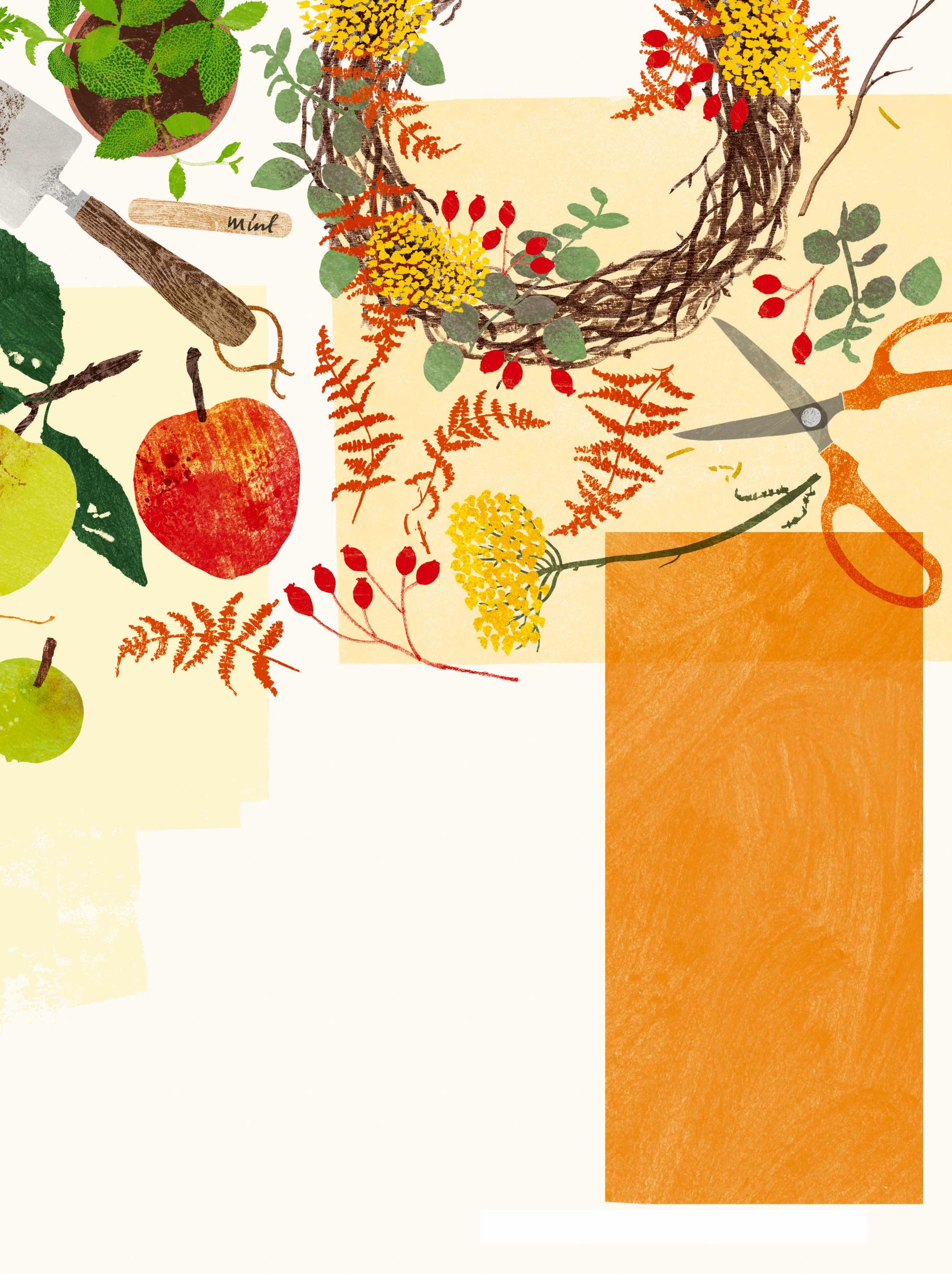
As days shorten the final ripening of fruit and vegetables becomes important; stripping leaves from tomato plants and placing winter squashes and pumpkins in the open allows as much sun as possible to sweeten and cure the fruits. In the cutting beds, dahlias and zinnias still amaze, I love pairing the giant Dahlia ‘Otto’s Thrill’ with the demure D. ‘Paradise City’, using Symphyotrichum cordifolium ‘Elegans’ as a pale-blue filler. Autumn is also a great time to make a wreath. Woven sticks with bracken and autumn foliage make a great base, while rosehips, horse chestnut casings and dried flowers (harvested earlier in summer) make good details. n
• Benjamin’s Gardens Illustrated Masterclass: Grow a year-round, productive garden is available at gardensillustrated.com
GARDEN JOBS for October
Collect leaf mould As leaves fall, collect them from paths, drives, lawns and gravel areas, storing in a pile or pen (easily made from canes and chicken wire) out of the way, where they will reward you with the most delicious leaf mould next summer –great as a potting compost or soil improver. Mulch vegetable beds As potatoes, onions and other vegetables are harvested, prepare empty vegetable beds by applying a layer of compost or rotten manure as a mulch. This will cover and protect the soil during winter, adding nutrients as it breaks down.
Protect tender plants
As the temperatures cool, bring in containergrown houseplants and tender species or alternatively protect larger permanent plants with fleece, straw, bracken or mulch. Prune rambling roses If not already done, shorten old flowering stems to strong buds and tie in any new long growth to prevent wind damage during the months to come. Plant containers for winter Plan and source plants for winter container schemes using bedding, bulbs, grasses and young shrubs, so as summer flowers fade you are ready to plant for the next season.
IN BRIEF
What Family garden designed to maximise fun and enjoyment. Where Surrey.
Size Around three acres including woodland and walled garden.
Soil Sandy and acidic. Climate Temperate. Hardiness zone USDA 9.
The terrace gives several access points into the garden, stepping down to the pond, the ‘prairie path’, and the path leading to the pool below.

THE PLACE TO BE
High on a hill just outside Reigate, Surrey, Matthew Childs has created a contemporary pleasure garden that all the family can enjoy
WORDS NATASHA GOODFELLOW PHOTOGRAPHS ALISTER THORPE
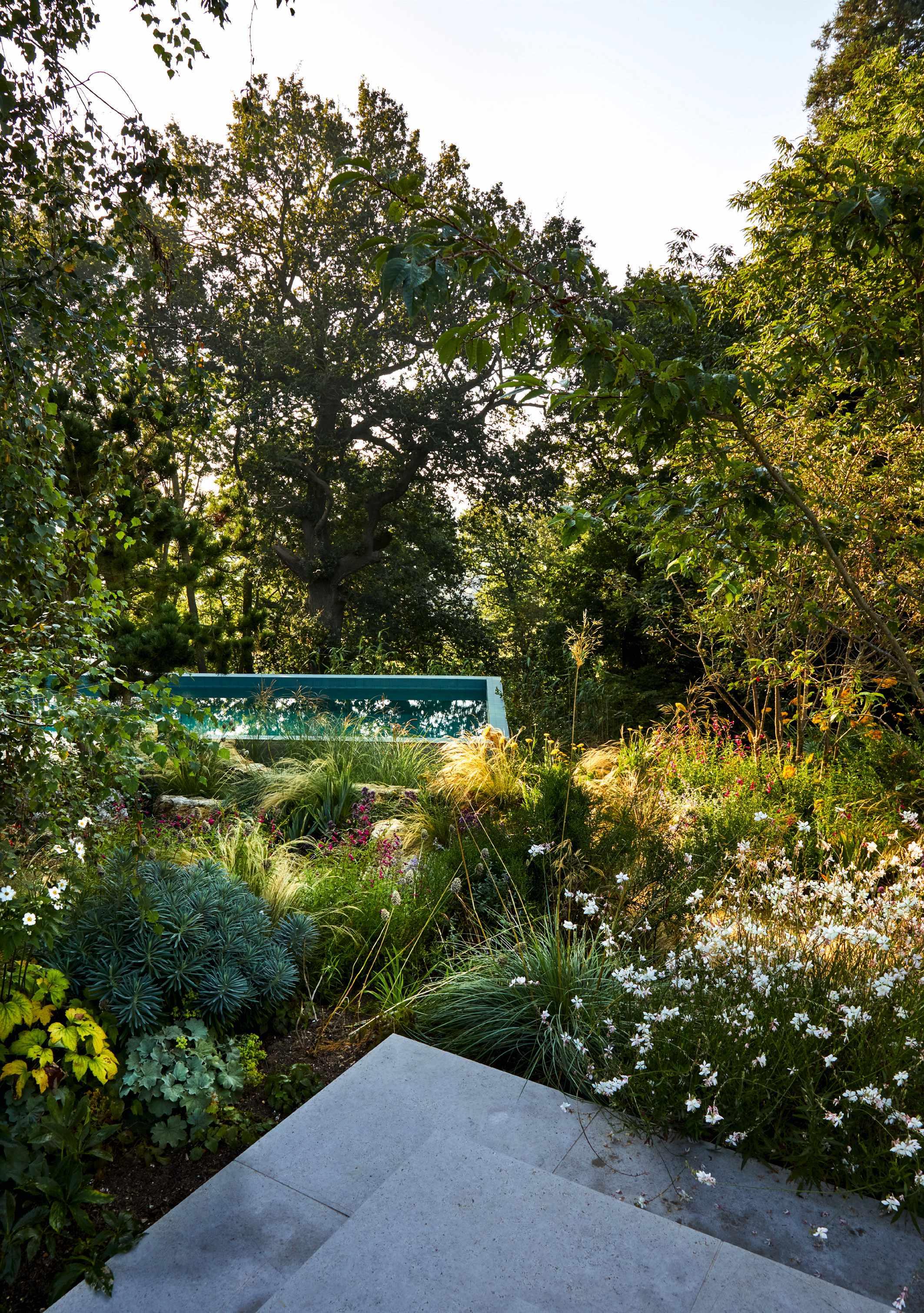
light, airy habit of plants such as Stipa gigantea and Oenothera lindheimeri ‘Whirling Butterflies’, the tall, wiry stems of which allow views through to the garden beyond.

I had this fantasy that Sid James and Barbara Windsor might have hung out here. I wanted it to again be a garden that was about funThis seating area where the family like to have breakfast is illuminated by clumps of Aster x frikartii ‘Mönch’ and Rudbeckia fulgida var. sullivantii ‘Goldsturm’. Matthew has carefully positioned the two amelanchiers around the ‘prairie path’ so that they don’t disrupt the view towards the South Downs from Jill and Chris’s bedroom window.
Designer Matthew Childs has long been inspired by the Californian landscape architect Thomas Church, and his maxim that ‘gardens are for people’, so a brief to create a garden where the whole family would enjoy spending time was for him like nectar to a honeybee. “If you can get people excited by their gardens, and give them a space that fits their needs, they’ll want to spend time there,” he says. “If they do that, they’ll nurture the garden, and as a result the environment benefits, wildlife benefits and so do they.”
The garden surrounds the bungalow of Jill and Chris Brady – originally the pool house on an estate once owned by film producer J Arthur Rank. After Jill left her job, she realised that the garden, then a series of scrubby lawns, dried-up ponds and, everywhere, the remnants of a sizeable rockery, had once been beautiful. “We hadn’t paid it any attention whatsoever,” she says, “and it just felt wrong.” To remedy the situation, the couple asked garden designer Matthew Childs to channel their dreams into a cohesive whole. Alongside the practical requests for a swimming pool, pool house and a low-maintenance garden, there was one key emotional requirement, too. “I wanted my children to want to be here,” says Jill. “And when they leave home, I want them to want to come back here.”
Matthew’s first step in designing the garden was to think about its history and how its previous owner might have used it. “Rank made all the Carry On films and I had this fantasy that perhaps Sid
The ‘prairie path’ is the hottest, driest part of the garden and has been planted accordingly with a drought-tolerant mix of herbs, grasses and perennials that includes Origanum laevigatum ‘Herrenhausen’, Stipa lessingiana, Achillea filipendulina ‘Gold Plate’ and Penstemon ‘Andenken an Friedrich Hahn’.

James and Barbara Windsor might have hung out here,” says Matthew. “You can just imagine the laughs they’d have had. I wanted it to become that kind of garden again, a garden that was about fun.”

Inspired by the garden’s original design, Matthew has incorporated not only the desired pool and pool house, but an extensive natural pondscape, a large dining terrace, a contemporary firepit area and several other more secluded seating areas. With the help of contractor Belderbos Landscapes, the Westmoreland stone that had littered the space was dismantled, laid out and then painstakingly placed, rock by rock, to build the garden. “It was like having a gold mine on site,” says Matthew.
The stone is now the most prominent hard-landscaping material, along with similarly calcareous limestone on the terrace. To balance the environmental footprint of the concrete, used in the pool and its striking cabana, designed by architectural practice Surman Weston, Matthew tried to be as sustainable as possible in other aspects. “As well as reusing all the stone, we incorporated the existing hard landscaping into the sub base of the pool and the terrace to minimise the amount of waste sent off site,” he says. Planting has played a key part too, with woodlanders enjoying the shade of the trees, and Mediterranean, drought-tolerant plants thriving on the ‘prairie path’ alongside the south-facing terrace. Though Jill had never really gardened before, she had started experimenting with growing cut flowers since she left her job and found herself becoming more and more enthused as the
8 KEY PLANTS
1 Achillea filipendulina ‘Gold Plate’ It’s easy to find spike and globe flower shapes, but achillea provides a rarer horizontal flower. 1.8m x 60cm. AGM*. RHS H7, USDA 3a-8b†
2 Oenothera lindheimeri ‘Whirling Butterflies’ Has a beautiful airiness that really does look like butterflies floating above other plants and grasses. 75cm x 45cm. RHS H4, USDA 5a-9b.
3 Aster x frikartii ‘Mönch’ A great plant for late summer and autumn with good-sized flowerheads that deliver a really strong hit of colour. 70cm x 40cm. AGM. RHS H7, USDA 5a-10b.
4 Stipa lessingiana This soft, floaty grass just begs to be touched. Can be short-lived but self-seeds vigorously, though the seedlings are easy to pull up if unwanted. 60cm. RHS H5.
5 Penstemon ‘Andenken an Friedrich Hahn’ A long-flowering plant with deep-red, bell-shaped flowers. Chop back to encourage a second flush. 90cm x 30cm. AGM. RHS H5.
6 Rudbeckia fulgida var. sullivantii ‘Goldsturm’ This cheerful yellow daisy sheds its petals to leave dark bobbles of seedheads. 60cm x 45cm. AGM. RHS H6, USDA 3a- 9b.
7 Miscanthus sinensis ‘Gracillimus’ This lovely grass is great for adding movement to a planting. The splash-like seedheads are a nice link with a water feature. 1.3m x 1.2m. RHS H6, USDA 5a-9b.
8 Verbena rigida A magnet for pollinators, it provides a vivid purple haze from June to September. 60cm x 40cm. RHS H3.
*Holds an Award of Garden Merit from the Royal Horticultural Society. †Hardiness ratings given where available.
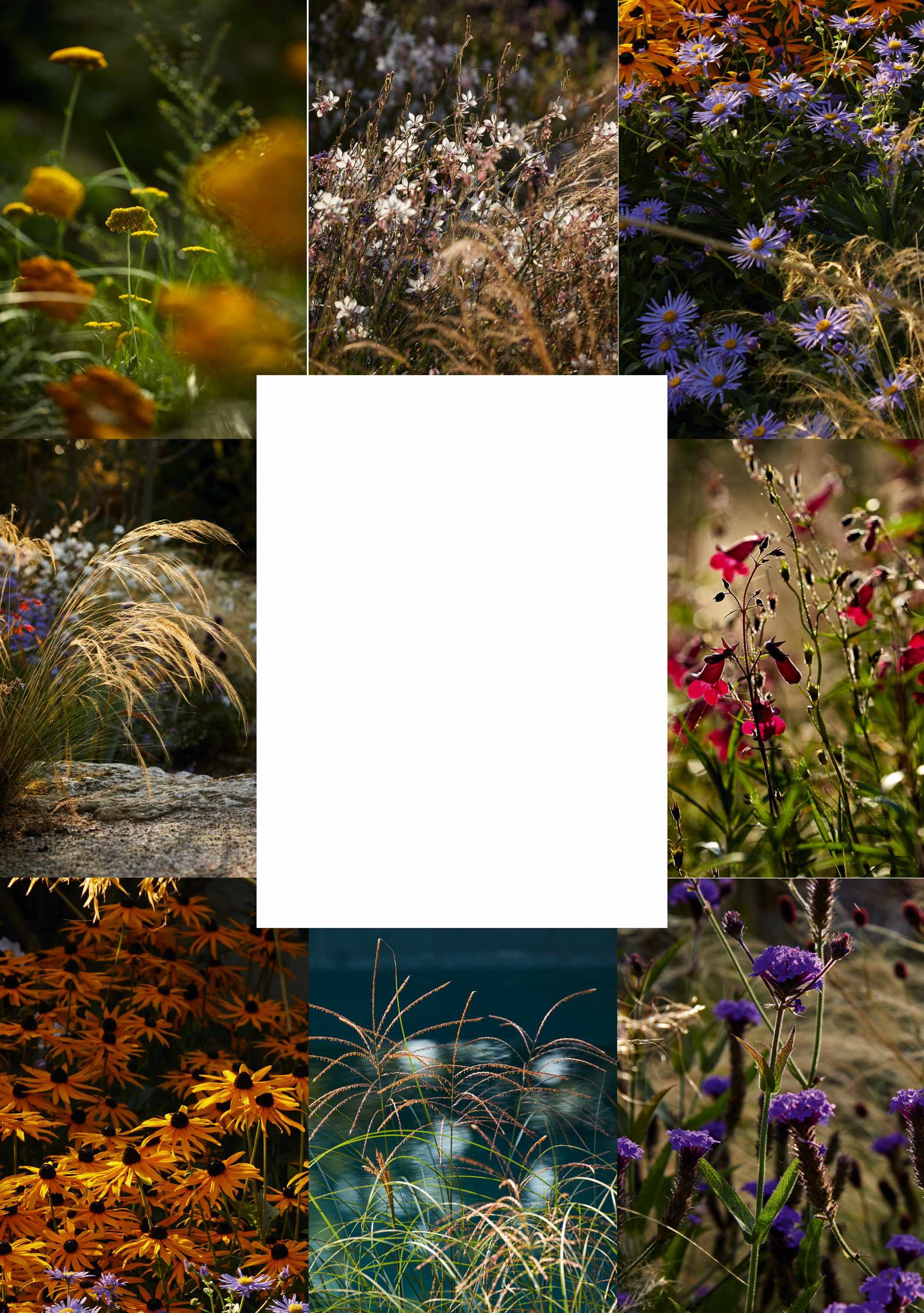
To help the garden blend with the wooded landscape around, and to add evergreen interest and structure, Matthew has added a number of conifers including a large Pinus

to help balance
garden project progressed. “Before long, I’d asked Matthew to design a cutting garden in our walled garden too,” she says. It is here, among the raised beds chock-full of dahlias, lavender, cosmos and other annuals, that Jill now spends most of her time, growing and picking plants for her new business, Heathside Flower Garden. “It gives me goosebumps to think that this process has inspired a whole new lifestyle,” says Matthew.
The main garden has had a similar effect. The firepit has been a huge hit with the couple’s daughters who enjoy being out there even in winter. Chris now regularly walks around the garden in the evenings, finding it calms him and helps him to make the transition from work to home. And Jill swims in the chemical-free pool whenever she can, drinking in the scent of the jasmine planted all around. “I have to pinch myself,” she says. “I still can’t believe that this is our garden.” n
USEFUL INFORMATION
For more information on Matthew’s work visit matthewchildsdesign.co.uk
POND LIFE
Matthew’s favourite pond plants

“It’s easy to lump pond plants together when really, we should think of them just as we do other plants in the garden, considering their foliage, scent, flowers and the attributes they bring to a space,” says Matthew. “For flowers, I love the purple spikes of Lythrum salicaria which is versatile, long-flowering, and brilliant for pollinators. Other favourites are Nymphaea ‘Colorado’, a beautiful peachy-coloured water lily, the flower of which sits proud of the water on a short stem, and Myosotis scorpioides, the water forget-me-not. Mentha aquatica has an interesting flu�y-looking flower but I love it mainly for its clump-forming habit and scented foliage.
“If you want to keep the water in your pond clear, you’ll need plants that can oxygenate and filter the water. The aquatic weed Ceratophyllum demersum has a light, airy form, while the root systems of marginals, such as Butomus umbellatus and Cyperus longus, help take excess nitrates out of the water. Cyperus longus has something of the look of papyrus about it and produces lovely seedheads, while the butomus is very much in fashion at the moment with its sprays of mauve flowers on delicate, wiry stems.
“Whatever you choose, be sure to use plants that are appropriate to the size of your pond – Typha angustifolia and Iris pseudacorus can be very vigorous.”
TIMELESS GOODS AND CLOTHING TO CARRY YOU THROUGH THE SEASONS, ALWAYS MADE IN THE UK.
carriercompany.co.uk
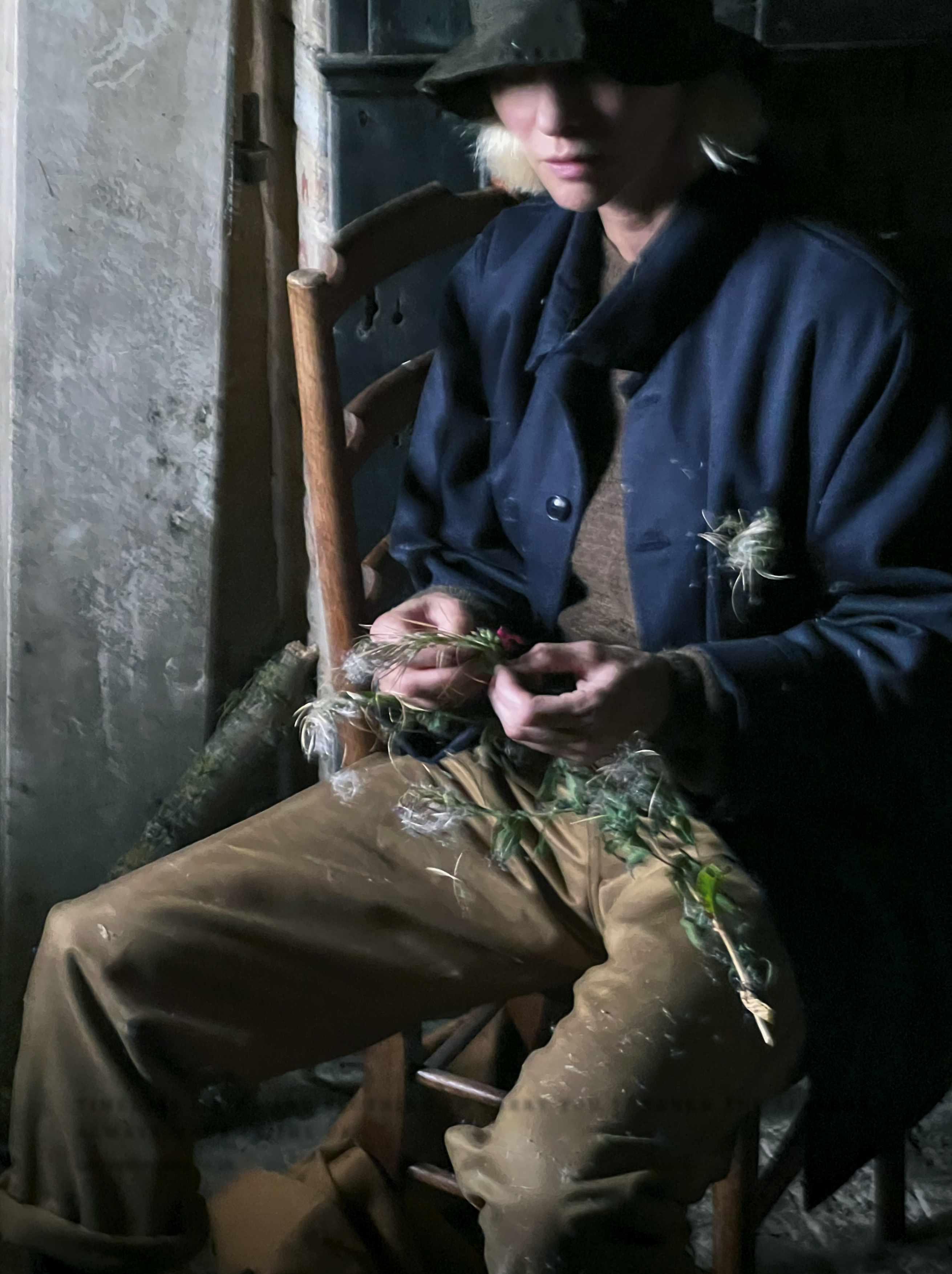
POPPY OKOCHA
Influenced by permaculture and biodynamics, Poppy aims to assist the garden and encourage it to thrive
PORTRAIT JUSTIN FOULKES
Earliest gardening memories Watching red admiral butterflies flutter on the buddleja bush with my mum in our back garden. And also collecting buckets of snails when I was maybe four or five. I thought they were cute then and I still do now; pesky but like docile, slidy, soil cows. Is gardening a career change? I worked as a model for about seven years. I found the fashion industry exhausting. I was also learning more about the climate crisis and the role fashion plays in it, and there came a point when I felt I needed and really wanted to change career towards something that was both good for me, others and the Earth. Practising, writing and talking on ecological food growing seemed to tick all the boxes, so I started gaining experience. Horticultural heroes All the women in my family are gardening heroes: my grandma was known to me as ‘Grandma with the Nice Garden’; my mum dug a pond with us during a challenging period in our lives, and a frog came to live in it. She also started a compost heap and a little no-dig veg patch and let the lawn turn into a meadow – her exposing us to all that makes her a gardening hero for sure. And my late mother-in-law gave me so many brilliant books on gardening. She used to keep ducks to help manage pests. We now have chickens for the same purpose.
One easy thing that every gardener can do to be more sustainable in their gardening I don’t have one easy thing, I have ten easy things! 1) Go organic. 2) Go peat free.
3) Make compost and use it. 4) Go no dig or minimum till.
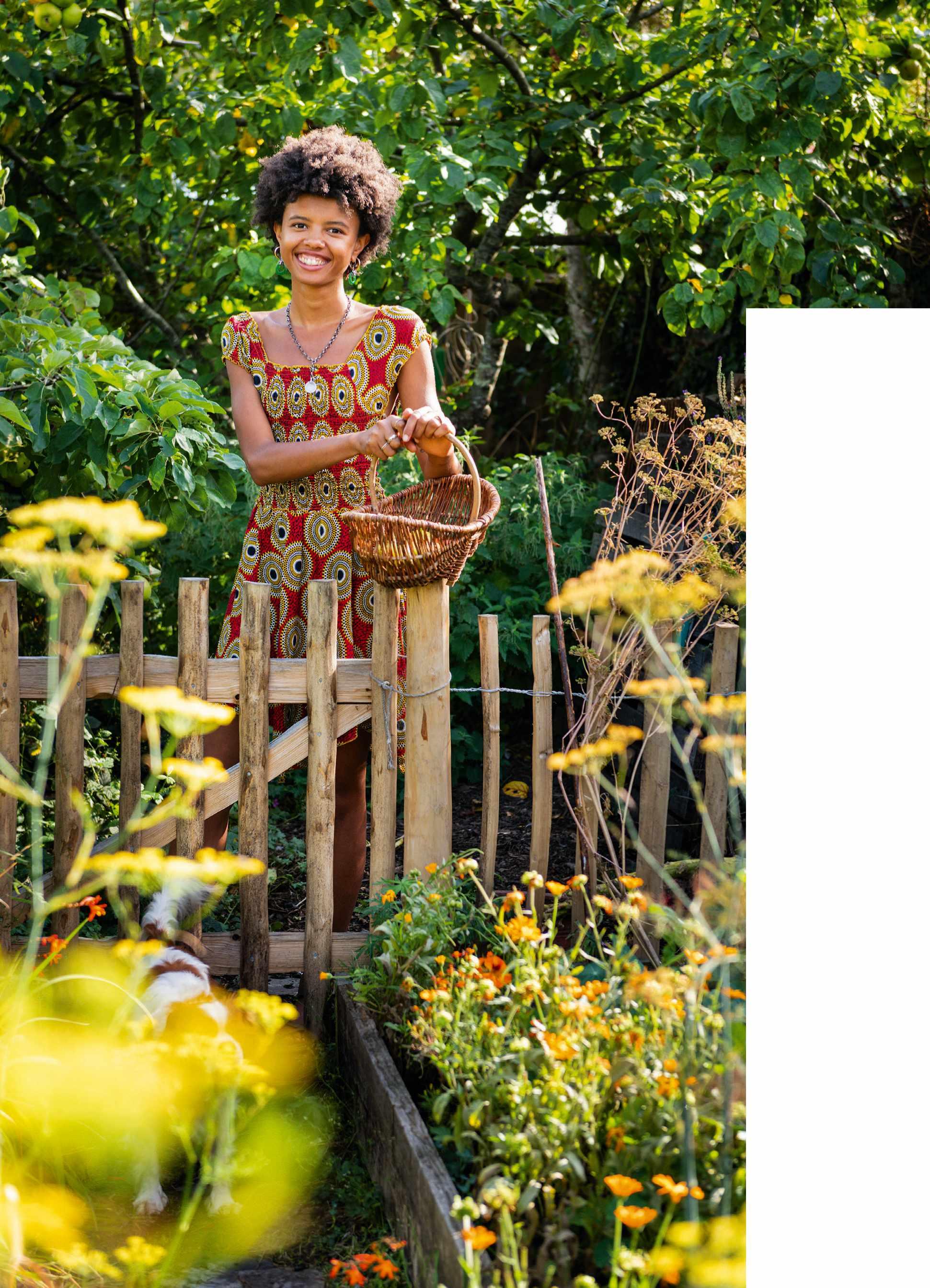
5) Grow food (explore edible perennials). 6) Have a pond.
7) Reduce the flow of external resources into our gardens and when things do come in opt for reused items and local resources. 8) Harvest rainwater and use grey water in your garden. 9) Buy seed from organic, ethical, local suppliers.
10) Share space and produce with others.
Your next big garden project To complete planting up the edible and medicinal perennial border, which will be full of ‘edimentals’ and ‘medimentals’. Plants such as echinacea, whose root is a great anti-viral, feverfew for headaches, and sage for coughs and sore throats.
A future aim I’d love to own a piece of land where I run workshops alongside others on small-scale, ecological growing and other land-based skills and crafts, with a real focus on access for young black kids to get involved and learn on the land. That’s the dream! Contact poppyokocha.com, Instagram @poppyokocha
GI You can read a longer version of Poppy’s interview at gardensillustrated.com/poppyokocha
I’d love to own a piece of land where I run workshops on small-scale, ecological growing, with a focus on access for young black kids
Kentish belle
Shrubberies as islands of dense planting punctuate undulating swathes of lawn, creating privacy and enabling views in this garden designed by Jo Thompson in the Weald of Kent
 WORDS FRANCINE RAYMOND PHOTOGRAPHS JASON INGRAM
WORDS FRANCINE RAYMOND PHOTOGRAPHS JASON INGRAM
IN BRIEF
What A large, south-facing country garden, designed by Jo Thompson, surrounded by ancient oak trees. Where Kent. Size Just over one acre. Soil Heavy clay. Climate Temperate. Hardiness zone USDA 9.
The view from the house down a gentle slope is framed by several island beds featuring shrubs and grasses. Here, black elder (Sambucus nigra f. porphyrophylla ‘Eva’) and Physocarpus opulifolius ‘Diabolo’ are interspersed with grasses Molinia caerulea subsp. arundinacea ‘Transparent’ and Panicum virgatum ‘Shenandoah’.
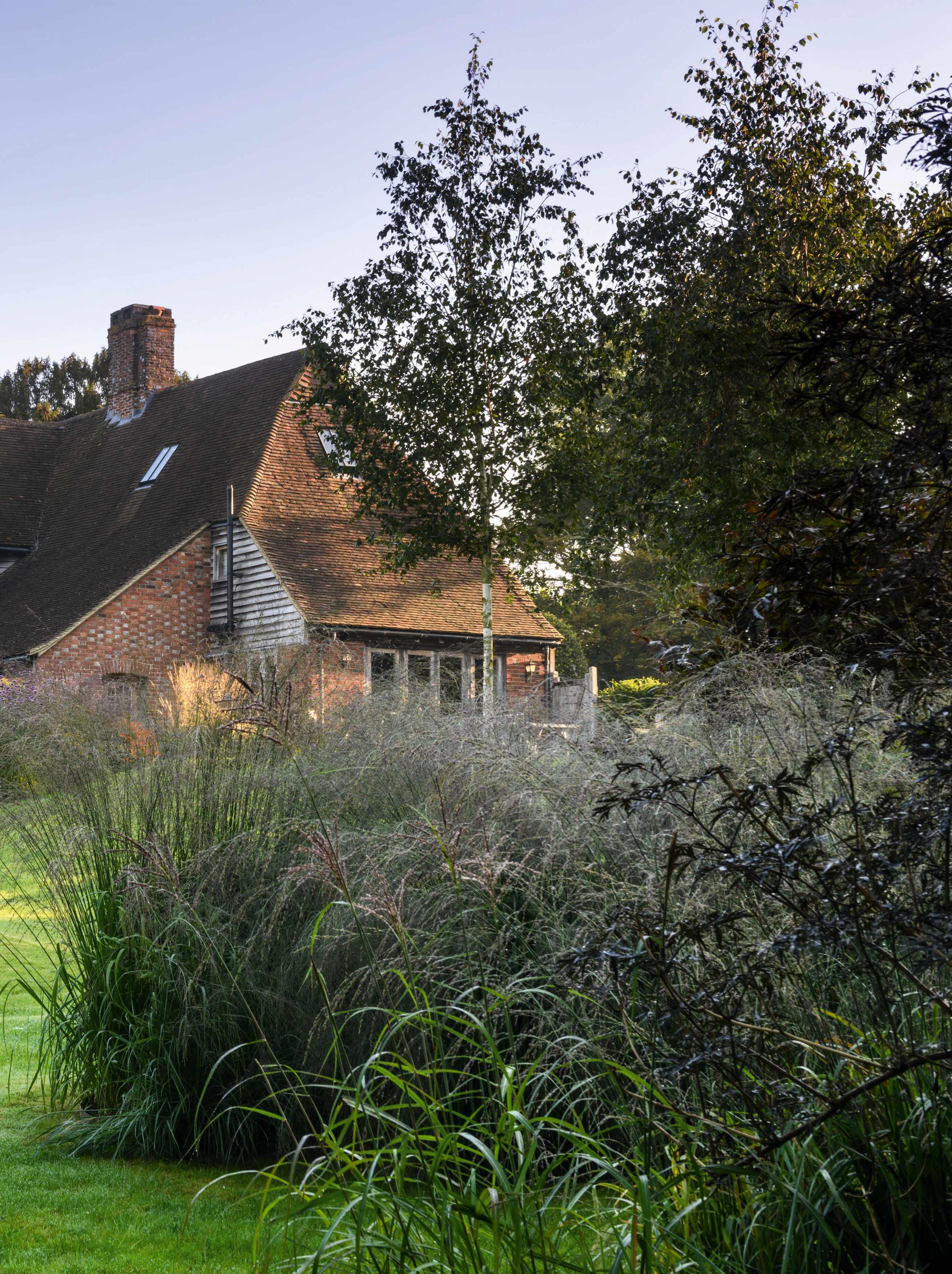
Hidden deep in the Kentish countryside, somewhere between Great Dixter and Sissinghurst, lies an idyllic, small field of gently undulating pasture bound by brooding, mature oaks and surrounded by grazing sheep. With a brief to create a series of notional spaces for entertaining, while still respecting the Wealden location, garden designer Jo Thompson has been working on this project off and on over the past ten years.
Her initial reaction was to do nothing. “When I visit a scene like this, my first instinct is to leave it alone, with, at most, some gentle intervention.” But the field on two levels, surrounding a farmyard with a newly built house above and the remains of a 14th-century barn below, is owned by a family who wanted space to eat and cook outside, a pool, and, above all, privacy.
The house, now happily settled, and with its reclaimed Kent peg tiles and red brick, rustic shiplap and Arts and Crafts leanings looking as though it has always been there, is separated from the barn (now barely recognisable with its modern surround of glass and timber) by a
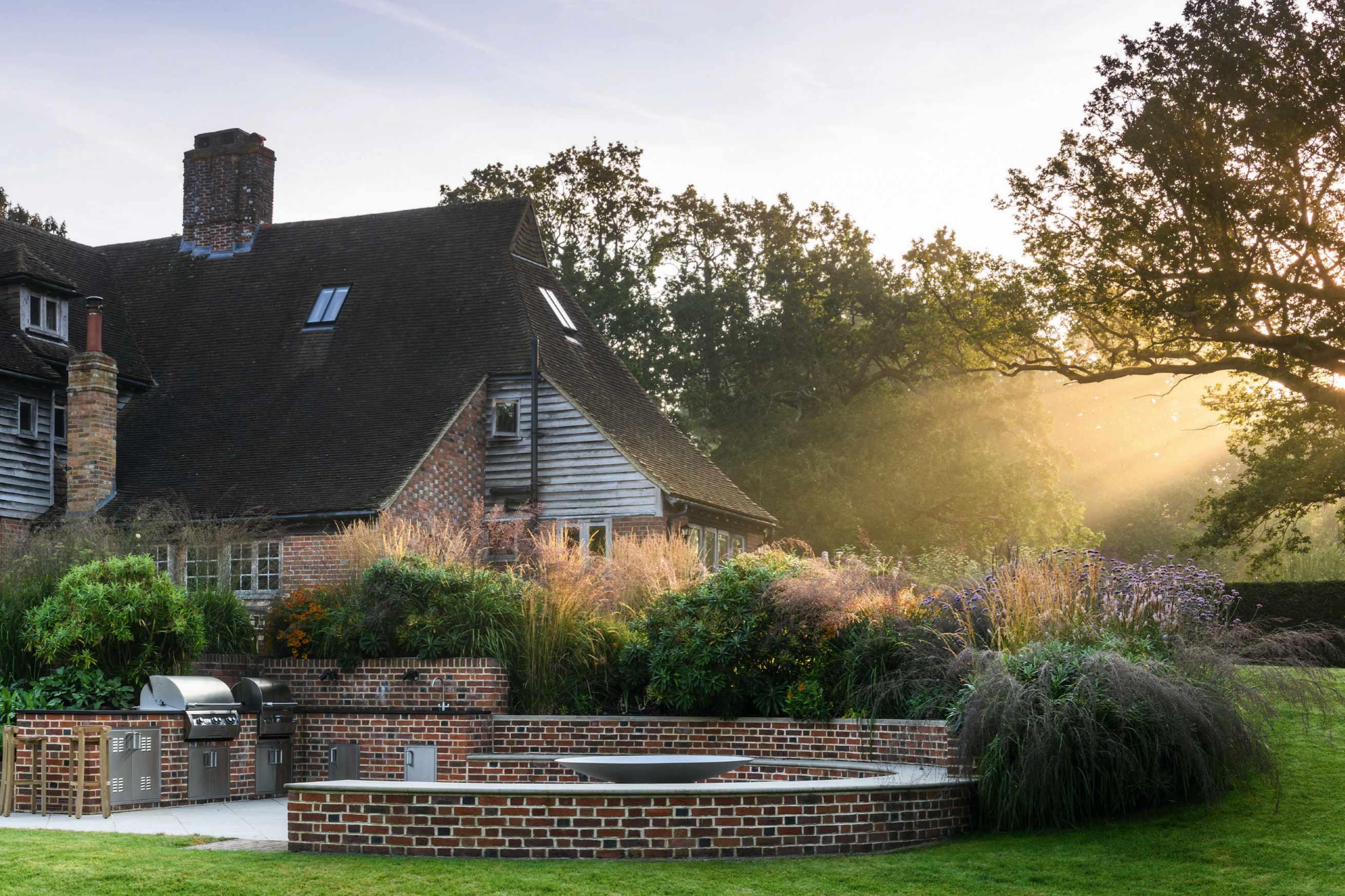
sloped series of three brick-faced terraces. The texture-rich beds are crammed full of Great Dixter-inspired planting: high-waving Molinia grasses, architectural Euphorbia x pasteurii and airy Cephalaria gigantea are punctuated with large pittosporum balls, creating a see-through hedge that both links and divides the two living spaces. The owner explains: “Looking out at the terrace from my office in the barn, the planting provides interest all year, from bulbs in the spring to grasses constantly moving in the wind.”
Moving on across York stone terraces that cover a former farmyard, there’s a change of mood. Here a tranquil, shady spot with a fountain in a formal garden of box-surrounded, pleached hornbeams, backed with Hydrangea arborescens ‘Annabelle’, and climbing star jasmine and Clematis ‘Alba Luxurians’, overlooks an understated swimming pool. This is surrounded by a low, beech hedge punctuated with sanguisorbas, Verbena bonariensis, Calamagrostis x acutiflora ‘Karl Foerster’, fennel and bistort, all late-summer stalwarts to see the family through the summer holidays.
The view from all three bases – house, barn and pool – stretches across a green sward, originally on two levels, now landformed
To continue turn to page 50
Above The outdoor kitchen arena and firepit are surrounded with texture-rich clumps of Calamagrostis x acutiflora ‘Karl Foerster’, and Molinia caerulea interspersed with evergreen Euphorbia x pasteurii
Right above The formal garden features half a dozen pleached hornbeams, with Hydrangea arboresens ‘Annabelle’ behind and low beech hedging Fagus sylvatica f. purpurea in the foreground.
Right below A low border of orange and yellow Helenium ‘Waltraut’ and Rudbeckia fulgida var. deamii with Verbena bonariensis curves round behind the outdoor kitchen, with ancient oak trees behind.
Texture-rich beds are crammed full of Great Dixter-inspired planting that provides interest all year, from bulbs in spring to constantly moving grasses

Jo’s colour inspiration
In her recent book, The Gardener’s Palette (Timber Press, 2022), designer Jo Thompson describes a secret garden she visited, where ‘the greens and greys and browns were speckled with oranges and yellows, reds and pinks. But these weren’t coming from flowers: they were the result of light and shadows as they played on di�erent surfaces.’ She wonders whether it is just colour that creates atmosphere, or whether there are other elements at play – location, light, climate or cultural references.
The triumph of this garden’s palette is in referencing the colour that comes from the shadows created by the oaks that surround the garden. By using dark reds, almost-blacks and deep purples, as well as the terracotta that incorporates the colours of the building materials, the plants merge and do not distract the eye or break the ambience. The owners also had a dislike of pastels, which have mostly been avoided in the island beds, terraces and pool surrounds.
The formal, white garden creates a di�erent mood. Here, the owners wanted a tranquil, bosky spot to relax in, among a combination of green foliage and white flowers. The pool garden colouring was apparently inspired by the merging tones of a Battenberg cake: the copper of the beech, the pool’s expanse of bluegreen, and the fresh, green leaves of the pleached hornbeam.
The top terrace features an avenue of birches to the left and twin herbaceous borders of Eutrochium dubium ‘Little Joe’, Helenium ‘Waltraut’ and Agastache ‘Blackadder’, which frame the view from the house and o�er routes down to the lower garden.
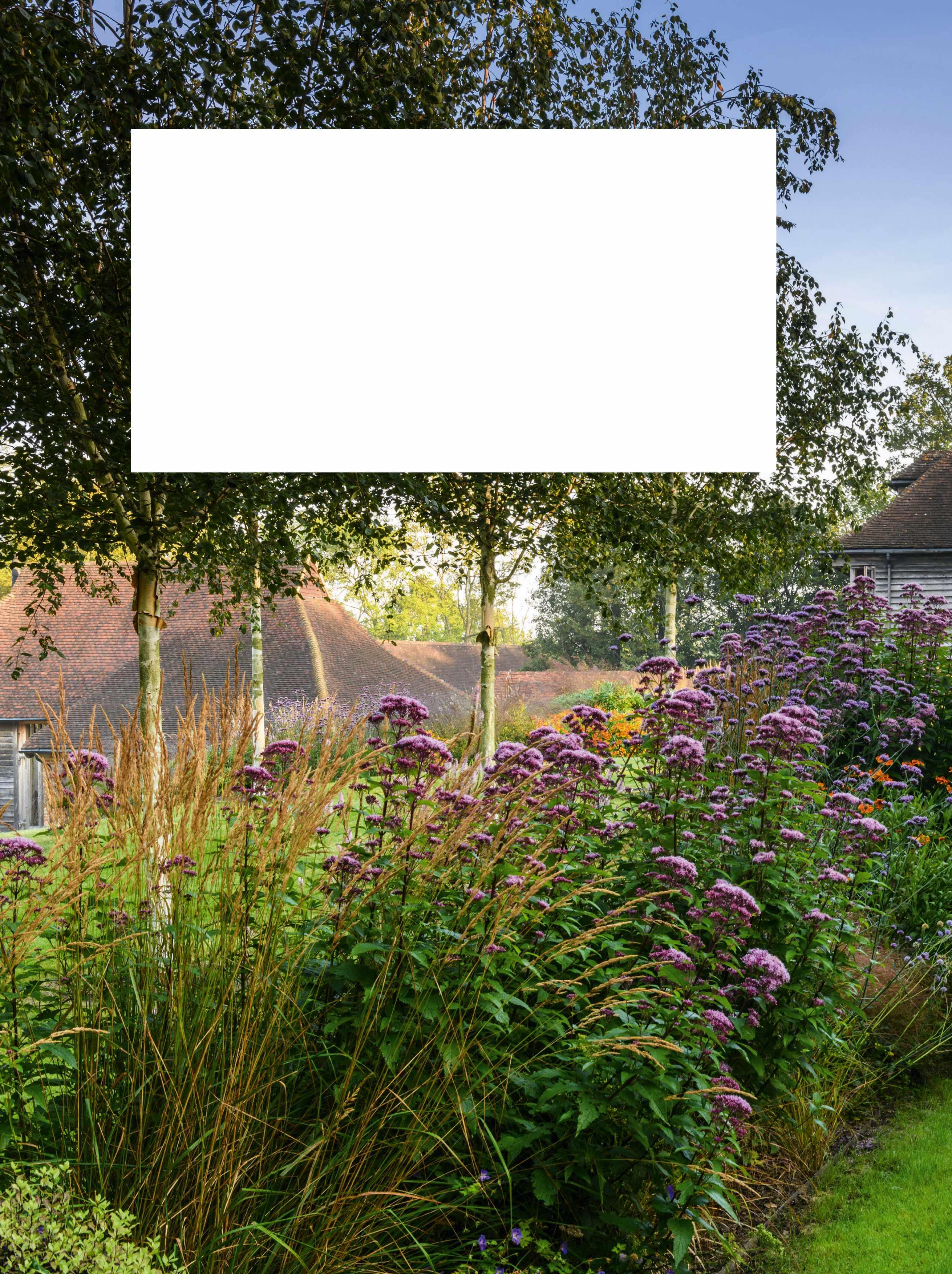

with a gentle slope uniting the upper to the larger, lower lawn. Both lead the eye gently to a quintessentially English view of dark oaks silhouetted against blond, cut meadows edged with cleft-chestnut, two-bar fences.
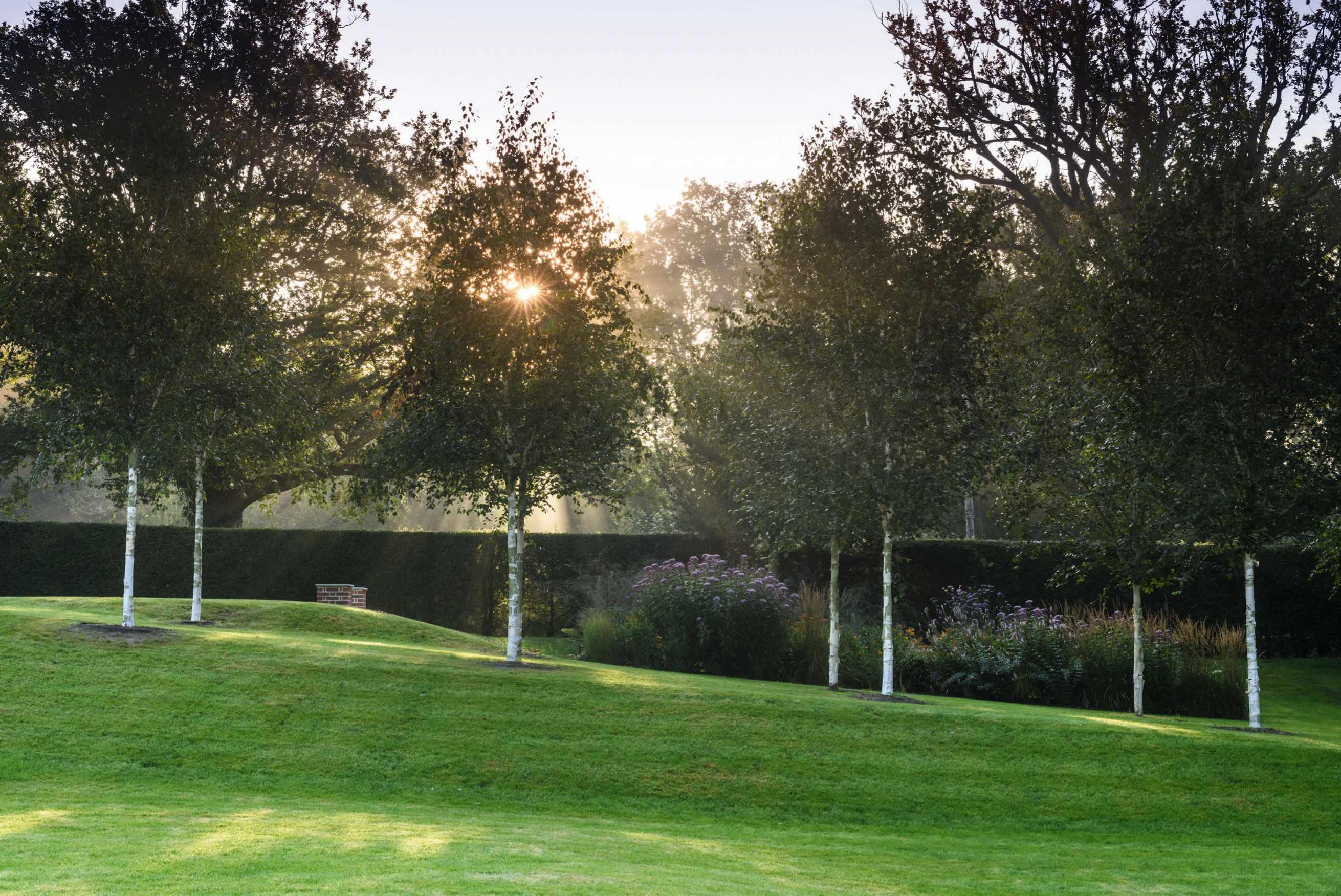
In order to create privacy without destroying the view, Jo has created several shrubberies. She explains: “A hedge wouldn’t have been practical and wouldn’t have grown under the trees. It struck me instead that we could make a feature of the space in front of the boundary by creating island beds that can be enjoyed from all sides. I wanted to pick out the deepest shades of the trees that create the shadows – the purples, oranges and deep reds. So I planted Physocarpus opulifolius ‘Diabolo’, then Acer palmatum, Abelia ‘Edward Goucher’ and Hydrangea quercifolia, dotted with shimmering Molinia caerulea and Panicum grasses, all together in a series of island beds.”
The upper terrace of the garden running along the back of the farmhouse is bordered by a yew hedge fronting deep oak woodland. This frames views from the house and here Jo has created a bit of formality – with stepped ways down to the rest of the garden, the first a small, classic pair of twin herbaceous borders with a bed at the end to give “a green full stop”, and the second an avenue of Betula utilis subsp. jacquemontii. Both encourage
a circular, flowing route around the garden without blocking the main view.
Scalloped into the landscape below this level is a no-nonsense, outdoor kitchen with dark, slate worktops, stainless steel cupboards and built-in Fire Magic Echelon ovens besides a curved, seated brick arena formed around a large fire bowl. Like much else in this garden, the attention to detail here by David Milloy of Abbey Garden Landscaping has been outstanding. The garden flourished with inbuilt irrigation during its first few years of growth, but since then the plants have had to survive the ever-changing vagaries of the weather unaided. With continuing plans for a pool house and vegetable plot, this garden still has new secrets to reveal and was recently awarded a Gold Medal by the American Association of Professional Landscape Designers.
One of the advantages of a co-operative project such as this is that over the period of its genesis the owner has developed a love not just of the garden, but of gardening itself: “I’ve found gardening a great way to relax. I love seeing how our garden evolves from year to year.” n
USEFUL INFORMATION
Find out more about Jo’s work at jothompson-garden-design.co.uk
Above The avenue of white-barked Betula utilis subsp. jacquemontii ‘Doorenbos’ slopes gently down, showing the landformed slope from the upper level to the lower lawn.
Right above The pool terrace surrounded with late-summer flowering perennials: Sanguisorba officinalis ‘Red Thunder’, Bistorta amplexicaulis ‘Blackfield’ and Foeniculum vulgare ‘Purpureum’, by the side of the barn.
Right below The view of the countryside beyond is interrupted by island beds full of shrubs, the colours of which pick up shades of dark purple, red and bronze taken from the shadows of the oak trees, using Magnolia Black Tulip (= ‘Jurmag1’), Acer palmatum ‘Bloodgood’, Cercis canadensis ‘Forest Pansy’ and Pittosporum tenuifolium ‘Golf Ball’.
It struck me that we could make a feature of the space in front of the boundary by creating island beds that can be enjoyed from all sides
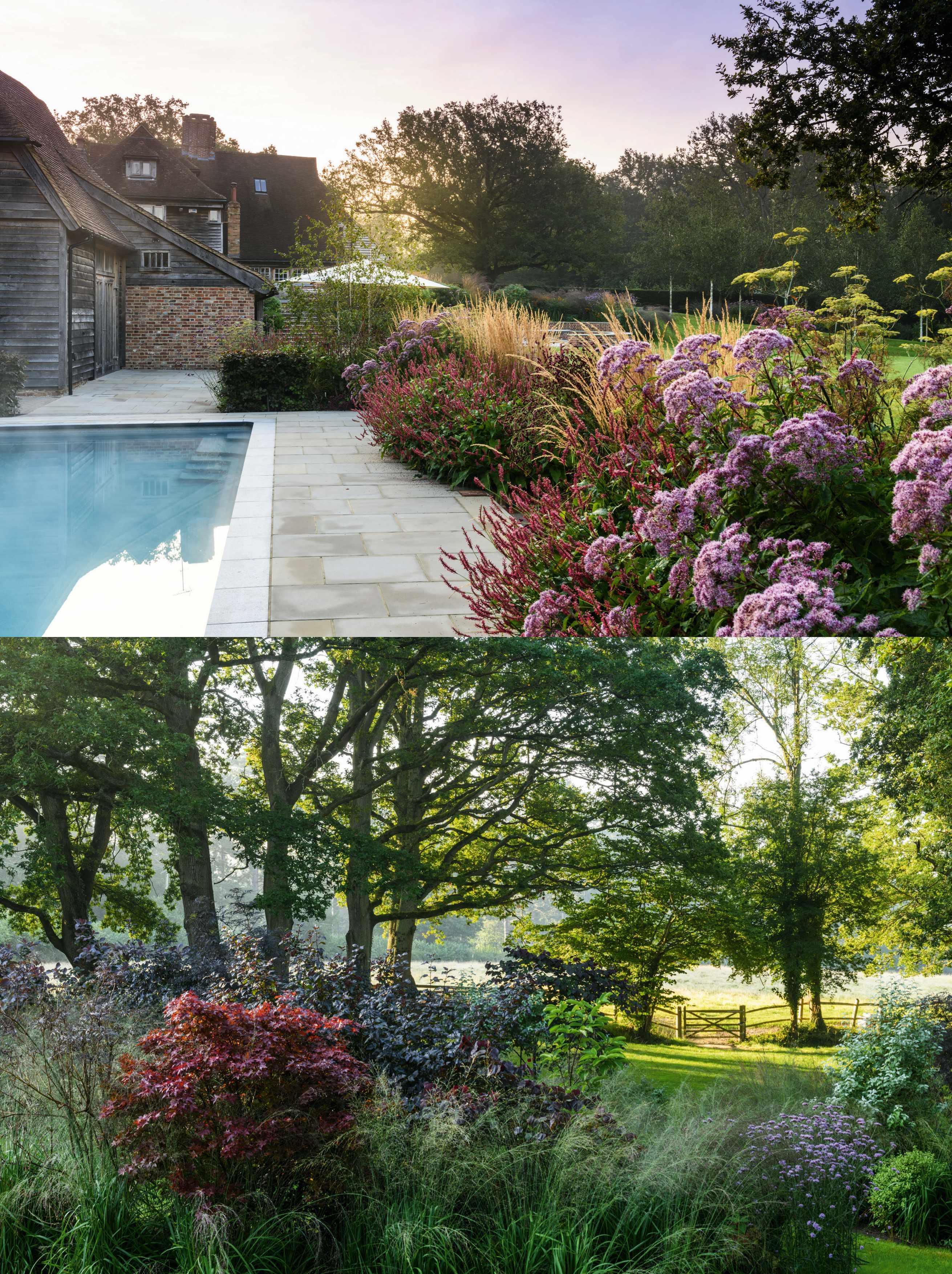
Old-fashioned flair
Cheery, resilient and enduring, chrysanthemums remind cottage gardener Beth Tarling of the mindful and enterprising spirit of the post-war generation
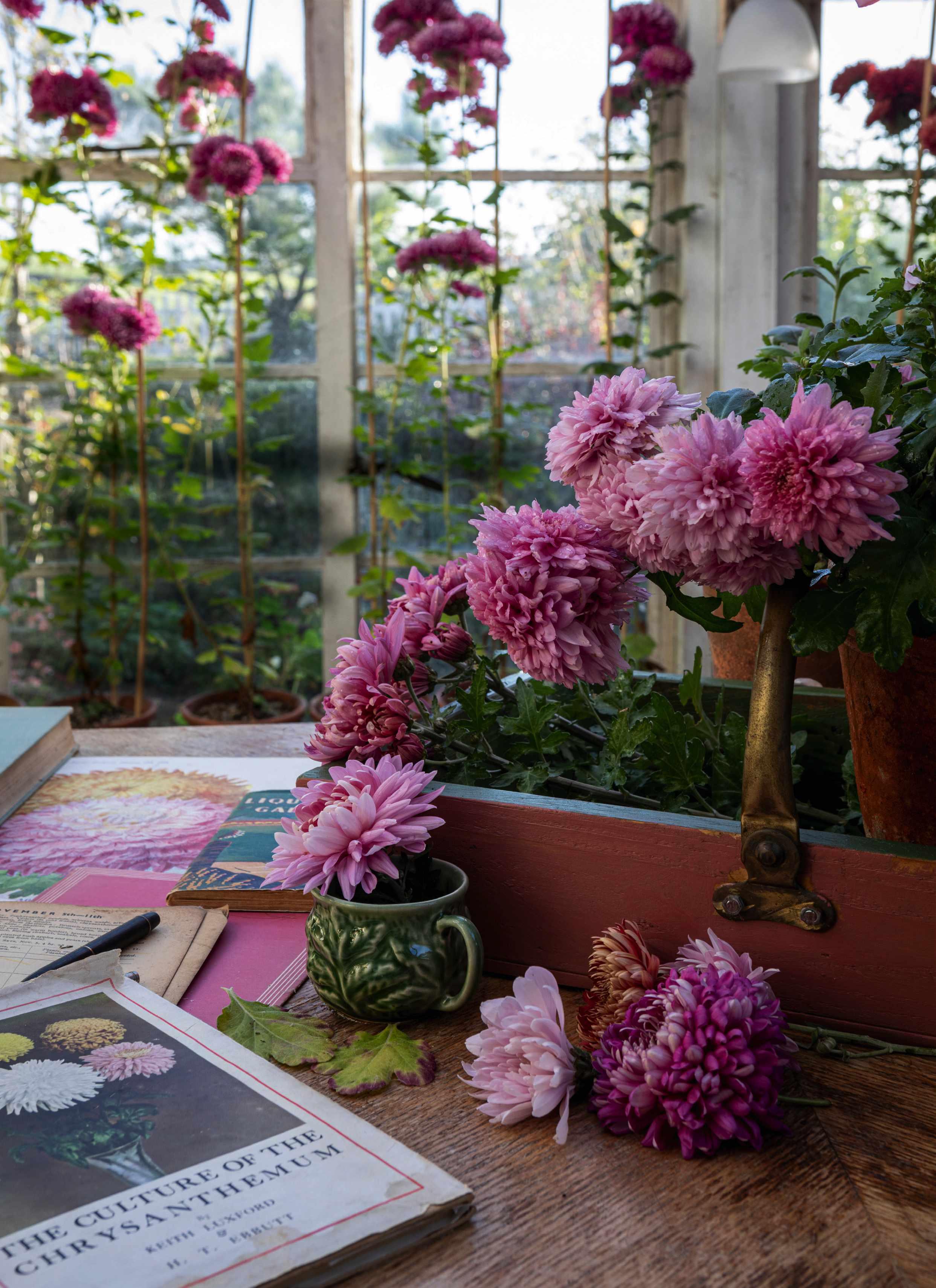 WORDS ROSANNA MORRIS PHOTOGRAPHS MARK BOLTON
WORDS ROSANNA MORRIS PHOTOGRAPHS MARK BOLTON
Beth Tarling has hundreds of gardening books. Predominantly old with aged, browned pages that give off that evocative, musty aroma. She has all of Christopher Lloyd’s books, the full series of Mr Cuthbert’s Guide to Growing, and the hefty volumes of William Watson’s The Gardener’s Assistant, and regularly consults the ABC guides of no-dig pioneer WE Shewell-Cooper.
In her cottage garden in Gunwalloe on the Lizard Peninsula in Cornwall, the most southern tip of the UK, flowers grow all year round. Daffodils give way to tulips, then rise lupins, roses, sweet peas and sweet Williams, followed by dahlias and gladioli. And, when the stellar summer stars have given up the ghost, early autumn sees true stalwarts take to the stage – cue the chrysanthemums. Some appear as early as July but now, advancing towards winter, there’s still a succession of chrysanthemums until first frosts call time. “When nothing else is in flower, I can rely on my chrysanthemums,” says Beth. Chrysanthemums are reliable and hard-working, which is probably why they were the flowers of choice for a generation of gardeners enduring the hardship of post-war Britain. Between the end of the Second World War and the early 1950s,
the National Chrysanthemum Society grew from 475 to 11,000 members, and gardens, allotments and flower shows were filled with the plants. Agatha Christie included the line ‘Oh what lovely chrysanthemums’ in her 1950 book A Murder is Announced, which inspired Beth to start growing them.

“I love them because they look old,” she says. “They remind me of my gran’s generation, when people made everything count. That era of gardening books was telling us what to do with chrysanthemums.” Beth’s friend Teddy encouraged her to buy a chrysanthemum at the Great Dixter plant fair about six years ago and she now has 20 cultivars. Another friend recently gave her C. ‘Daniel Cooper’, which produces sprays of single, mid-pink flowers with a yellow eye and had almost died out.
There is so little evidence of modern times on the road to Beth’s cottage through tiny, unspoiled hamlets, the view to the west filled with the blue of the Atlantic, that it could well be the 1950s. The feeling continues up the lane, past the white picket fence and into her garden, where a collection of home-made outbuildings, exuding a post-war charm, frame flowerbed upon flowerbed interspersed with patches of vegetables, cold frames, cloches and neatly arranged terracotta pots, divided by criss-crossing brick paths. At its centre, connected at
This page A group of chrysanthemum heads in shades of gold, bronze and a spectrum of yellows, companions in a section of Beth’s garden inspired by a Laura Ashley fabric. Facing page A selection of pink chrysanthemums in one of Beth’s garden buildings, where she also keeps some of her old gardening books.a right angle to a potting shed, is Aunt Frieda’s 1950s Crittall greenhouse. When her aunt died, Beth couldn’t bear to see it torn down. “We dismantled it at her home in Hampshire and brought it to Cornwall,” she says. “My husband Dan rebuilt it.”

Beth hates waste and believes that chrysanthemums are part of that ethos. “They give you loads of flowers, they’re inexpensive, and they last well,” she says. “And they’re so easy –that’s the main reason I grow them. I can take a stem from a bouquet given to me, stick it in soil and it will root easily, which means I have no idea of the name of some of my plants. And I love the colours. People are so sniffy about yellow but what could be nicer? It’s so cheery. I also love a good oldfashioned orange. There’s a reason these plants were popular.”
Colours are key in this garden, which is divided according to the shades of the flowers. Her home and garden buildings are decorated with old, chintzy fabric. Flowerbeds that lead to the sheds reflect the fabric within – the Laura Ashley design in one, for instance, with its rusty oranges, apricots and golden yellows.
To ensure the correct colour goes in the correct plot, Beth grows newly acquired chrysanthemums in pots the first year to see what colour they come out. “A pink can turn out to be a purple, and a red can actually be more rusty,” she says. “Dan
does all the watering and general maintenance, while I worry about whether a plant is pink or on the cusp of apricot.”
Another reason Beth favours chrysanthemums is their resilience. “It’s generally mild here but the wind is ferocious. Often you can’t open the door when there’s an easterly. A dahlia was ripped out, tuber and all, one August. Chrysanthemums are a good choice for an exposed garden. The stems are spindly and if one breaks, you can make a cutting.”
Battling with the wind for the eight years since she’s had the garden, Beth has recently planted hedging (Olearia traversiorum) recommended for coastal gardens. She’s also done huge amounts to improve the soil. “We’re mad about composting. We also go to a green waste company almost every week and fill the car with buckets of compost for the beds.” And if she’s ever in need of advice or a solution, on any topic from soil health to flower arrangements, Beth will simply turn to her great library. n
USEFUL INFORMATION
Beth opens her garden, Garden Cottage in Gunwalloe, by arrangement for the NGS. See ngs.org.uk for details.
Turn the page for 1950s tips on growing chrysanthemums
Before finding the right spot in the garden, Beth tests an orange chrysanthemum in pots.1 Ready to tend to the garden, Beth could almost be mistaken for a Second World War land girl as she steps out dressed for autumn’s cooler temperatures.
2 Beth rescued the old cold frame from a house in nearby Helston. “I decided not to reglaze it as I love seeing the flowers poke up through it. If it were all glazed, it would look too new.”
3 Chrysanthemum ‘Allouise Orange’ is a splendid cut flower, has sturdy stems bearing large, rounded, golden-orange flowers with a cluster of magnificent, incurved petals. 1.2m.
4 Beckoning in the autumn sunshine, one of the garden outbuildings constructed from reclaimed materials perfectly complements the aged look of the choice of garden plants.
5 A selection of Beth’s prized gardening books and ephemera alongside matching fabrics and flowers in another of her garden buildings.
6 Chrysanthemum ‘Red Regal Mist’ produces deep-red blooms in abundance. The weatherproof cultivar is considered an all-rounder and can be used for border, vase or show. For jumbo blooms up to 25cm in diameter, disbud by removing all the side shoots to create a single strong stem. 1.2m.
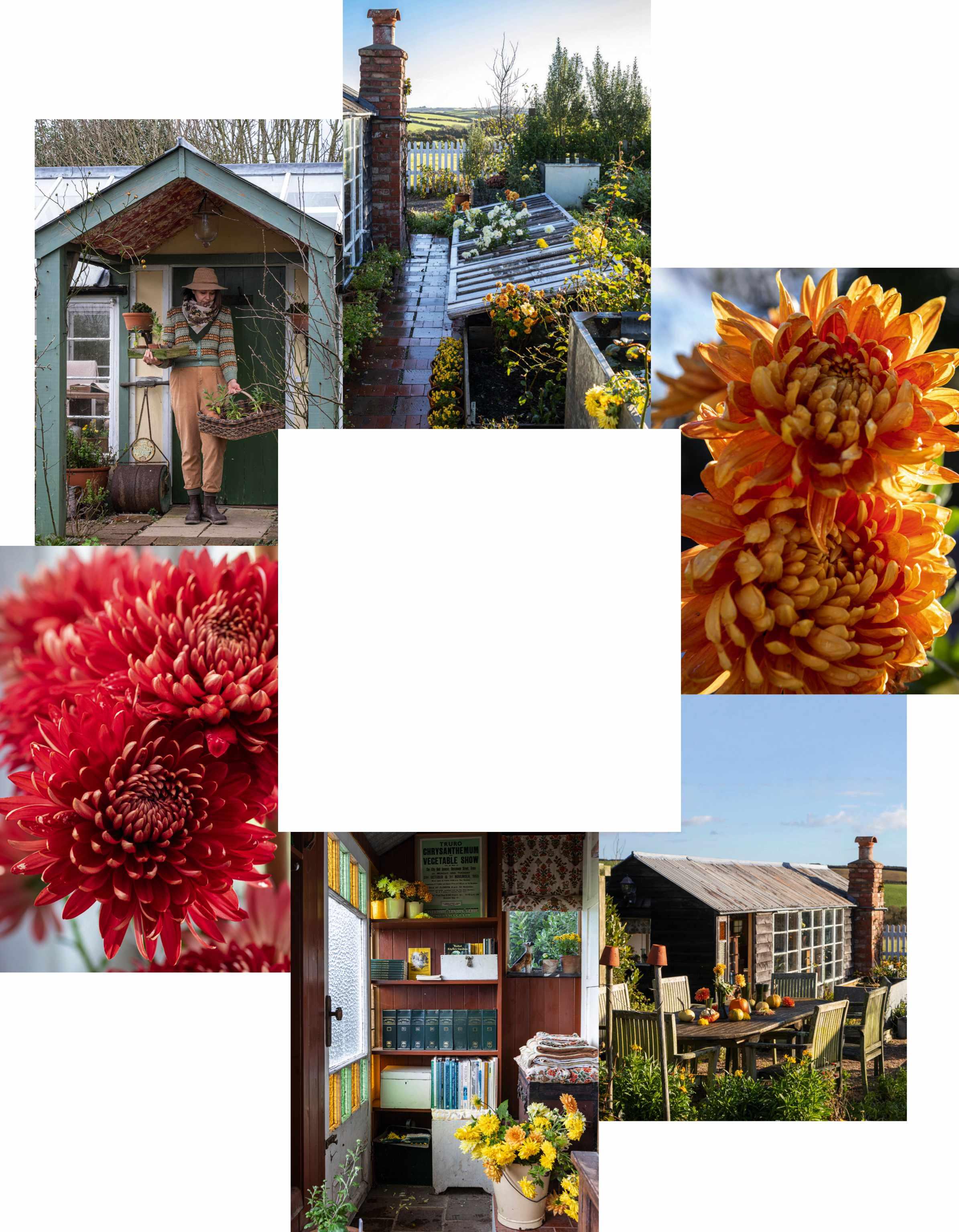
7 Beth has a strong dislike of waste and hates to throw anything away. She will often take a chrysanthemum stem from a gifted bouquet and see if she can get it to root. As a result the names of several of the chrysanthemums she grows in her garden are a complete mystery to her.
8 Freshly harvested beetroots and chrysanthemums gathered in an old basket. Vegetables and flowers grow side by side in the pretty raised beds of Beth’s Cornish garden where plant colours and companions are inspired by textiles.
9 The Laura Ashley fabric in one of Beth’s huts is beautifully reflected in the shades of her flowers.
10 Chrysanthemum ‘Regal Mist Purple’ grows outdoors and displays a profusion of rich, purple-pink blooms. 1.2m.
11 Chrysanthemum ‘Alec Bedser’ is named after the 1950s English cricketer. Its bright-yellow flowers lift an arrangement in vintage flower-show vases alongside zingy dahlias.
12 Chrysanthemum ‘Allouise Pink’ is an early flowering chrysanthemum in a soft pink with incurving petals. Particularly good for the cutting garden. 1.2m. RHS H3† †Hardiness ratings given where available.

How to grow chrysanthemums
Some tips from the 1950s remain key to success
• Stopping (pinching out the growing tip) ‘Stopping is absolutely essential, if you want to grow bigger and better blooms either for the home or for your local show.
‘A chrysanthemum plant grown from a cutting sends up one straight stem, and if left to its own devices, it will produce a premature flower-bud, surrounded by
several small side shoots. This is called the “break bud” and the side shoots are known as “breaks”. The break bud rarely develops into a flower and your object must be to encourage the “breaks” to develop and produce a strong, healthy plant. Stopping therefore consists of pinching out the useless break bud.
‘As soon as the break bud appears and is large enough to handle (ie when the plant is about 8in high), it must be removed, either with a pair of scissors or nipped out with the fingers.’
• Taking cuttings ‘By mid-February or early March new growth will have started from stools. Lift stools and select short,
sturdy shoots for cuttings. Insert cuttings in compost in boxes or 3in pots.
‘Rooting takes place in about three weeks, and it is a sign that the cuttings are doing well when the tips begin to grow, and the leaves turn a healthy shade of green.
‘In about six weeks the cuttings should have rooted and started to grow on. They are then ready to be transplanted into 5in pots.’
Taken from Mr Cuthbert’s Guide to Growing Chrysanthemums, 1953.
Find more tips and details of suppliers at gardensillustrated.com/chrysanthemums
 A newcomer to Beth’s garden, Chrysanthemum ‘Regal Mist Purple’ is grown in pots to see what shade of purple its blooms appear. Beth loves the nostalgic, old-fashioned qualities of these resilient plants.
A newcomer to Beth’s garden, Chrysanthemum ‘Regal Mist Purple’ is grown in pots to see what shade of purple its blooms appear. Beth loves the nostalgic, old-fashioned qualities of these resilient plants.
PLANT PROFILE
What A genus of around 140 different species of both evergreen and deciduous shrubs or small trees in the Celastraceae family, commonly known as spindle or spindle berry. The species and cultivars featured here are from the 40 or so temperate species of deciduous spindles in cultivation.
Origins Europe, North America and Asia including China, Korea, Sakhalin Island and Japan.
Season Autumn for the fruits and autumnal leaf colour. Winter for the corky, winged stems.

Size Varies from around 1.5 to 4m tall –sometimes reaching 8m in the right conditions and a spread of 1.5 to 4m.
Conditions Full sun to dappled shade in any fertile, free-draining soils, including chalk.
Hardiness Hardy throughout the UK and northern Europe, and suitable for gardens in USDA zones 4a to 8b.
*Holds an Award of Garden Merit from the Royal Horticultural Society. †Hardiness ratings given where available.
Euonymus oxyphyllus
‘Angyo Elegant’
The Korean spindle is a large, charming shrub with branches bearing corky wings. The green summer foliage is dotted with cream speckles turning a dark red in autumn with dark-red spherical fruits on long stalks showing off the orange seeds.
1.5-2.5m x 1.5-2.5m. RHS H6†
EUONYMUS
In autumn deciduous spindles come into their own, as bright, fleshy fruits exposing colourful seeds combine with fabulous autumn foliage
WORDS TONY KIRKHAM PHOTOGRAPHS ANNAÏCK GUITTENY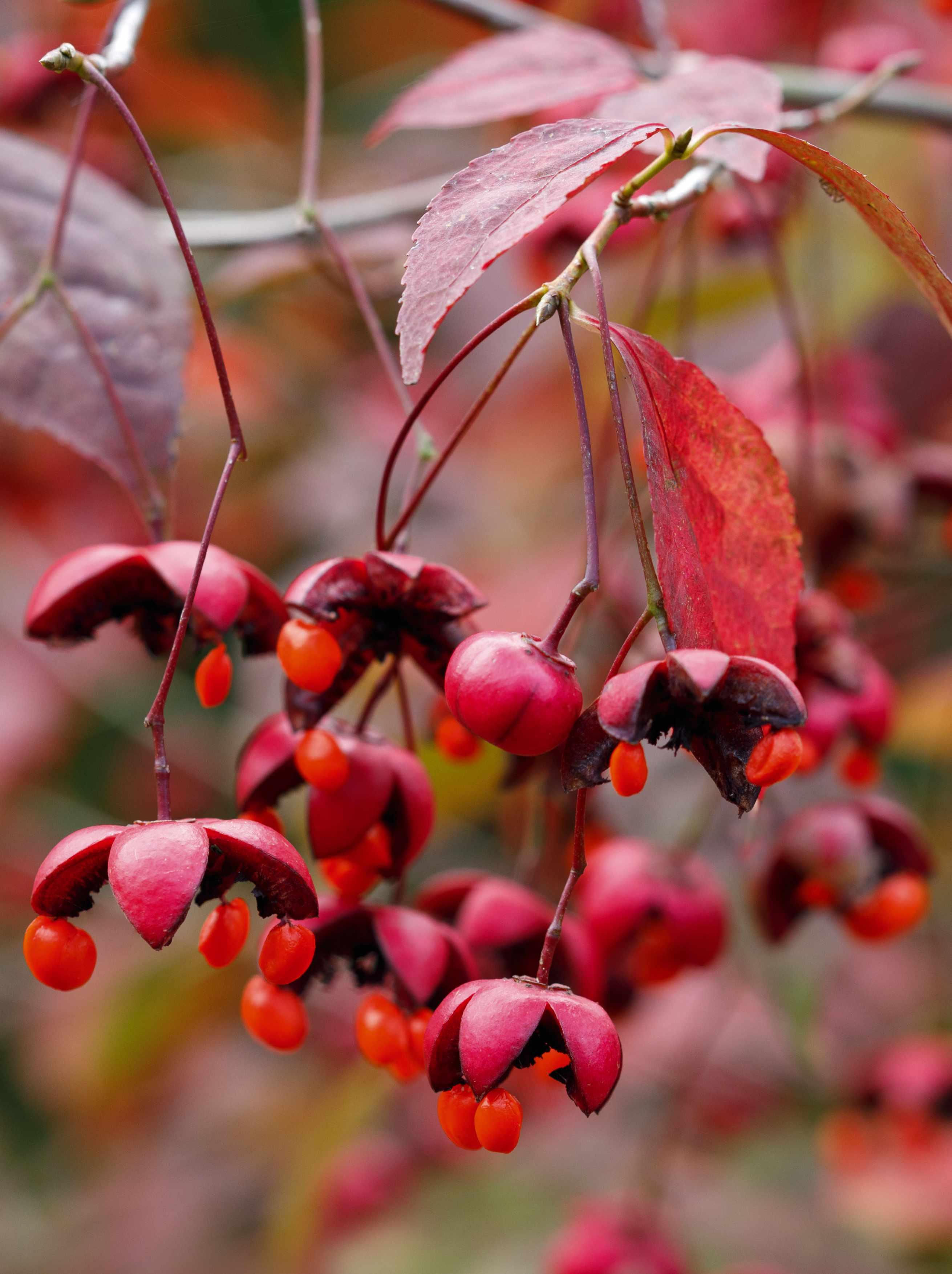
Euonymus hamiltonianus
‘Red Elf’
One of the more common Asian spindles, this smallergrowing cultivar bears dark-pink fruits, which open to show off the red-orange seeds. Contrary to its name, it can make a fair-sized shrub. 2.5-3m x 1.5-2.5m. RHS H6.
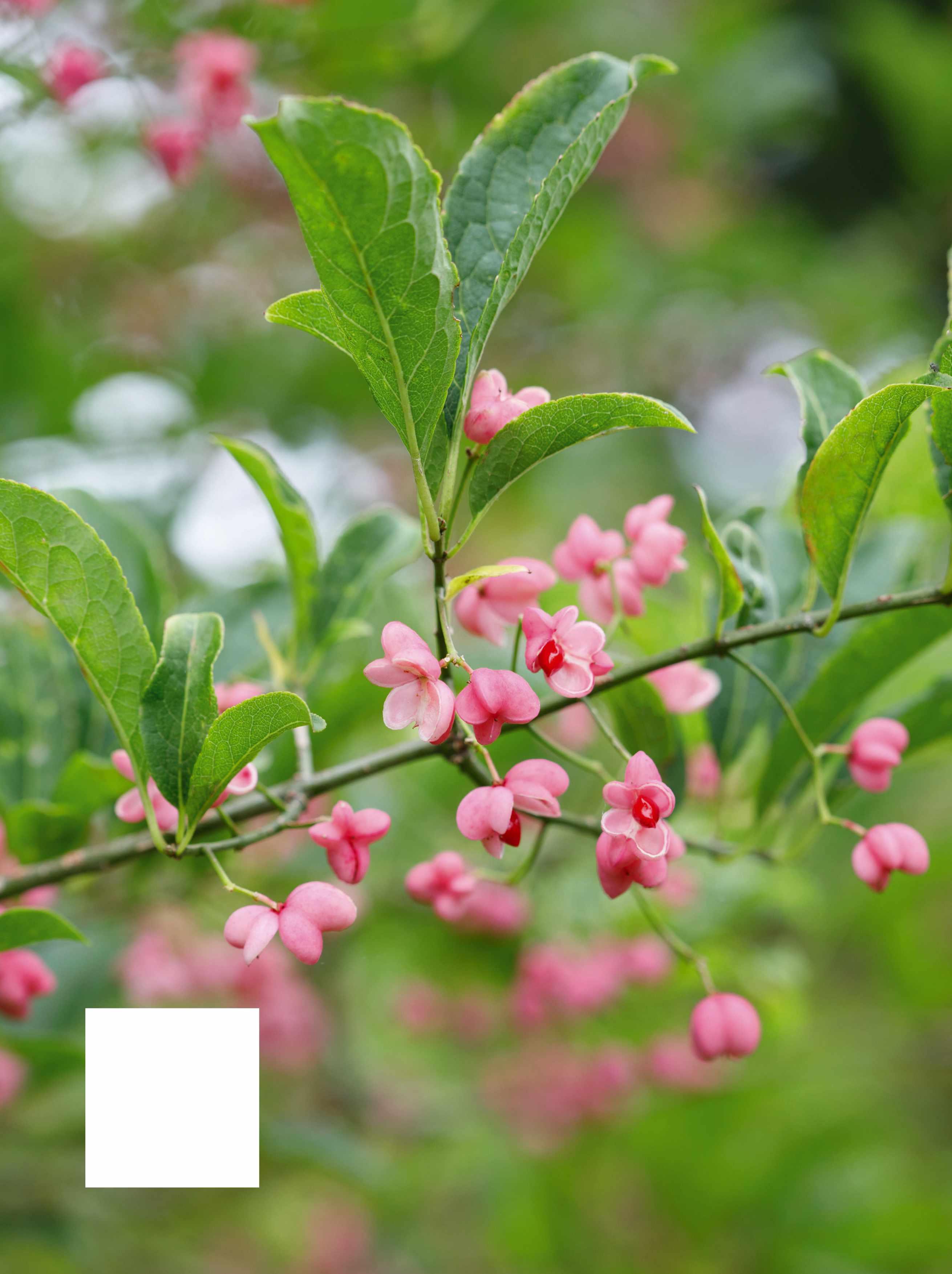
‘Brilliant’
The common spindle is a large shrub with a narrow habit and leaves that turn pinky-red in autumn. The small, white flowers develop into vivid-red fruits that open to display brightorange seeds. 2.5m x 1.5m. RHS H6, USDA 4a-7b.
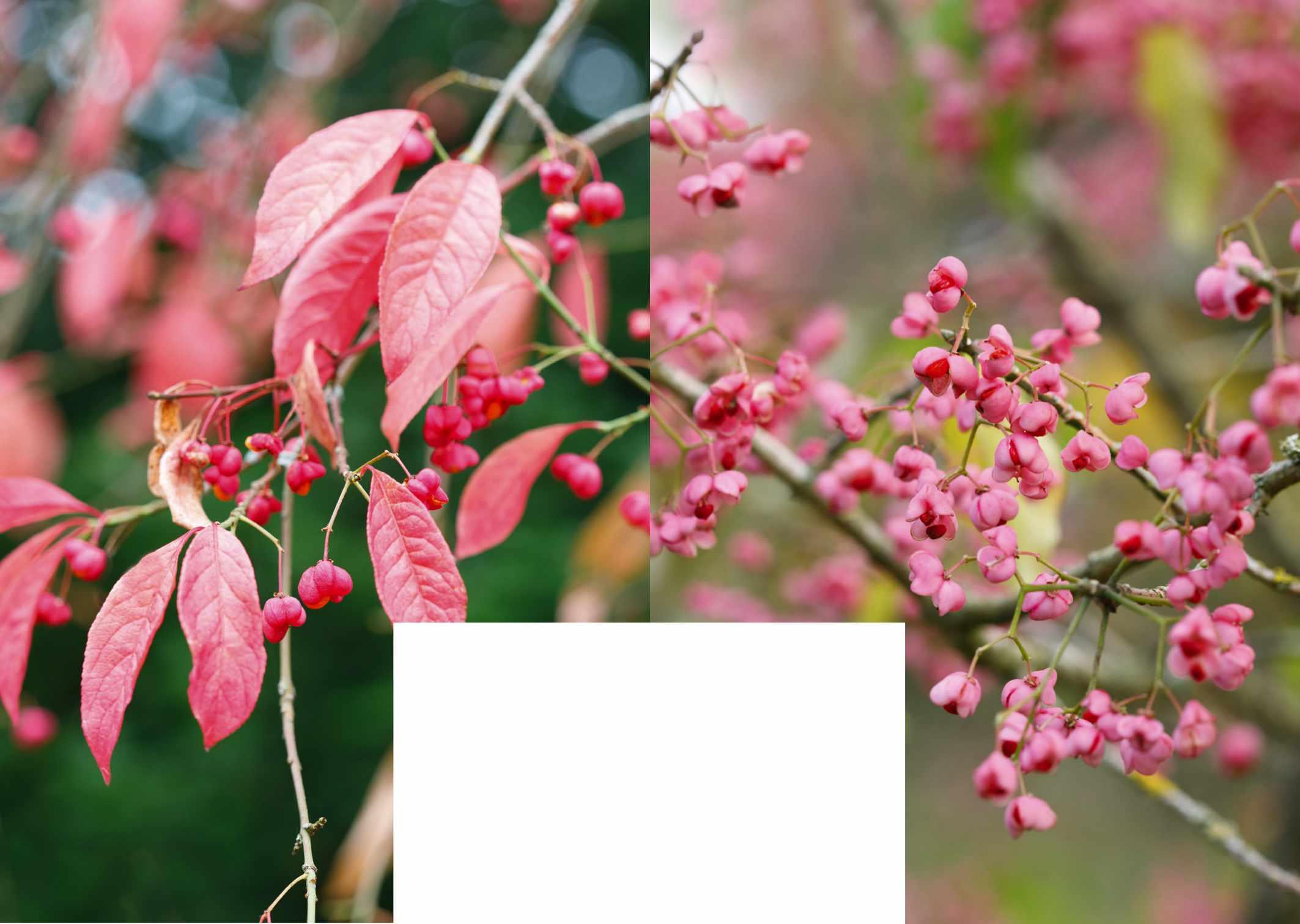
There is no prettier sight in autumn than a European spindle with every branch adorned with bright, colourful, fleshy fruits, and leaves with the reddish tints of autumn colour. The European spindle, Euonymus europaeus, must be one of our most beautiful, ornamental native shrubs or small trees in the British landscape.
It’s supposedly lucky, but not if you eat it, as every part of the plant is poisonous. The common name spindle is derived from the hard, white, dense wood that was used to make spindles for spinning and holding wool and cotton, along with knitting needles, skewers, pegs and toothpicks. There are around 140 different species of both evergreen and deciduous shrubs or small trees, native mainly in eastern Asia to the Himalayas, but also occurring in Europe and North America. In cultivation there are approximately 40 temperate species of deciduous spindles and around 45 recognised ornamental cultivars with nine of these holding an RHS Award of Garden Merit.
Nearly all the deciduous spindles have flowers, which appear in late spring or early summer, that are rather inconspicuous and certainly are not one of the plant’s main ornamental features. These flowers are a flat-topped inflorescence (cyme) growing from where
‘Miss
A compact shrub, suitable for any size of garden. It has attractive, winged stems, pale-yellow leaves in autumn and a profusion of sugar-pink, four-lobed fruits that split open to expose the orange-red seeds.
1.5m x 1.5m.
the current season’s growth joins the previous season’s and are partially obscured by the green leaves. Each floret has four petals, and these vary in colour from yellow-green to white with the exception of Euonymus atropurpureus, which has dark-purple flowers and E. cornutus, which has pale, purple-tinted flowers. These flowers mature through the summer into the autumn, giving rise to the spectacular, colourful fruits that persist well into the winter.
It’s these fruits that are the highly ornamental feature for which this genus is most noted. The mature, pendulous fruits are four- or five-lobed, sometimes winged, fruit capsules that are red, pink, or white. These split open to reveal the seeds covered in an orange or red protective fleshy layer called an aril. The aril makes it a very attractive meal to wild birds that feast on these seeds through the winter, digesting the seed coat and helping to spread the plant by dispersing the seeds in their droppings. Another common name is the robin’s bread as robins attracted to the brightly coloured seeds will fiercely guard any bush they have claimed as their territory.
The leaves of all the deciduous spindles are arranged opposite and you will never be let down in autumn by the incredible, reliable autumnal colours all deciduous Euonymus provide, particularly some of the cultivars of E europaeus and the Asian E alatus – often called the burning bush because its leaves turn such a fiery crimson-pink that the shrub has the appearance of being on fire. Add to these
Euonymus hamiltonianus Pinkie’ RHS H6. Euonymus europaeusEuonymus is supposedly lucky, but not if you eat it, as every part of the plant is poisonous
Euonymus europaeus
‘Thornhayes’
A large shrub noted for its white flowers, which are full of nectar, making it a good plant for pollinating insects. These are followed by bright-pink, four-lobed fruits revealing the orange seed persisting into winter. 2.5-4m x 2.5-4m.
AGM*. RHS H6, USDA 4a-7b.

This rare Chinese shrub was introduced to cultivation by EH Wilson in 1908. The delicate purple flowers turn into bright-pink fruits, with five or six horns, that split open to reveal the orange seeds. 2m x 2m. AGM. RHS H6.
This is a compact cultivar of a beautiful species with corky ridges along the stems, brilliant, fiery-red autumn colour and red-purple fruits exposing the orange seeds. 50cm-1m x 1-1.5m. AGM. RHS H6, USDA 4a-8b.
How to grow Euonymus

• Deciduous spindles are relatively low maintenance and aren’t really fussy about where they grow in the garden. They will be happy in most soil types, ranging from acid to alkaline providing they are fertile and free-draining, but they dislike waterlogging. Most spindles will tolerate drier soils once established in their final position in the garden. In their natural habitat they are usually found growing on the edges of woodlands where they are an indicator of ancient woodland. They also grow naturally in mixed hedgerows with other shrubs, such as hawthorn, dogwood and roses, so are quite happy growing in an exposed or sheltered position in full sun or partial shade in association with many other woody and herbaceous plants, giving you lots of options for a suitable planting position. They work well in a formal shrub border, or as a background shrub, and look especially good as an individual specimen plant in an arboretum
setting, where they can show off their fruit and leaf colour to their best in the autumn. Before planting in autumn or spring, add some well-rotted compost to the cultivated soil followed by a good watering and mulching with a good fibrous compost or composted wood chips after planting.
• Most of the popular cultivars are readily available and will have been propagated vegetatively by semi-ripe cuttings taken in late summer. However, most of the deciduous spindle species can be easily grown from seed collected in the autumn. The seed must be cleaned well, by removing the fleshy orange aril, air dried and sown straight away in a welldrained compost to the depth of the seed. The surface can be covered with a fine grit, and the seed pan placed in a rodent-proof area outdoors, where it will experience any winter cold, and germination will take place during the following spring. If the
seed is stored for any length of time, it will need some cold stratification in a bag of moist sand in a fridge for eight to 12 weeks before sowing to mimic a cold winter. If not, you will need to be patient and wait a second year for germination.
• Spindles require little if any pruning, apart from maintaining their size and shape, which should be carried out during late winter to early spring, but they are free-flowering regardless of any pruning.
• Most spindles are generally pest and disease free, but some will occasionally suffer from the usual suspects that trouble other shrubs such as powdery mildew and a fungal leaf spot, which can be easily controlled by raking up and disposing of fallen leaves. The young, fleshy growth of spindles can also be attractive to scale insects and aphids, which can cause leaf curl and wilt.
Euonymus cornutus var. quinquecornutus Euonymus alatus ‘Compactus’Euonymus hamiltonianus
‘Rising Sun’
The leaves of this tree-like spindle are green with a hint of red in summer, turning pink and red in autumn. Fruits, which are a reddish-pink, split open to show off the red seeds.

2.5-3m x 2.5-3m. RHS H6.
Euonymus hamiltonianus
‘Popcorn’
Living up to its name, this spectacular shrub resembles a bush covered in popcorn when the white fruits split to reveal the orange-red seeds against the yellow leaves in autumn.
2.5-3m x 2.5-3m. RHS H6.
Euonymus alatus
‘Bladerunner’
The broad, corky wings on mature branches provide the winter showpiece. In autumn, crimson leaves fall to reveal red-purple fruits with orange seeds.
1.5-2.5m x 1.5-2.5m. RHS H6, USDA 4a-8b.
Euonymus europaeus
‘Red Cascade’
As its name suggests, this popular cultivar produces a cascade of large, bright rose-pink winged fruits long after the bright-scarlet leaves have fallen in autumn. 3m x 2.5m. AGM. RHS H6, USDA 4a-7b.
This Dutch selection of the Asian flat-stalked spindle produces a proliferation of green flowers in late spring, followed by lots of large, scarlet fruits with dangling orange seed. Excellent autumn colour. 1.5-2.5m x 1.5-2.5m. AGM. RHS H6.

autumnal ornamental attributes the young, smooth, bright-green stems and the attractive, corky winged stem effect on the branchlets that some provide in winter, and you have a desirable, hard-working garden plant.
I would give them all a place in my garden if I had the space, but two of my favourite species are E hamiltonianus and E oxyphyllus. In their natural habitat they often look like bedraggled, stunted scrawny understorey plants, but put E hamiltonianus in a fertile garden with space and light and it can often make an elegant tree to 8m tall with fissured bark and beautiful fruits dangling on long pedicels.
But, I have a long-lasting memory of cleaning the seeds of these two examples one night in a forest lodge, removing the red aril only to feel quite nauseous the following morning, so remember to wear gloves as a form of protection when handling any part of these plants as they are poisonous, and wash your hands well before eating or having a drink. Another favourite of mine is the unusual E cornutus from the forests of southwest China, with its long, lanceolate leaves and pink-tinged fruits that have four, slender horn-like extensions to the lobes that resemble a jester’s cap.
Over the centuries, every part of the spindle has been put to use: oils derived from the plants have been used to make soaps, the poisonous fruits have been used medicinally as a laxative, and the
With a spreading habit and tree-like form, this cultivar produces a wealth of round, coral-pink fruits, each with an orange-red seed. Another bonus is the lemon-yellow autumn foliage. 3m x 2.5m.
fruits have been baked and crushed to a powder and used to treat head lice or mange in cattle. The arils covering the seeds have been used to make a yellow dye and the high-quality charcoal made from spindle wood is to this day treasured by many artists. But for gardeners looking for a hard-working shrub that will provide so many ornamental seasonal treats, look no further than the deciduous Euonymus n
Tony Kirkham is the chair of the RHS Woody Plant Committee and former head of Arboretum at the Royal Botanic Gardens, Kew. He is the author of several books on trees.
Where to see and buy
• Bluebell Arboretum & Nursery Annwell Lane, Smisby, Ashby de la Zouch, Leicestershire LE65 2TA. Tel 01530 413700, bluebellnursery.com
• Burncoose Nurseries Gwennap, Redruth, Cornwall TR16 6BJ. Tel 01209 860316, burncoose.co.uk
• Frank P Matthews Berrington Court, Tenbury Wells, Worcestershire WR15 8TH. Tel 01584 812800, frankpmatthews.com
• Junker’s Nursery Higher Cobhay, Milverton, Somerset TA4 1NJ. Tel 01823 400075, junker.co.uk
• The Place for Plants East Bergholt Place, Suffolk CO7 6UP. Tel 01206 299224, placeforplants.co.uk
Euonymus planipes ‘Sancho’ Euonymus hamiltonianus subsp. sieboldianus ‘Coral Charm’�e high-quality charcoal made from spindle wood is to this day treasured by many artists
NATURAL WONDER
Finnish landscape architect Tom Simons has created an artful moss garden that stands out from the surrounding pine forest
 WORDS ANNA VARAKAS PHOTOGRAPHS KREETTA JÄRVENPÄÄ
WORDS ANNA VARAKAS PHOTOGRAPHS KREETTA JÄRVENPÄÄ
IN BRIEF
What Moss garden in a pine forest. Where Finland. Size Around 250 square metres. Soil Rocky, dry, boreal forest, comprising mainly pine trees. Climate Short, moderate summers and long, cold and harsh winters. Hardiness zone USDA 5.
Facing page Leucobryum glaucum, an important species in Japanese moss gardens, grows best in shade.
This image Tom’s moss garden sits at the foot of a moss- and lichen-covered slope, which Tom has likened to a glacier due to its flowing character. The garden is accessed by a bridge made from two Japanese-inspired, broad planks.
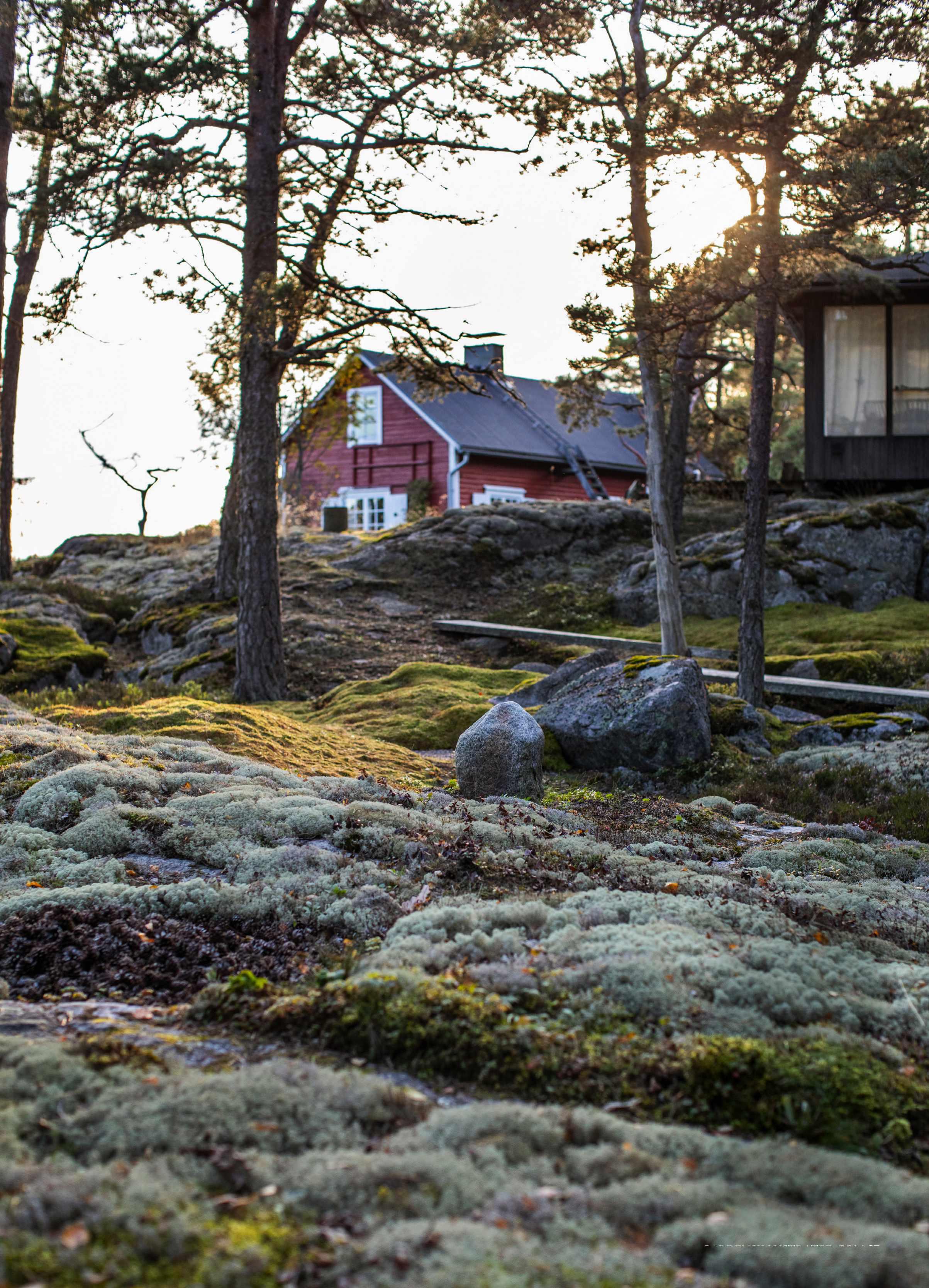
The lichen- and mosscovered rocks accentuate the topography of the foreground, while the guardian stone highlights the vertical axis. It is in part a nod to the 17th-century

For Tom mosses hold an air of mystery. He’s fascinated by the unique place they hold within the plant kingdomFrench landscape architect André Le Nôtre who used similar techniques to create views.
ff the southern coast of Finland lies the island of Mölandet. Its proximity to Finland’s capital Helsinki makes it a popular location for Finns looking to escape the city in summer. But on its southern tip, surrounded by sturdy pine trees and reddish granite cliffs, is an unexpected, hidden gem: a moss garden created by the Finnish landscape architect Tom Simons.
Although Tom considers it one of his most important gardens, and has drawn on a range of sources from early landscape paintings to the great gardens of Europe and Japan for inspiration, he is quick to point out that he hasn’t designed this garden as such; rather, he has tried to create the best possible conditions for mosses to flourish in this distinctive, wild space. So subtle have been his interventions that you only realise it is a garden when you look very carefully.
On entering the garden you experience a distinct feeling of calm and stillness, but also a tingle of anticipation like being at the theatre when the lights go down. Then as your senses sharpen, you notice how the light keeps changing, and you begin to hear the birds chirping and the gentle sound of waves lapping the shore. You see how some of the mosses form small, puffy cushions, while others create large, rolling carpets. Some feel like soft velvet, others like carded wool with
Othe firm surface of a pincushion. On a shady slope where the damp conditions help the mosses to prosper, they soften the sharp edges of the underlying rocks like gentle, green waves.
Tom’s father bought the plot in 1985 as a summer retreat for the family. Tom, who for 20 years taught landscape architecture at Aalto University in nearby Espoo, would often visit with his wife Maj and son. Tom initially gave little thought to creating a garden around the cottage, but over time he began to notice the natural mosses growing in the forest glade and to encourage them to spread.
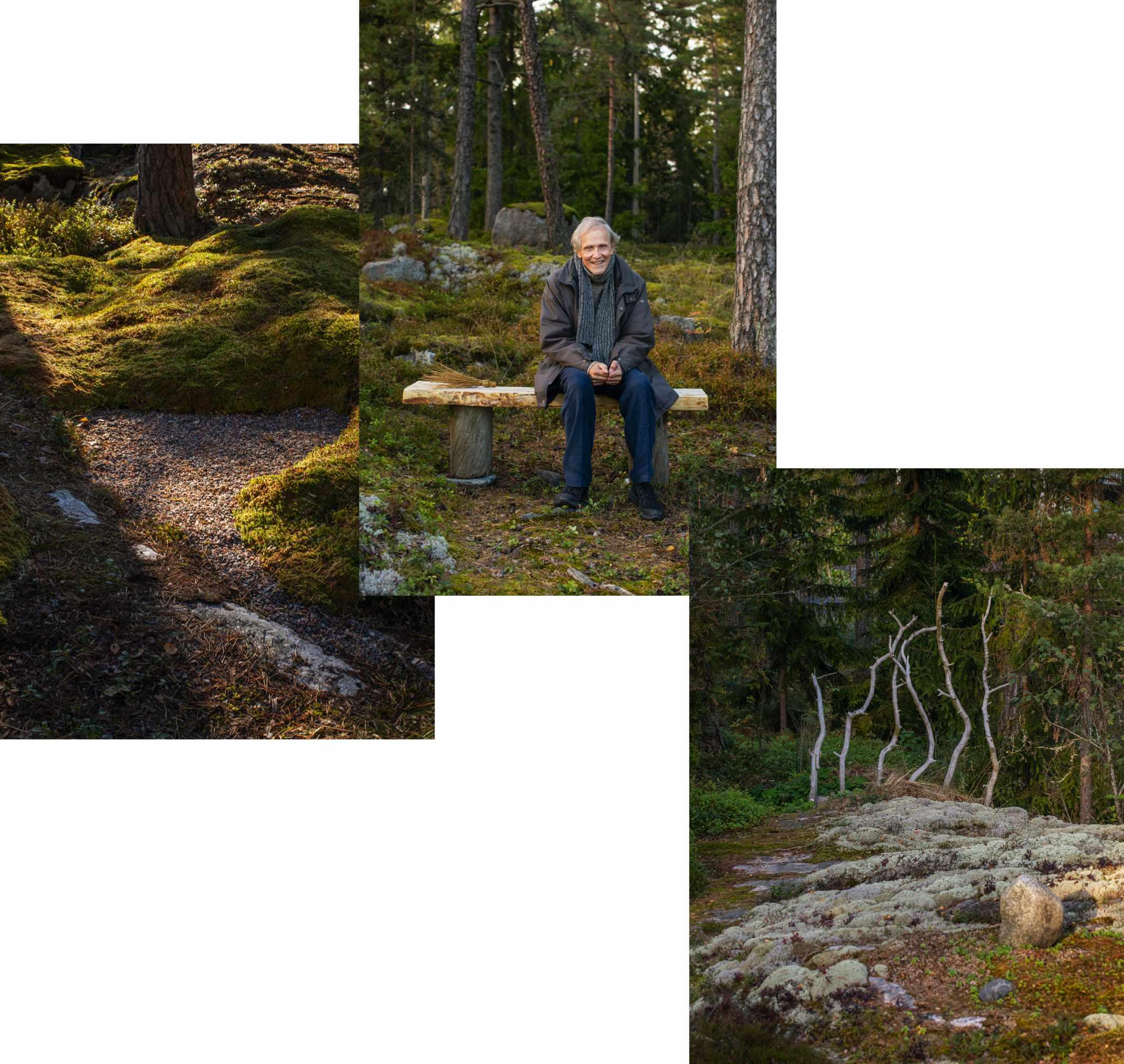
It wasn’t until 2005, however – when he befriended Kazuo Makioka, a master gardener in Japan where moss is highly valued – that his ideas for the garden really began to take shape. Three years later Makioka sketched out some ideas for Tom’s own moss garden and on Makioka’s suggestion Tom ordered two broad planks to represent the poem scrolls that are traditionally hung on the walls or in trees in Japanese gardens. With his two journeymen, Makioka carefully positioned the planks on a rocky slope to form a bridge into the forest glade and mark the entrance to the moss garden.
Tom calls this moss-covered rock the glacier as it gracefully flows down to a wider
Far left Nestling under the sloping rock face that conjures up a glacier is Tom’s small, dry garden, which represents the pool of water that might have formed from the glacier’s melting ice.
Left Tom Simons on the bench he built from Mölandet birch. He believes that landscape architects have a duty to reveal the features of nature and landscape in their work. The bench is the perfect place from which to admire the soothing topographic forms of the moss garden and the borrowed landscape beyond. Below Tom’s installation, Dance Macabre highlights the fragility of nature and was inspired by a 15th-century drawing by the German artist Michael Wolgemut.
rock floor, covered with whitish lichen and a reddish-green carpet of peat moss, Sphagnum capillifolium. Towards the centre of the glade, in a carefully chosen spot, Tom has placed a small, vertical stone to represent the guardian stone that traditionally marks the heart of a Japanese garden. “I am rather happy with it,” he says. “It shouldn’t stand out too much. But at the same time, it should look like it has been brought here.” In Tom’s garden this guardian stone also serves as a focal point, drawing your attention to the topographic form of the underlying rocks and, of course, the mosses.
Lichens also prosper in the garden, but Tom is more taken by the mosses. These relatively uncomplicated plants are found in many regions around the world, thriving in humid, rainy conditions. They have leaf-like stems, often forming mats or cushions, and reproduce by spores. Instead of roots they use tiny threads to anchor themselves to stones, trees or soil, mostly in moist, undisturbed
Below The lichen Peltigera rufescens forms a small carpet around the guardian stone. It was a pleasant surprise to Tom when it appeared, having established itself after he poured chalk on the soil to encourage sedum to grow.
Right The small to medium-sized peat moss Sphagnum capillifolium forms dense, green carpets or hummocks. Keeping the tussocks and surrounding areas clean and free of debris are important tasks in the garden.
Far right Cladonia stellaris, a slow-growing, mat-forming cup lichen, makes an appearance in Tom’s garden, although he prefers to concentrate on mosses. The dominating species of lichen in the garden is Cladonia
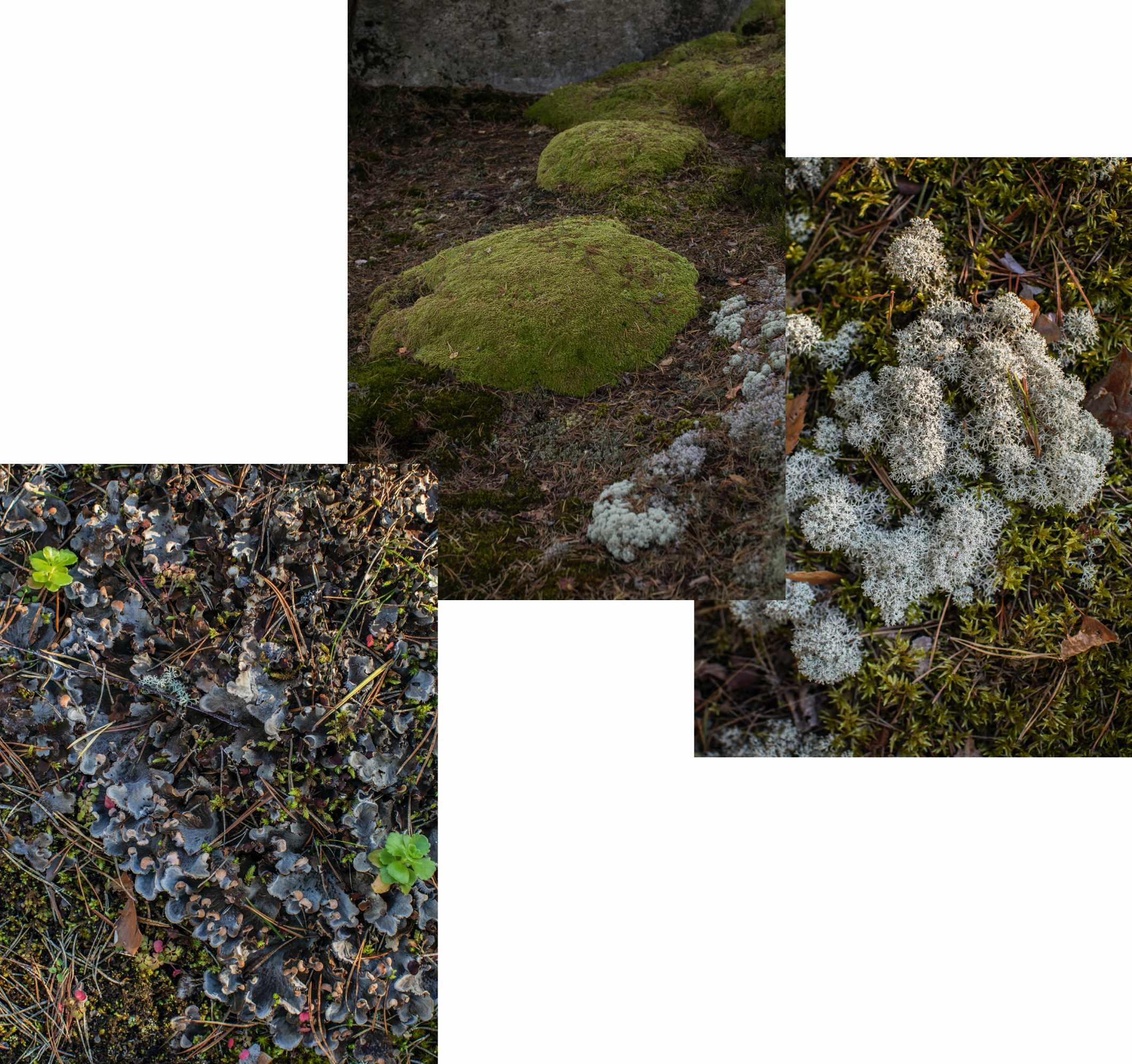
spots. There are around 900 identified moss species in Finland – slightly less than in the UK – but only very few of these grow naturally in Tom’s garden, partly situated in a rocky pine forest with heathland. Native mosses that feature prominently include Hypnum cupressiforme, Dicranum scoparium and the red peat moss, Sphagnum capillifolium, which forms vast carpets.
A special species in Tom’s garden is Leucobryum glaucum, known as the pillow moss as it forms soft mounds of green. It’s a small moss that is highly valued in Japanese moss gardens but one that rarely grows in southern Finland. Luckily, Tom’s wife Maj managed to transport a small piece of this “precious Japanese ingredient” in a plastic bag from the Åland Islands.
“I had to replant it twice,” says Tom. “It grows in two places now.”
Planting mosses is not easy. You need to choose the exactly right species for the specific surface and keep it moist
throughout the first summer. Moss spores are generally spread by the wind, although they are also often carried by birds and insects or on the feet of animals and perhaps the occasional gardener. They grow in many different ways if the conditions are right, and despite being delicate they have the capacity to recover, although it’s important not to walk on them, says Tom.
Over time, largely through patient experimentation, Tom has developed his own methods of taking care of the mosses, although his overriding principle is to look after them on their own terms. Perhaps the most important tasks are weeding and cleaning. Tom removes by hand any unwanted plants found growing in the moss – most often blueberries, lingonberries and grasses such as Deschampsia flexuosa – and picks up any fallen pine cones. He also regularly sweeps the surfaces, especially the edges, of the moss carpets and removes all unnecessary elements, such as pine needles and leaves, using a range of Japanese tools.
For Tom mosses hold an air of mystery. He’s fascinated by the unique place they hold within the plant kingdom, but he also loves the way they look, especially after rain when they are filled with moisture and the tussocks swell in different shades of green. “With moss I’ve found my niche,” he
says. “It has proved to be quite important, and has given me something to develop independently within my own field.”
Tom’s moss garden has also given him an opportunity to create several simple works of art that both stimulate his imagination and turn this magical, wild space into a garden. On the border of the glade, he has placed an installation he calls Dance Macabre made from coloured branches of 200-year-old pine trees that had died after an alarming drought one summer. A stone pillar found its place close to the top of the cliff, and marks the entrance into the garden.
Under the rock face he calls the glacier, Tom has created a small, dry garden to represent the pool of water that might have formed from the glacier’s melting ice. And in a nod to Baroque gardens he has cut out a circle from a carpet of lichen and filled it with pine cones to form something that resembles the distinct Baroque shapes known as gazon coupé.“Art invigorates the garden,” says Tom. “It makes me happy.”
Tom’s latest addition is a wooden bench he built last summer, positioned on the garden’s northern border. It’s a perfect spot for observing the garden, especially on late summer nights, when the scene is illuminated by moonlight. Here Tom finds he can let go of some of the pessimism he feels about the future of the natural world and the threats posed by human activity. With his moss garden, Tom reminds us all of the fragility of nature. It is perhaps a living piece of art in its own right. n
A low, cut-stone pillar on top of the rock marks the entrance to the garden, its shining, horizontal surface providing a point of reference for the eye. Walking down into the garden and stepping on the planks you feel as though you are entering a different world.
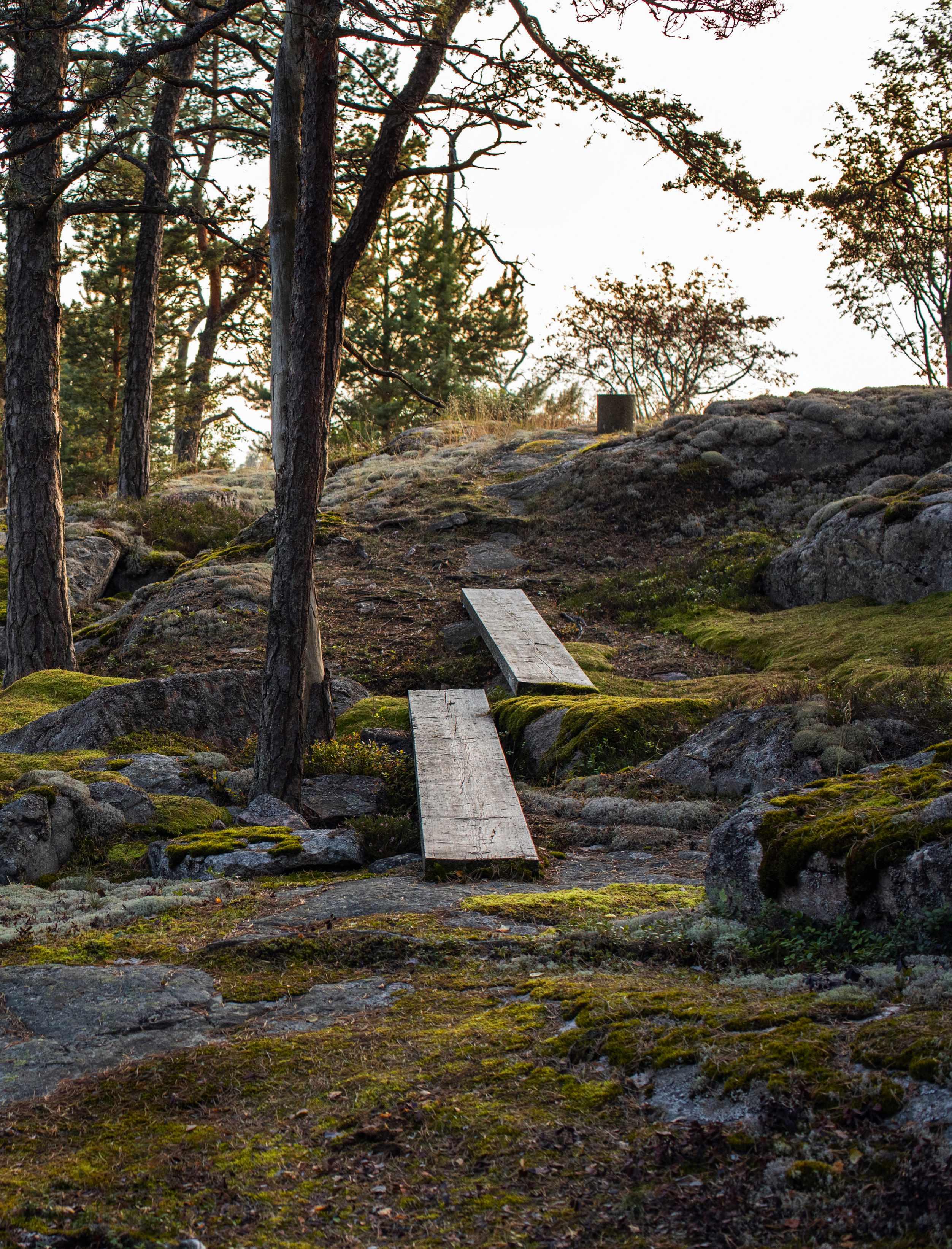
Moss gardens to visit
Koke-dera, Kyoto, Japan A UNESCO World Heritage Site, Saihoji Temple on the outskirts of Kyoto is also known as the Moss Temple (Koke-dera), as the exquisite garden surrounding it is estimated to contain 120 di�erent types of moss. saihoji-kokedera.com
Kumaon, Nainital District, India Created in 2020, this moss garden covers over 24 acres in Kumaon’s Nainital District. It aims to raise awareness of the importance of moss and go some way to rebuilding the public’s connection with nature.
The Moss Garden, Bloedel Reserve, Washington, USA The Bloedel Reserve on Bainbridge Island, Seattle, comprises 150 acres of forest and landscaped gardens, including a moss garden. Created in 1982, the moss garden now contains at least 40 di�erent types of moss. bloedelreserve.org
Japanese Garden, St Mawgan, Cornwall
Between the bamboo grove and the Zen Garden of this meditative Japanese garden, which was created in the 1990s, there is a small moss garden with a stream running through moss-covered stones. japanesegarden.co.uk
The Japanese Garden at Cowden, Clackmannanshire, Scotland
The recently restored Japanese Garden at Cowden, created in 1908, has a unique collection of plants and trees, structures with Japanese cultural significance, and a dry garden (karesansui), which contains a carefully composed arrangement of rocks and mosses, with four moss islands. cowden-garden.myshopify.com
MAT REESE
The supremely talented head gardener on the excitement of plant hunting, learning the art of plant combining at Great Dixter and the importance of good horticultural apprenticeships
WORDS ANNIE GATTI PORTRAIT JASON INGRAMThe morning we meet, Mat Reese has just come hotfoot from overseeing the six-monthly TB testing of the cattle on the Malverleys estate in Hampshire where he is head gardener. Looking after livestock comes with the job, and he’s quite happy with that.
“I like that dialogue you get with the countryside through animals.” Bird watching took him outdoors when he was growing up on the Wirral peninsula where the family had a goodsized garden with a vegetable plot, a stable and a donkey. It was a British Schools Exploring Society expedition to Greenland, when aged 16 he spent six weeks under canvas in the Arctic tundra, that opened his eyes to plants and the landscapes they grow in. “It was an important moment in my life, seeing Arctic poppies, sheets of cotton grass, Arctic willowherb and moss campion all over the place, and musk ox and Arctic foxes roaming around. Being exposed to a wilderness like that gets into your system.”
When he came back, school seemed irrelevant and he left to take up an apprenticeship at nearby Ness Botanic Gardens where he learned the craft of gardening and plant identification and was fired up with accounts of Victorian plant hunters such as Frank Kingdon-Ward and George Forrest. The three-year apprenticeship was the bedrock for his further studies at Myerscough College, RHS Garden Wisley and Kew. “I didn’t realise how much I had learned until I went to college. That’s one of the tragedies with horticulture nowadays, not enough people get a decent apprenticeship before they go on to study horticulture.”
While he was studying he fitted in many plant-finding trips to Europe, Asia and Africa. The most memorable was a ten-week expedition to the Himalayas with renowned plant hunter Michael Wickenden. “To find a beautiful meadow or see the way verbascums grow out of flat scree, I find that quite inspiring, and seeing how plants grow in the wild influences the way you put plants together.” As an example he mentions the recent stumpery at Malverleys, which was inspired by what he describes as the “enchanted forest atmosphere” created by the mosses and lichens that envelop the trees in parts of the Himalayan cloud forest.
When Mat finished his three-year Kew diploma he felt burnt out. “I just wanted to be a gardener, not in management, and felt the need to be in a beautiful garden.” He asked Christopher Lloyd, whom he already knew, if he could work at Great Dixter for a year. “I realised I hadn’t really learned how to combine plants, and that’s
what I learned at Dixter.” One year became six, and in that time he absorbed Christo’s freer, more experimental way of using plants, especially annuals. “Because you’ve grown them yourself, they’re slightly expendable, and you put them in places where they might or might not grow, and you try new combinations.” It is this looser style of planting, which also allows for self-seeders when they augment the natural effect, that Mat has established at the ten-acre flower garden at Malverleys. When Mat took up his position in 2010, shortly after the current owners Emily and Georg von Opel moved in, there was a walled garden, borders around the house, and a putting green and football pitch, both of which were swiftly removed. He was tasked with making the various parts of the garden, which include beautiful trees that punctuate the landscape, more coherent. Gradually, with his team of five, he has created a series of interconnecting ‘rooms’ at different levels, divided by yew hedging and planted in a naturalistic style. This kind of gardening is very intensive and the skills required to edit out self-seeders are learned over time. Mat had just finished taking out 50 per cent of the bronze fennel in the Long Border, next to the house, so that they still create a transparent effect. “That sort of thing is hard to teach,” Mat explains. “You want your plants to look as if it has all happened by accident.”
Involving more young people with Malverleys is one of Mat’s ambitions: there will be accommodation for students, and there are plans to run study days and seminars. Ongoing projects include a new market garden which will provide fresh produce for the restaurant that is due to open in 2023. Mat’s wife Jess, who is also a horticulturist, is also involved behind the scenes and is compiling an encyclopaedic database of most of the plants in the garden that Mat hopes they will make available on the Malverleys website.
The itch to go plant hunting is still there. But for now, he can wander the garden and be transported to the Himalayas whenever he sees the beautiful pendent Juniperus recurva var coxii in the White Garden or the drooping flower spikes of Buddleja aff. forrestii in the Walled Garden, both of which he collected and grew on from seed. n
USEFUL INFORMATION
Malverleys Gardens opens for the NGS and for private tours. Email garden@malverleys.co.uk for details. Malverleys Farm and Dining, which includes a small restaurant, deli, gift shop, lecture space and nursery, opens in spring 2023. Instagram @mat.reese
TO FIND A BEAUTIFUL MEADOW OR SEE VERBASCUMS GROW OUT OF FLAT SCREE, I FIND THAT INSPIRING
HORTICULTURAL WHO’S WHO

IN BRIEF
What A garden created around a striking Brutalist-style family home among the ruins of a partly demolished boathouse used by the East German water police. Where Berlin, Germany.
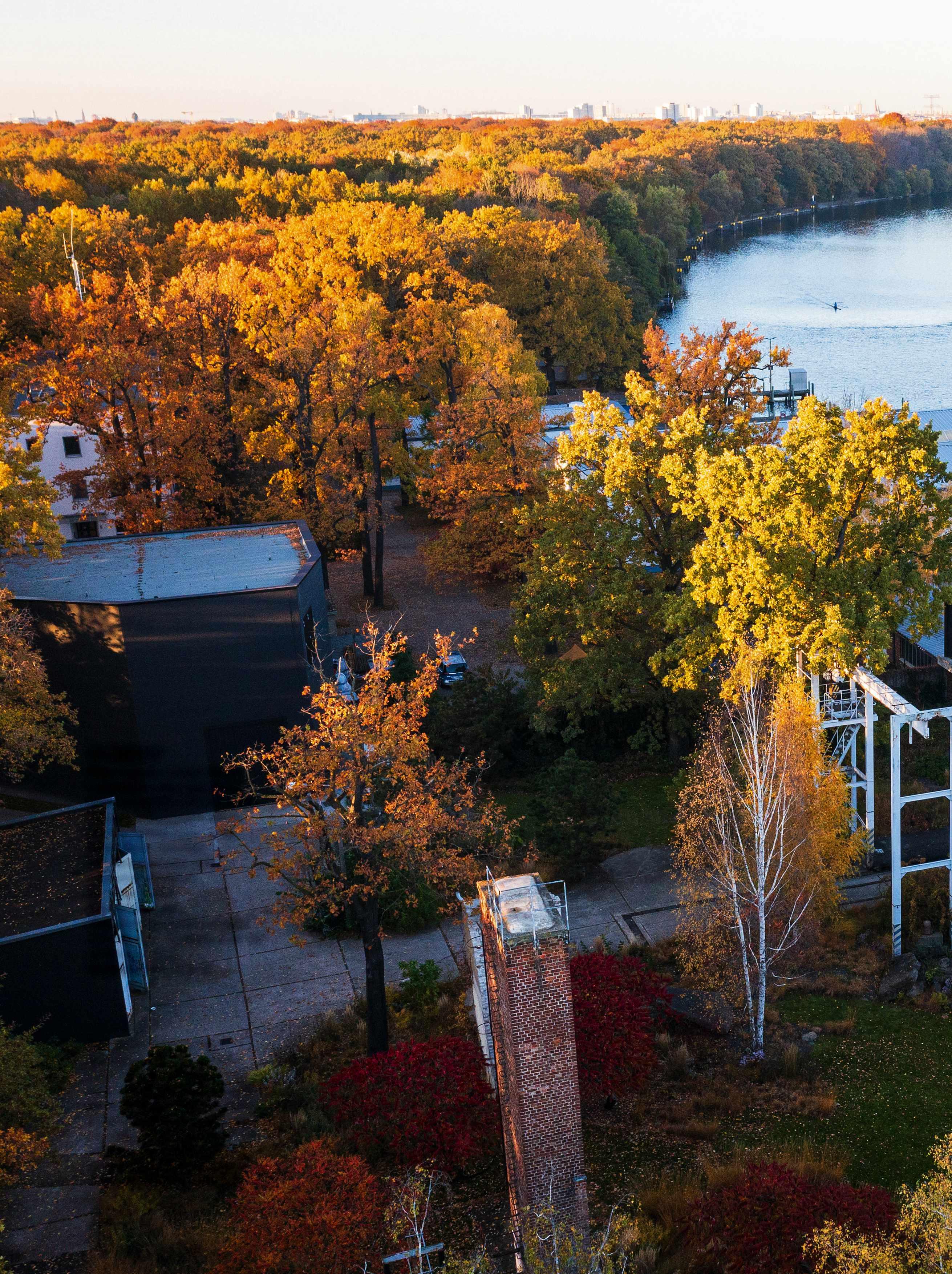
Soil Sandy soil with some contamination due to its industrial past.
Size Two hectares.
Climate Warm, humid summers and cold, overcast winters with low rainfall year round.
Hardiness zone USDA 8a
The contrast between the roughness of the ruin and the seasonal planting is particularly vivid in autumn. Mature trees and elements of the original building, including doorways, paving, rails and tiling, create a feeling of enclosure and shelter, as well as giving a sense of the building’s history and former atmosphere.
RISING FROM THE RUINS
Architect Tanja Lincke and artist Anselm Reyle have created a wildly romantic garden among the ruins of a former boat yard that surrounds their Brutalist-style home
WORDS ZOE DELEUIL PHOTOGRAPHS CLAIRE TAKACS

Nowadays there are not so many relics of East Berlin’s history – either nature has gradually taken over or new buildings have replaced them,” says Tanja Lincke, the architect behind a ruin garden in southeast Berlin. “For us, it was important to preserve this site’s industrial elements and leave something of the history, even as we gave it a new dimension.”
This refusal to erase the past can be seen in some of the city’s most atmospheric restorations, most memorably perhaps in British architect David Chipperfield’s revival of the heavily bombed Neues Museum. In this garden, however, the ruin was the result not of the Second World War, but the overnight collapse of the German Democratic Republic (GDR). The two-acre site had been the headquarters of the GDR’s city water police, and comprised offices and a vast, dilapidated boat repair shed squatting at its centre. When the Berlin Wall came down in 1989 the vacant buildings were more or less abandoned until they were auctioned off in 2008.
Artist Anselm Reyle put his hand up to buy them. His Kreuzberg studio in central Berlin was becoming cramped and he needed a new
creative project. That same year he met Tanja, and soon afterwards the couple embarked on a collaboration to turn this unloved place into a home and shared workplace. Tanja designed the elevated concrete building that appears to float alongside the river Spree and is now their family home, while the original water police buildings have been renovated into the couple’s studios.
“The boat shed at the centre was badly dilapidated. Although we didn’t want to remove it completely, we also didn’t need such a large volume at the centre of the site. That was how the idea for the garden came about,” says Tanja.
She produced a model to envision what it would look like if opened up into a walled garden, and then embarked on fast tracking its decomposition into a ruin. This involved removing the ceiling and parts of the walls with the help of a demolition company, ‘fraying’ the brickwork in a process she calls curated decay.
“Anselm was up on a huge ladder, painting the line of the ruin in purple to show the demolition workers exactly which bricks to remove,” she recalls. The result is an intriguing walled garden that invites you in through its original doorways, but is open to the sky above. The rails that once transported police boats from the river to the
To continue turn to page 80
Above Architect Tanja Lincke has transformed the main building of a former boat yard for the GDR’s water police into the striking home she shares with her artist husband Anselm Reyle and their children. The elevated home, with its roof garden looking out over the river Spree, also looks down on the garden.

Right above Retaining the former boat yard’s paving and much of its architecture was a sustainable choice and one that gives the site the appearance of having been gradually colonised by nature.
Right below Golden-leaved birch and stag’s horn sumac (Rhus typhina) trees were chosen for their architectural branches and vivid autumn colour. Molinia caerulea ‘Moorhexe’ grass turns golden in late summer, while Michaelmas daisies (Eurybia x herveyi ‘Twilight’ and Aster divaricatus) extend the flowering season into October.
It was important to preserve this site’s industrial elements and leave something of the history
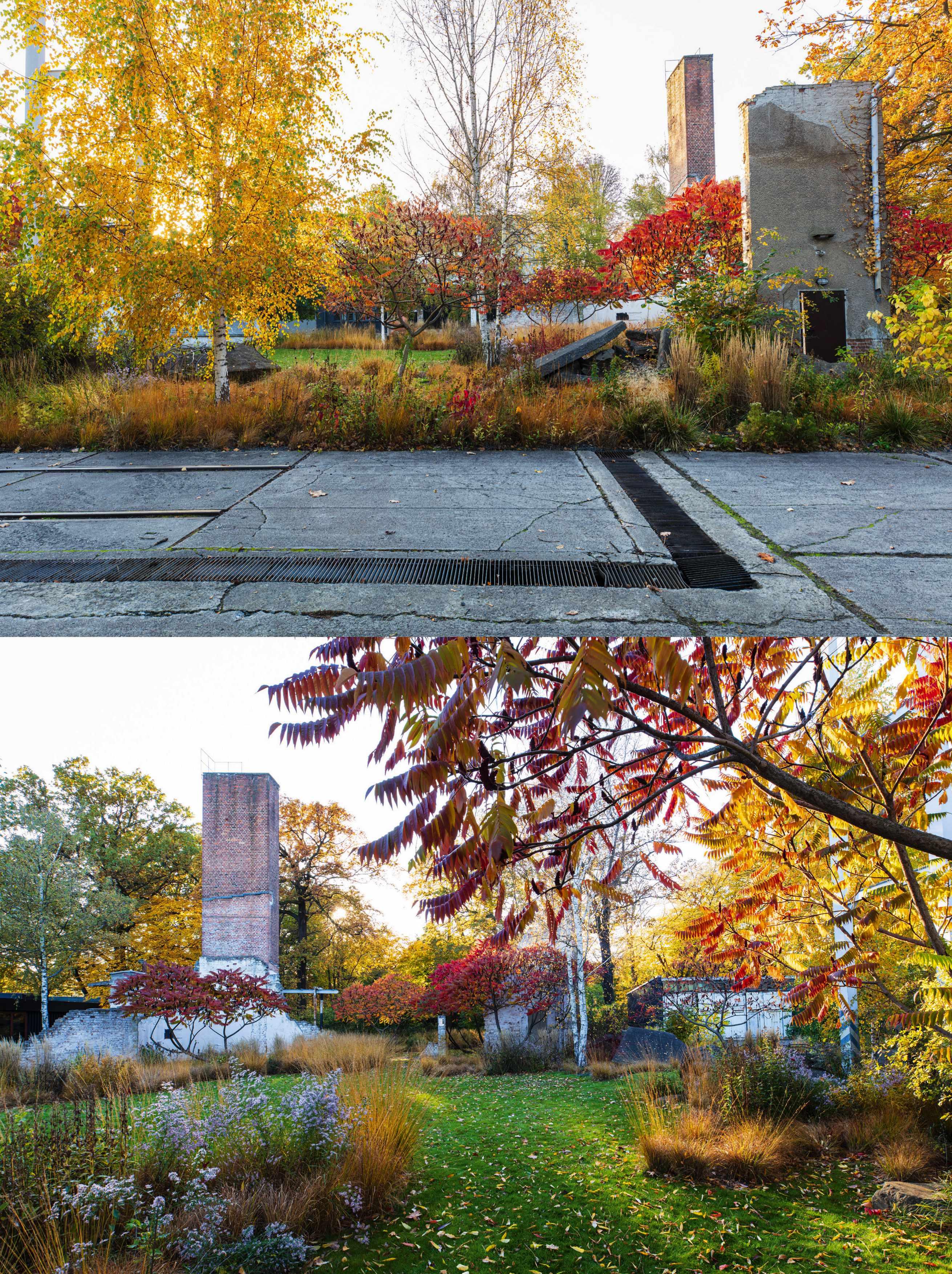
OTHER RUIN GARDENS

Natur-Park Schöneberger Südgelände
This public garden in the east of Berlin was formerly a train marshalling yard. Today, relics, including a 50m water tower, and an old steam train have been incorporated into the design, which has meadows, sculptures, a robinia forest and wild rose. A wheelchair-accessible elevated path running along the old railway tracks makes it easy to enter into this city wilderness.
Lowther
On the edge of the Lake District, this 19th-century castle was abandoned in 1936 and demolished in 1957, leaving only the façade and outer walls. In 2008, Dan Pearson began a 20-year project to restore the 130-acre garden. The Garden in the Ruins, in Dan’s signature naturalistic style, is a highlight, alongside a rose garden, wildflower meadows and woodlands.
Nymans
Once home to generations of the Messel family, beginning with the garden-loving German stockbroker Ludwig Messel, the Gothic-style property at the heart of this estate in West Sussex was destroyed by a fire in 1947 and the family gifted it to the National Trust in 1953. Recently the garden unveiled its own, highly theatrical, Garden in the Ruins (see news story on page 103), created as a homage to one of Ludwig’s grandsons, the set designer Oliver Messel.
Scotney Castle
This 14th-century moated castle in Kent is home to the National Trust’s only working hop farm. Within the gardens is a medieval castle ruin, which was integrated into the Picturesque design by architect Anthony Salvin and landscape gardener William Sawrey Gilpin between 1834 and 1843.
We wanted to include plants that are the �rst to take over these abandoned areas. So we have birch, sumac and tall grasses
The vivid autumn colours of the stag’s horn sumac, Rhus typhina, and the purple moorgrass Molinia caerulea ‘Moorhexe’ stand out brilliantly from the dark concrete shards and the delicate pink-and-white flowers of Oenothera lindheimeri, which thrives in the site’s sandy soil, and flowers from July to October.
Facing page In autumn the garden’s borders shimmer with blocks of Panicum virgatum ‘Hänse Herms’ and Deschampsia cespitosa The site’s existing beech and oak trees and a towering chimney stack form a grand backdrop to the new plantings.
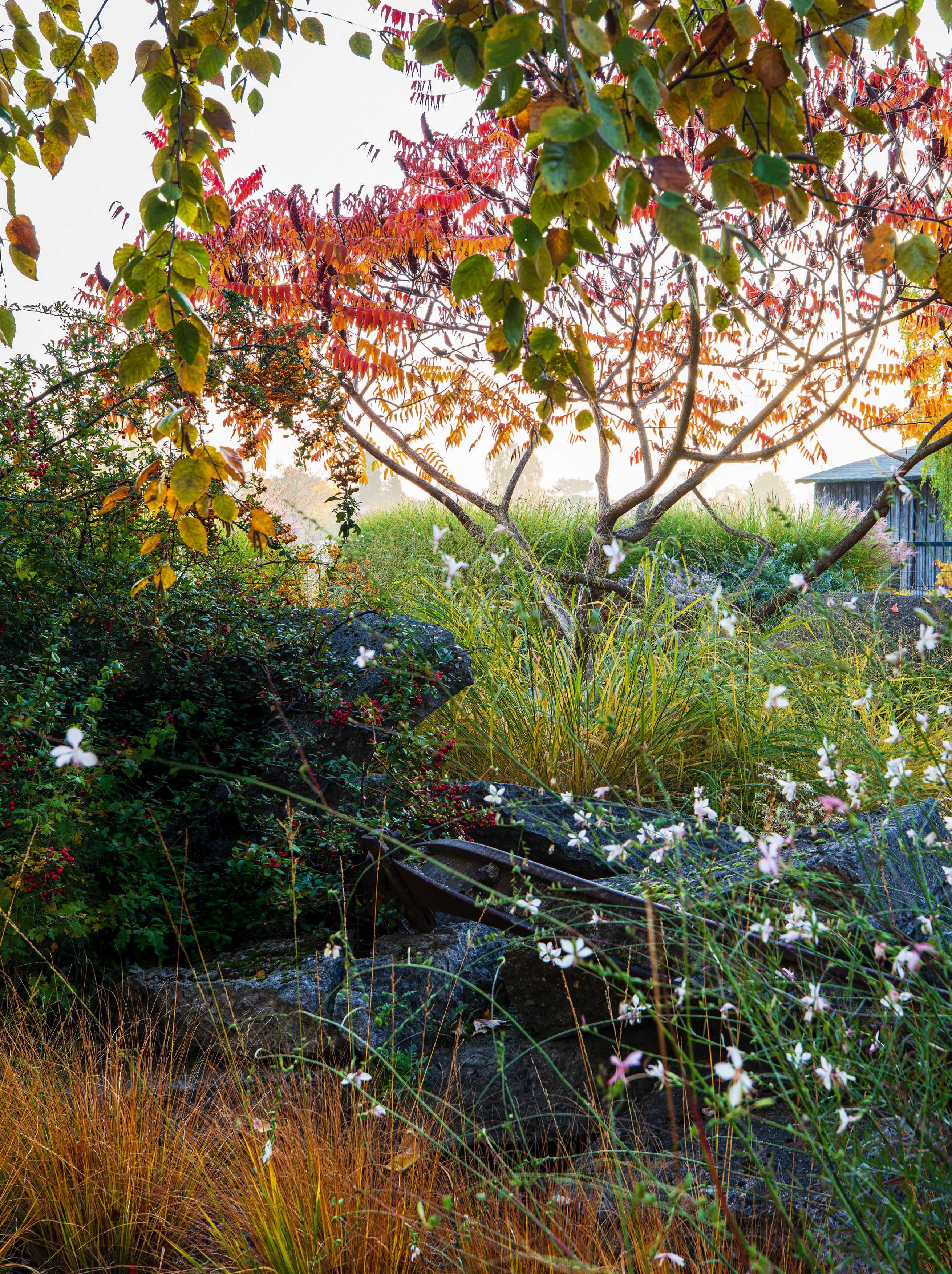 This image
This image
shed have been left in place, and an oversized ‘doorway’ frames a view of the Spree, while concrete shards left over from the warehouse floor have been transformed into a riverside sculpture, recreating in three dimensions the painting The Sea of Ice, by the 19th-century German landscape artist Caspar David Friedrich.
With the original structure now open to the elements, the next step was to choose plants. “At first we put in far too many plants,” says Tanje. “Then we visited Piet Oudolf’s High Line garden in New York and realised we wanted to do more with less. So we started over in 2014.”
The couple looked to Berlin garden designer, Harald Jeremias of Das Reservat, for ideas. With his advice they replaced an area of contaminated soil close to the river’s edge, while the soil in the sunnier beds was improved with greywacke sandstone and the shadier beds mulched with compost. They also took the decision to choose plants that would thrive in this region that has a relatively low rainfall and sandy soil. “We wanted to include plants that are the first to take over these abandoned areas,” says Tanja. “So we have birch and sumac trees, and masses of tall grasses.”
In autumn, brilliant colour takes hold, with yellow birch and red sumac leaves, orange rowanberries and feathery golden grasses uniting
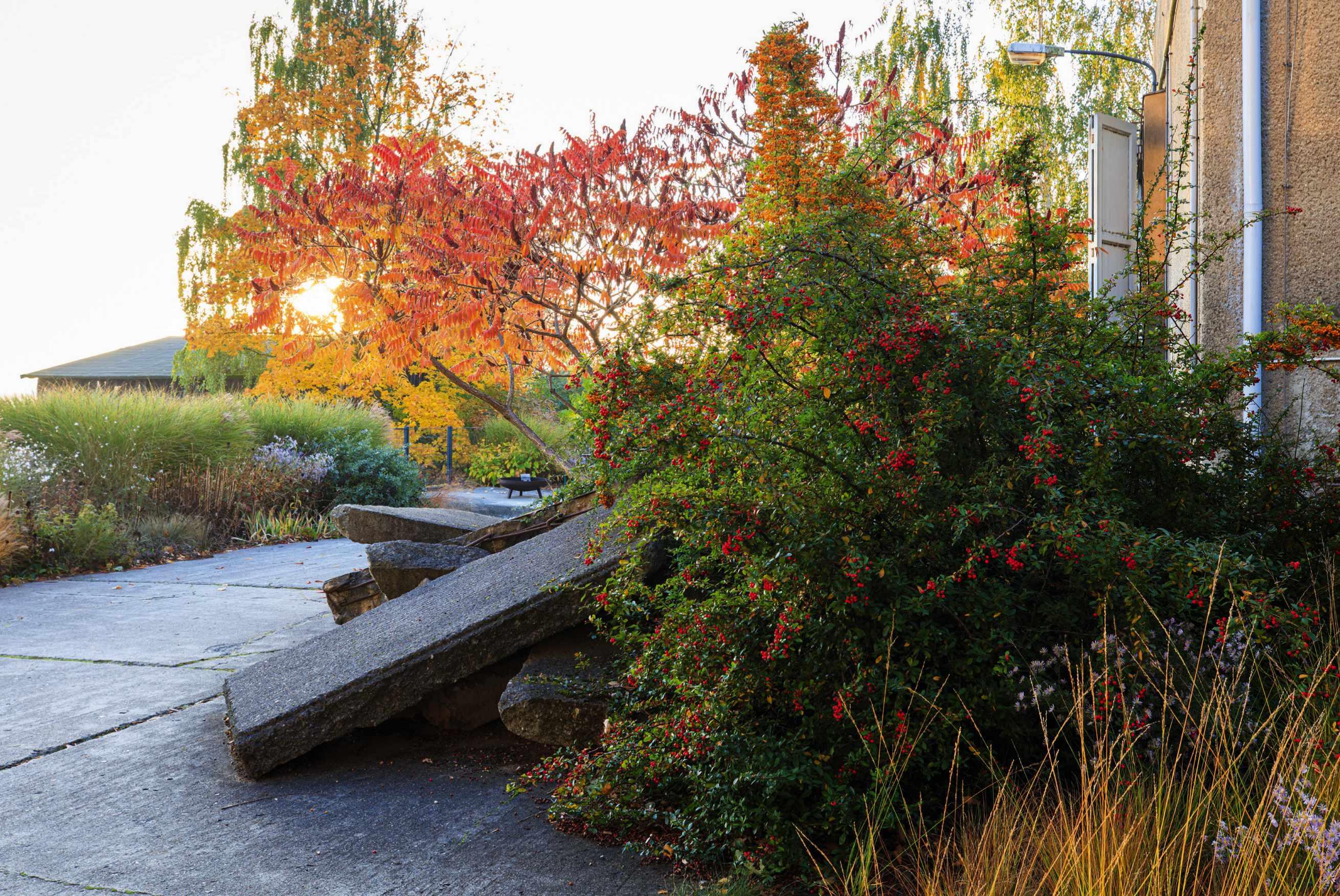
in a fiery tapestry. In winter, the white-trunked birches, twisting sumac branches and red rosehips cast a moody spell, intensified by the wide grey Spree and bruised skies. Spring brings masses of pale-cream narcissi, followed by the darkgreen shades of summer, with tall grasses and pink echinacea flowers thriving in the sheltered warmth. Throughout the year, the precisely cut geometry of the lawn provides a counterpoint to the wild plant life and roughness of the ruin. Although many of its elements, such as wall tiles, signs, the chimney and the boat hoist, have been left in place, the boathouse does not feel like a frozen museum piece. Constantly activated by the routines of daily life, it’s robust enough for summer barbecues or a game of football, and generous enough to accommodate the family’s caravan in a corner. The walls provide shelter and trap warmth on cooler days, yet the space feels open and light all year round. Reminiscent of English follies, but with an industrial edge, there is a seemingly effortless balance here between the intimidating scale of the original building and the fresh growth within. n
USEFUL INFORMATION
The garden opens annually for Gallery Weekend Berlin. See gallery-weekend-berlin.de for details.
Above Shards of concrete removed during the demolition are now arranged throughout the garden; here, between the river and the garden, they recreate a famous German Romantic painting, Das Eismeer better known in English as The Sea of Ice, while in other places they add height and structure to borders.
Right above Between the garden and the house, original boat rails are embedded into the pathway, now bordered with asters among grasses including the swaying Calamagrostis x acutiflora ‘Karl Foerster’.
Right below Keeping what was already here and working with the site’s existing atmosphere, rather than starting from a cleared site, was central to the couple’s design approach. Here, the clean lines of the family home contrast with the frayed edges of the old boat house, while the ripped-up concrete is set off against vivid red stems of Cotinus coggygria ‘Royal Purple’.
In autumn, brilliant colour takes hold, with yellow birch and red sumac leaves and orange rowanberries

IN BRIEF
What Family garden with wildlife corridor, designed to peak in spring and autumn, and to screen the house from flats beyond. Where London.
Size 19m x 10m.
Soil Loamy clay.
Climate Temperate, northwestfacing garden.
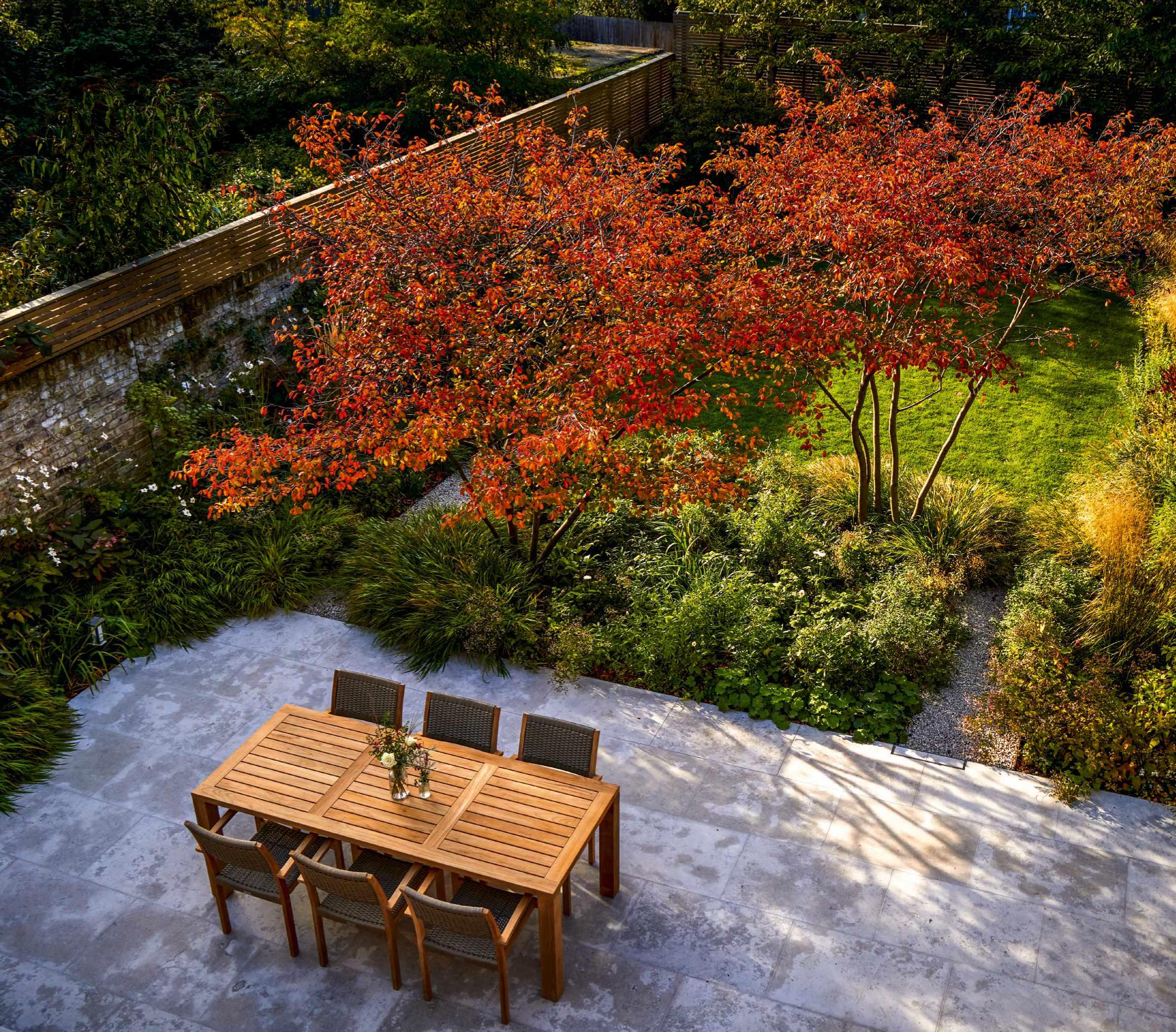
Hardiness zone USDA 9.
Screen time
Disguising a neighbouring block of flats was the key requirement in this south London garden, designed by Studio Cullis
WORDS NATASHA GOODFELLOW PHOTOGRAPHS RACHEL WARNE AND ALISTER THORPE
Among the many benefits of urban living, privacy is rarely top of the list. Those lucky enough to have gardens often find themselves overlooked, with the all-too-frequent result that the space goes unused – it’s hard to relax if you feel observed. So it was at this project in Brockley, south London, where a block of flats to the rear looked directly on to the house and garden.
“The previous owners had done a ‘protest planting’ of sorts,” says George Cullis of Studio Cullis, who was commissioned to redesign the space. “Two 14m-high leylandii and an 8m bay tree did block out the flats very effectively, but they also made the garden dark, inhospitable – nothing would grow beneath the trees – and completely unusable as a family garden.” New owners Nick and Zoe agreed. “We wanted somewhere that would draw us out into the space while still providing a degree of privacy,” says Nick. A lawn and large terrace were key requirements, and there were some more unusual requests, too. “We wanted quite naturalistic, understated planting,” says Zoe. “And since we have a lot of

Above left Different zones include a large terrace, a lawn and, close to the house, a wide, deep bed to capture the attention and draw the owners outside. The side beds, with their mix of shrubs, grasses and perennials, were inspired by a visit to RHS Garden Rosemoor in Devon.
Above right A pair of Amelanchier x lamarckii planted close to the house work with the cherries at the rear to effectively screen out the flats beyond. Cornus kousa var. chinensis help to hide the trunks of the cherry trees and combine with Libertia chilensis and Pittosporum tobira ‘Nanum’ to create the wildlife corridor stipulated in the planning requirements, which is designed to be left largely untouched.
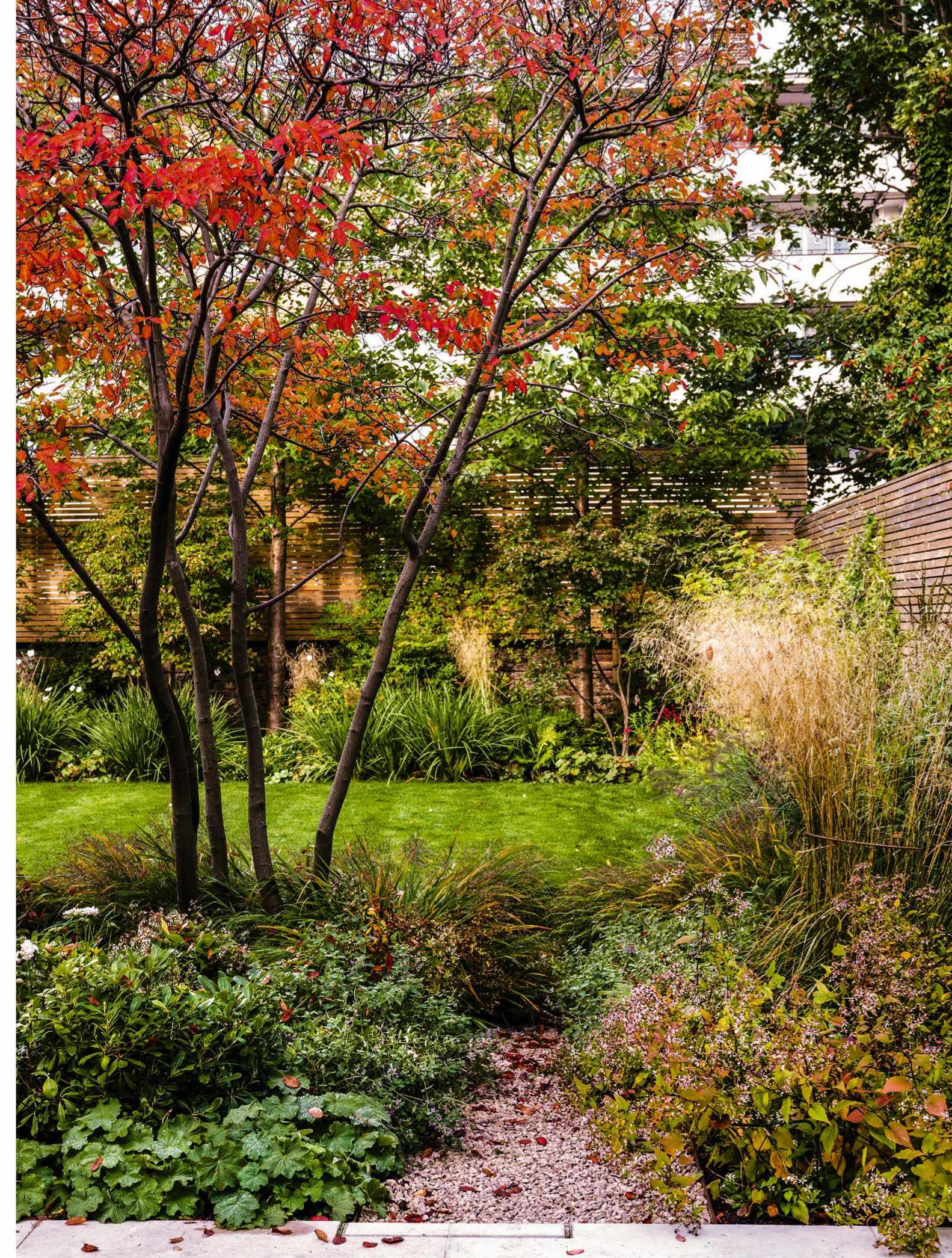
KEY PLANTS
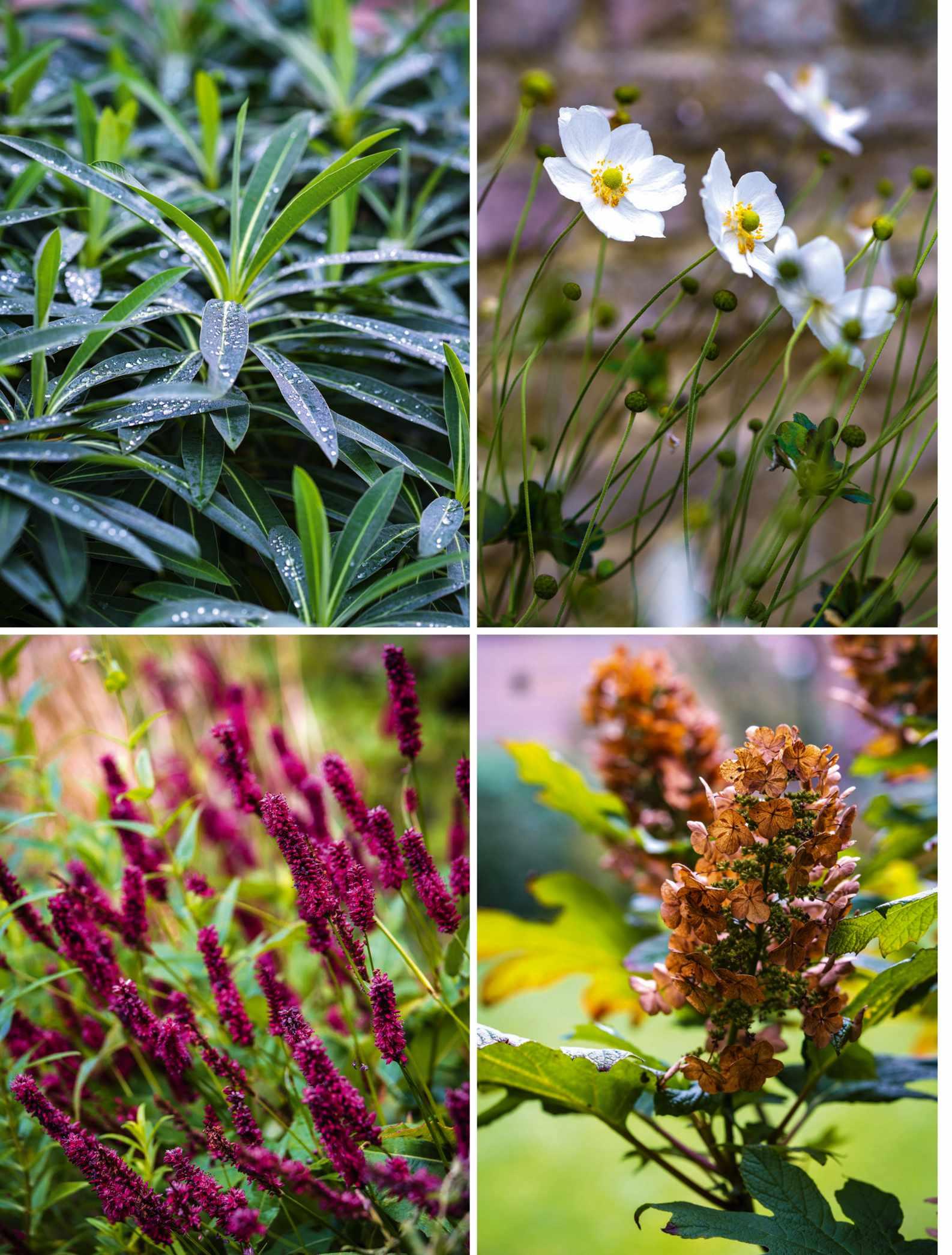
1 Euphorbia mellifera is a sturdy, dome-shaped shrub that can withstand the odd stray ball. Beautiful in rain when droplets sit like mercury on the leaves, it bears honey-scented flowers in spring. 2m. AGM*. RHS H3†
2 Anemone x hybrida ‘Honorine Jobert’ is used repeatedly throughout the garden, both for its long-lasting foliage and its pure white flowers, which light up shadier areas. A spreader, but easy to pull up. 1.25m. AGM*. RHS H7, USDA 4a-8b.
3 Bistorta amplexicaulis ‘Blackfield’ A perennial that’s as good for its foliage – neat clumps of heart-shaped leaves –as its deep-red flower spikes, which last from midsummer to mid-autumn. 75cm. AGM. RHS H7.
4 Hydrangea quercifolia The oak-leaved hydrangea has beautiful, cream-coloured, conical flowers in summer and as the flowers fade in autumn, the green leaves flush red and purple. 1.25m. RHS H5, USDA 5a-9b.
family birthdays in spring and late summer/autumn, we decided these were the moments when we would like the garden to peak.”
Taking inspiration from both forest gardens and the small, urban gardens at the South London Gallery (designed by Fraser & Morris) and the Garden Museum (designed by Dan Pearson), George has created a garden that fulfils the brief admirably. To address the need for privacy, George has chosen deciduous trees with both beautiful blossom and late-season colour, as well as a relatively dense tracery of winter branches, as the backbone of the garden.
In a deep bed bordering the terrace are a pair of beautiful, multi-stemmed Amelanchier x lamarckii, which not only draw attention to the front of the garden but also frame the view of the lawn and planting beyond, bracketing it in delicate, white blossom in spring and rich, copper tones in autumn. To the rear, tall, mature cherry trees (Prunus avium ‘Plena’), whose leaves turn a kaleidoscope of reds later in the year, fulfil a similar role as the pre-existing leylandii but with a much lighter touch, also allowing other plants to establish beneath them. Now populated with Cornus kousa var. chinensis, Libertia
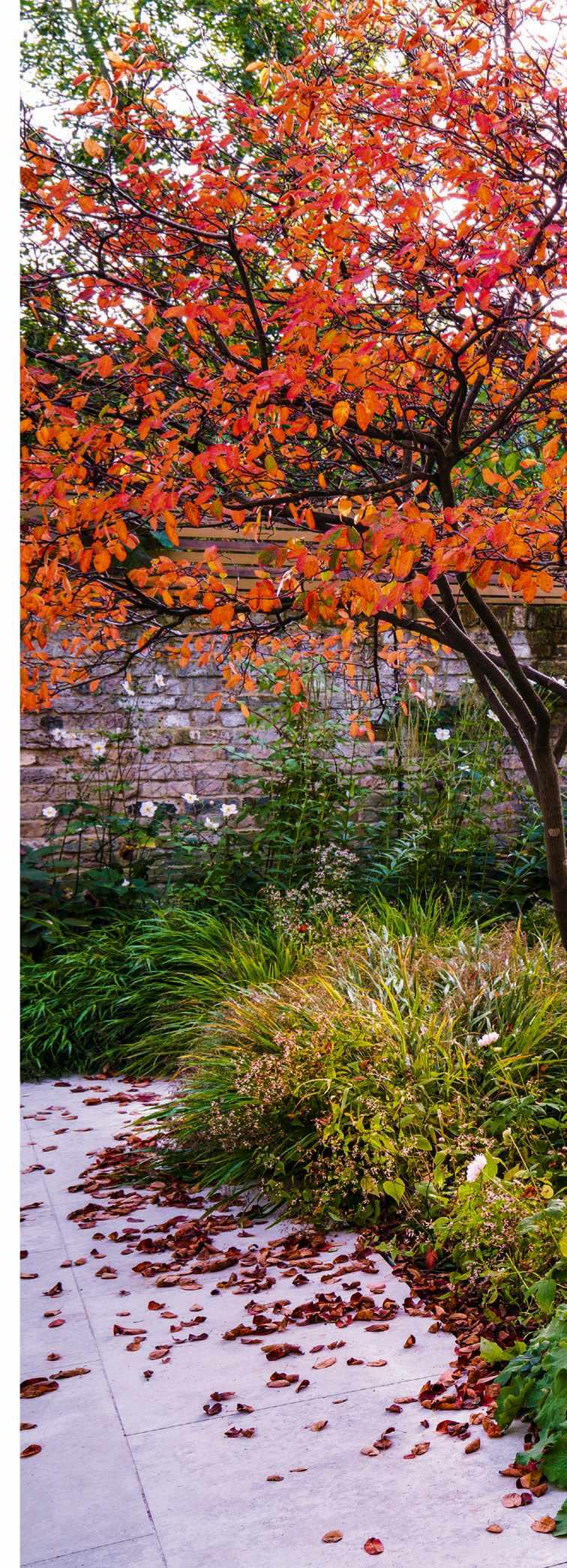
Hard-working trees
“It’d be lovely if there were another tree for small gardens that was as hard-working as Amelanchier x lamarckii,” says George. “Though it can grow up to 8m high, I like to use multi-stemmed specimens, which are lower and slower growing, and create a lovely loose, sculptural form in the garden that can cast beautiful shadows on to a wall or terrace. It also o�ers an enormous amount of seasonal interest, from the coppercoloured emerging leaves and masses of white flowers in spring, via the scarlet, edible fruits in summer – much loved by the birds – to its rich-red colouration in autumn.
“Since it is so popular, a lot of nurseries o�er this species so it is relatively easy to find a shape and size that suits. For this garden, I wanted trees that had a high-enough canopy to walk beneath, but not so high that they hid the cherry trees behind, when seen from the house. I also like their spreading, umbrella-like canopy, which casts a lovely dappled shade and can make for some beautiful shadow play on a wall or terrace. When the leaves fall in autumn, they make a striking contrast with the pale limestone paving below.”
Above The deep bed nearest the house has been designed to peak in spring and autumn, in line with the family’s birthdays. Early in the year Helleborus foetidus mixes with Galanthus elwesii and crocuses, followed by narcissi, Fritillaria meleagris and tulips. Later on Eurybia divaricata Hakonechloa macra Pennisetum alopecuroides ‘Hameln’ and Anemone hupehensis var. japonica ‘Tiki Sensation’ take over the show.
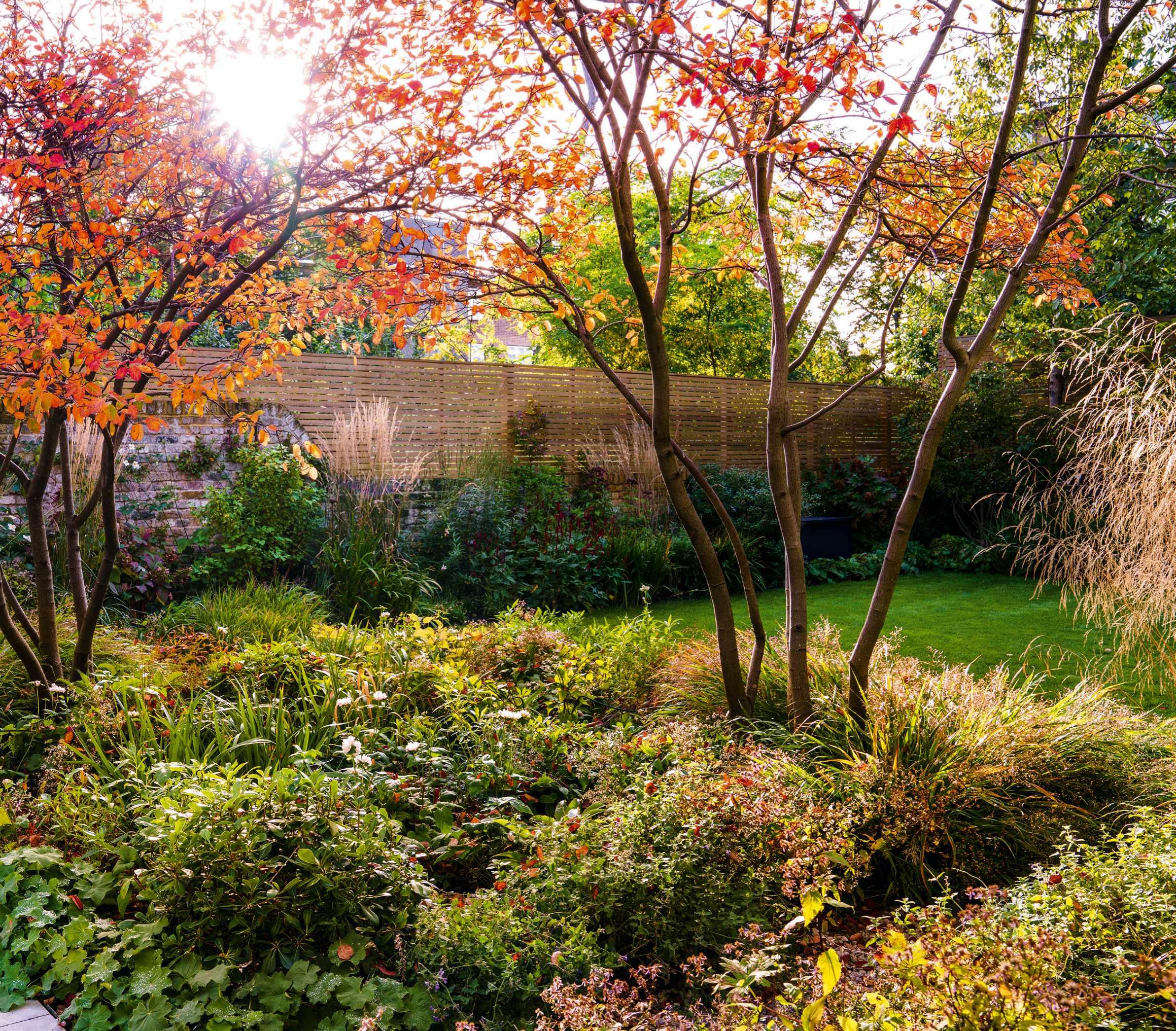
Deciduous trees with beautiful blossom, late-season colour and a dense tracery of winter branches form the backbone of the garden
chilensis, Dryopteris wallichiana and Nandina domestica, this area is designed to be left largely undisturbed. “A wildlife corridor was part of the planning requirements,” says George, “so this is a place for nature to do its thing.”
In contrast, the amelanchier bed close to the house – designed primarily for spring and autumn interest with snowdrops, daffodils, fritillaries, Gillenia trifoliata and Eurybia divaricata – is actively intended for human interaction. Slim gravel paths through the planting tempt you out and clumps of Pennisetum alopecuroides ‘Hameln’ and Nepeta racemosa ‘Walker’s Low’ are positioned to tickle your legs as you brush by. “At 3.6m, it’s a pretty deep bed,” says George, “but by positioning it close to the house and making you look through it, it makes the garden seem bigger.”
Summer interest comes chiefly from the side borders and their mix of flowering shrubs, grasses and perennials including Physocarpus opulifolius ‘Dart’s Gold’, Calamagrostis x acutiflora ‘Karl Foerster’ and Bistorta amplexicaulis ‘Blackfield’. Throughout the garden, George has been careful to choose sturdy plants that can withstand the inevitable stray balls from the children’s games.

Where trees are a focal point, it pays to choose specimens that have been grown next to each other to create a sense of cohesionAbove Wide limestone steps from the house to the terrace act as additional seating, making this a fantastic space for entertaining. The small, raised herb bed close to the house is a practical and attractive touch. Though the clients were not initially keen on grasses, they have come to love the movement they add to the garden.
Though the design is relatively formal and geometric, with a broad limestone patio providing ample space for entertaining, and with the steps down from the house acting as handy additional seating, the overall effect is fluid and unfussy. “I like my gardens to look as if they’ve grown up naturally,” says George, adding that where trees are intended as a focal point, he always likes to pick specimens that have been grown next to each other. “There’s a sense that they relate to one another,” he says.

For Nick and Zoe, the project has turned out better than they dared hope, enabling them to spend far more time in the garden than ever before. “The first thing we do in the morning is open the doors and come out here,” says Nick, marvelling at the amount of wildlife they see and how long the planting lasts. “For 11 months of the year it looks full and healthy – it’s a lovely bit of nature that really draws you in.” n
USEFUL INFORMATION
Find out more about George’s work at studiocullis.com

Above The russet tones of the amelanchiers are picked up in other plants around the garden. These include the Gillenia trifoliata beneath the trees and the crimson glory vine, Vitis coignetiae, planted along one of the side walls. Plants such as Hakonechloa macra and Nepeta racemosa
‘Walker’s Low’ are allowed to spill over the gravel paths, creating a relaxed, informal feel.
Growing a brighter future
An inspiring social enterprise offers horticultural training to improve prisoners’ employability
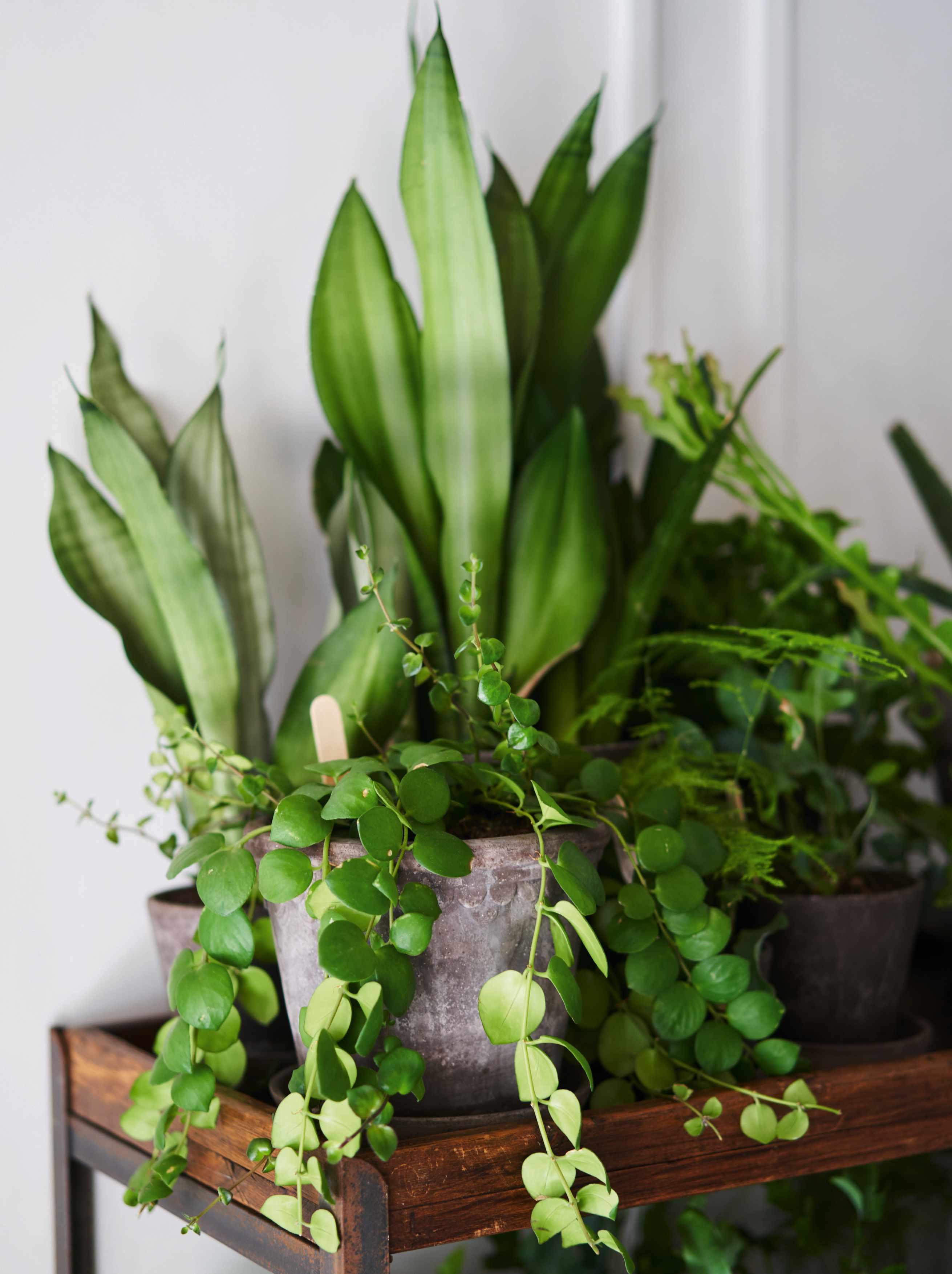
WORDS PAULA McWATERS
PHOTOGRAPHS LISA LINDER
Kali Hamerton-Stove, who co-founded The Glasshouse project with her friend Melissa Murdoch, outside the project’s shop in Cranbrook. Facing page A selection of the project’s houseplants. The women are taught how to keep all the plants in tip-top condition and they repot them in custommixed, peat-free compost.

Clare is holding a healthy-looking umbrella plant (Heptapleurum arboricola) with her name on it. She has grown it on from a discarded broken stem and is nurturing it to give to her mum when she is released next year.
Clare is one of a small team of prisoners at East Sutton Park women’s open prison in Kent who are growing and tending houseplants as part of The Glasshouse project, a social enterprise co-founded by project director Kali Hamerton-Stove and social entrepreneur Melissa Murdoch.
The scheme’s aim is to help women rehabilitate when they leave prison by offering horticultural training and improved employment opportunities. Kali and Melissa hit upon the idea for it in 2019 when they learned that two of the glasshouses at the prison were largely unused, due in part to cuts in land-based training in recent years. Post-release, women can face significant problems finding a job and somewhere safe to live. The insecurity this engenders can lead to issues with reoffending and this is where Kali and Melissa felt they could do something to help.
Tennessee-born Kali has a background in international marketing and ran her own café/plant shop locally, so botanics were a natural fit. With Melissa, she formulated an idea to train up to ten women at a time to raise houseplants in the glasshouses and their initial business plan, supported by a £50,000 director’s loan, was based around plantscaping. This entails sending in a team to install and maintain houseplant schemes in corporate settings, which generates an ongoing income stream. To this they have added online sales, corporate gifting and now a smart plant shop (called The Glasshouse) in nearby Cranbrook, where the women gain experience working in a retail environment.
The project began in February 2020 and, despite the many challenges – both of Covid and of learning how to integrate into the prison’s system – it has thrived, doubling its turnover in two years. All profits are reinvested to grow the programme and to help ex-offenders rehabilitate. Women who apply to work in the scheme train on site for an NVQ in horticulture with modules tailored to houseplant cultivation, skills they can take on into further employment post-release. They also receive practical, mental and emotional
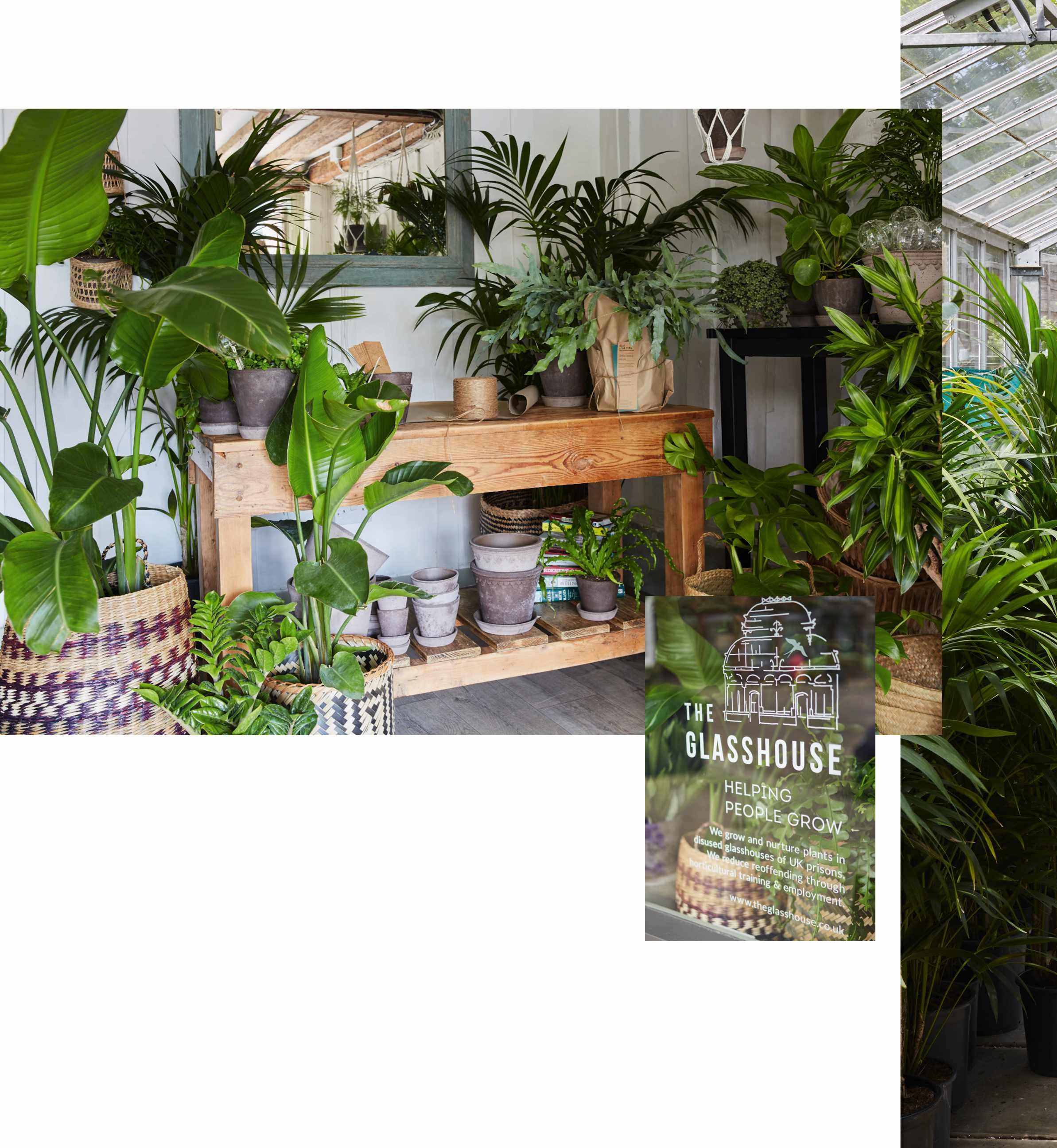
This page (clockwise from left)
Two large glasshouses at East Sutton Park women’s prison have been given over to the houseplant project. Each houseplant that is sold goes out with full directions for its care.

Clare holds her little umbrella plant nurtured from a rescued offcut, and planned as a gift for her mum.
Mail-order plants are beautifully gift-wrapped in biodegradable paper packaging and card.
All pro�ts are reinvested to grow the programme and to help ex-o�enders rehabilitate
This page (clockwise from below)
Large specimens such as these parlour palms are used in plantscaping schemes which are installed by the women.
Glasshouses dedicated to the houseplants sit alongside a couple that are used to raise plants for the prison garden. Training is given in identifying and then carefully labelling all the plants being cared for.

4 OTHER HORTICULTURAL SOCIAL ENTERPRISES
• The Walled Garden offers therapeutic gardening programmes aimed at people experiencing isolation and loneliness. thewalledgardenatmells.co.uk
• Urban Growth empowers communities to create and care for accessible natural urban spaces. urbangrowth.london
• Garden Needs, part of Social Adventures, is a mental health horticultural initiative offering green wellbeing projects in Greater Manchester. gardenneeds.org.uk
• Share runs Share Nurseries, which provides training and employment opportunities for adults with learning difficulties and autism. sharecommunity.org.uk
Nature is so soothing and being in the glasshouses brings a sense of peace
This page
Above Women work in the glasshouses two days a week and are trained in all aspects of houseplant care.

Left Nurturing the plants on a day-to-day basis is both satisfying and calming for the women who spend time here.
support, provided by Maria Love, who has joined the project as head of social impacts.
Kali has set high standards: plants are bought in small and grown on, being repotted into peat-free compost tailored to each plant. Propagation skills are taught too, although there isn’t enough space to do this on a commercial scale. Their houseplants are lush and healthy and those for sale online and in the shop are planted up into fine Italian clay pots with matching saucers. Mailorder packaging is all biodegradable.
Clare and two of the other women, Katie and Carla, speak of the benefits that the scheme has brought them. Clare and Katie both say that plant care has become a vocation and they have ambitions to keep working for the project when they leave prison. “It’s my calling now,” says Katie. “Nature is so soothing and being in the glasshouses brings me a sense of peace.” Clare agrees. “Working in the shop makes you feel like a normal person,” she says, “and helps you adjust back into society.” Meanwhile Carla reports that her family has noticed a positive change in her since she started working with plants. “Being here has
given me a sense of purpose and structure to my day,” she says. “I feel really lucky to be part of it.”
Kali notices the difference in the women in the programme too. “During Covid, they’d come into the glasshouses pent up and upset. By the end of the day you could see them unwinding, be more at peace.” She revels in seeing them gain skills and improve in confidence and ability. “In prison they have no control over anything in their lives and when you see them standing there giving advice to customers they are in control for once.”
The response to the project has been very positive and Kali now has ambitions to roll out the scheme to other prisons. It is possible she may expand into men’s prisons but for now, she is focusing on women. “We’re seeing the benefit to ex-offenders exactly as we envisioned,” she says. “Our aim is to set them on a path to find a good second chance in life and it’s incredible that, through growing houseplants, we have been able to do that.” n
USEFUL INFORMATION
Learn more about the project at theglasshouse.co.uk
Meeting of minds
Designer Peter Janke’s ecological garden combines German precision with Beth Chatto-inspired informality to stylish effect
IN BRIEF
What A plantsperson’s paradise with a collection of over 4,500 perennials divided into a connected series of garden areas with an active plant nursery at its centre.
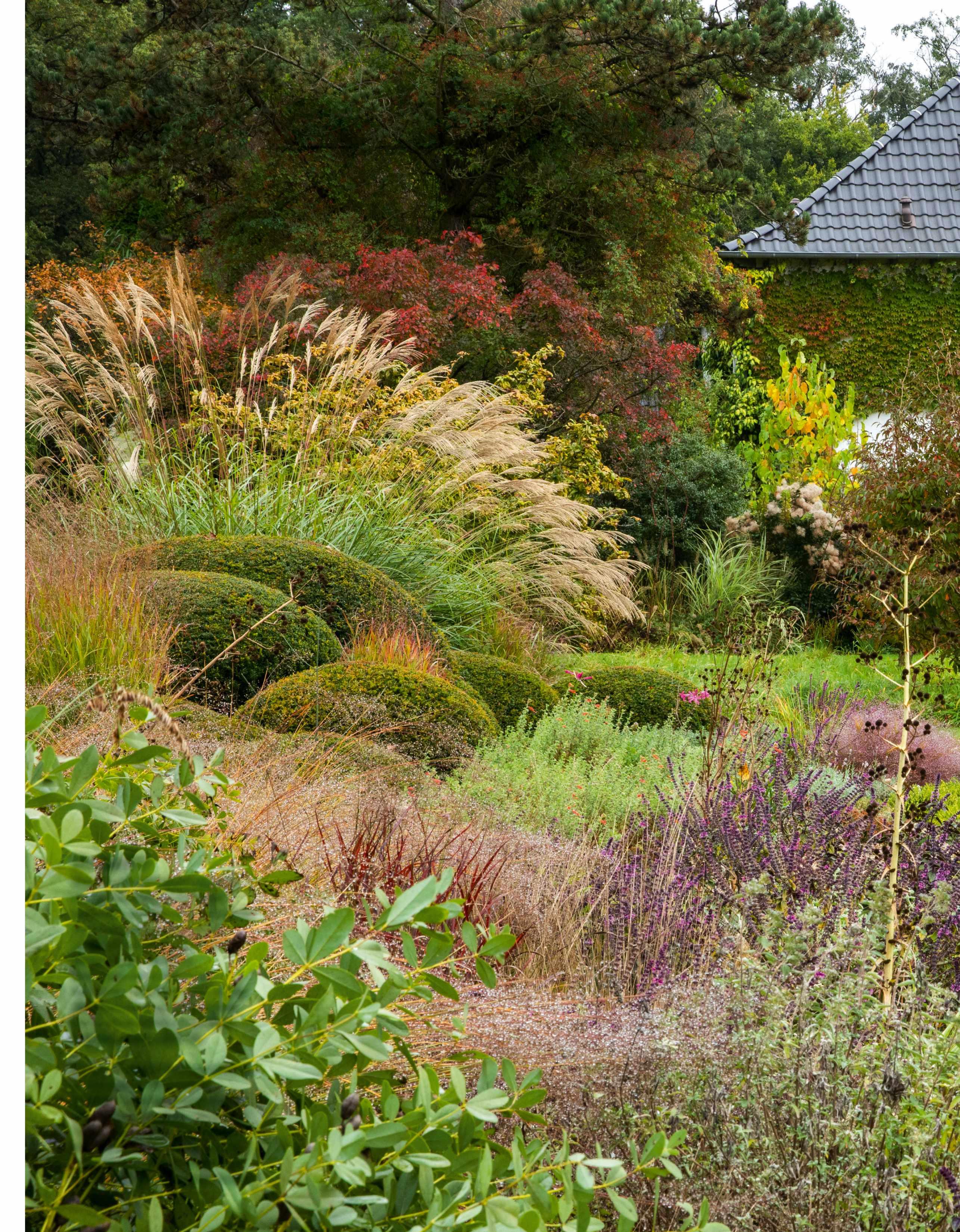
Where Hilden, Germany.
Size Three and a half acres.
Soil Acidic sand with areas of clay
Climate Continental but relatively due to the proximity of the Rhine.
Hardiness zone USDA 8a.
A strip of drought-tolerant planting on the edge of the orchard meadow. Dead stems of Eryngium paniculatum rise above the purple flower spikes of Ocimum ‘African Blue’, while plumes of Miscanthus transmorrisonensis contrast with the clipped forms of Taxus baccata
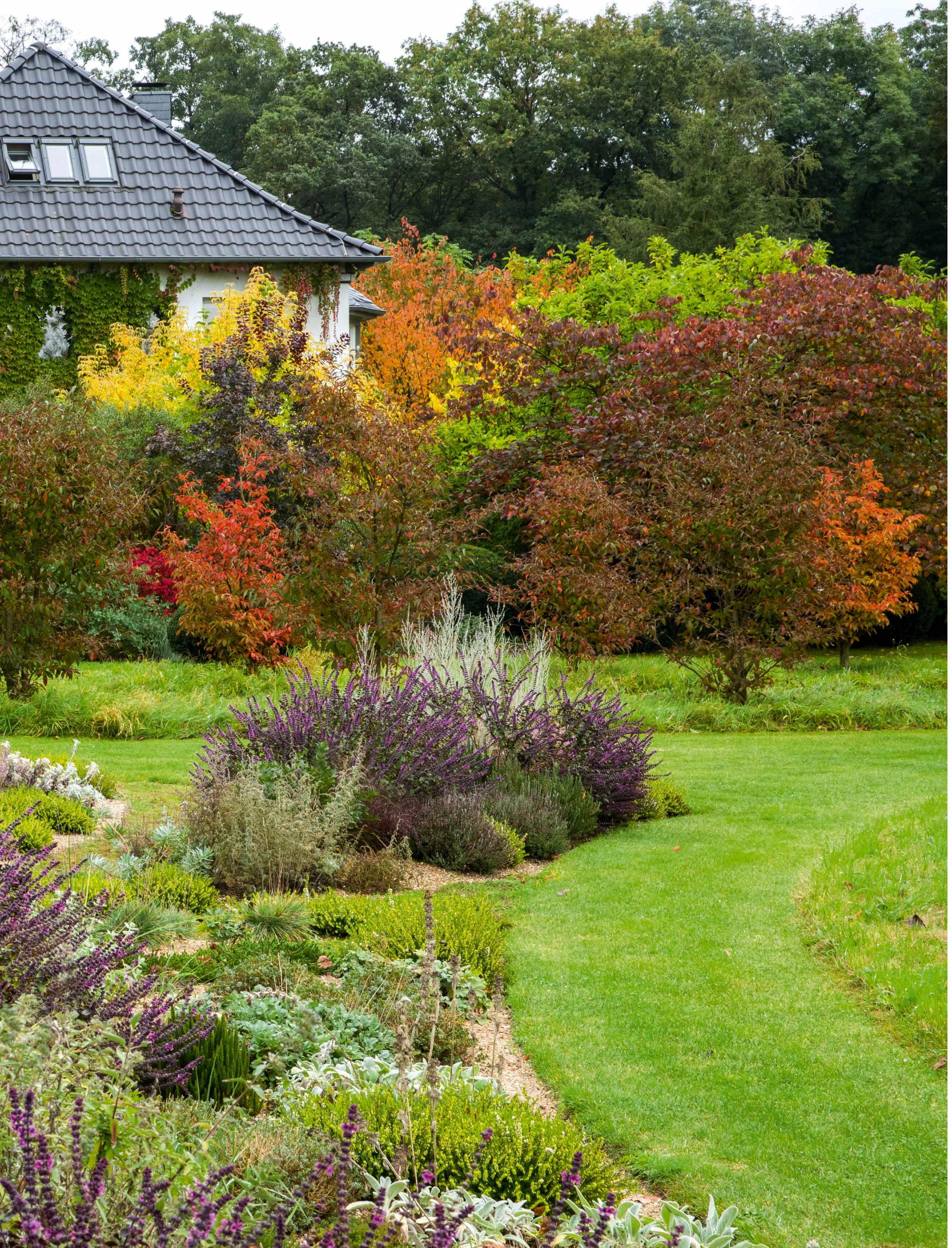
Few people in the world of horticulture have such a broad portfolio as the German designer, nurseryman, writer and florist, Peter Janke. His upbringing was surrounded by plants – his grandparents owned a nursery – but Peter initially prioritised architecture. This all changed when he read Beth Chatto’s pioneering book, The Dry Garden, in which he found ecologically sensitive, plant-led design. “It touched my soul,” he says, and set him on a path to Beth’s garden in Essex where he would work on and off for two years. This passion has found expression in a remarkable assortment of more than 4,500 plants, amassed with his husband Michael Frinke in their garden and nursery, Hortvs, near Düsseldorf in Germany.
Turning off a busy street, a straight drive cuts through an expansive front garden to the main house and nursery, which lie at the centre of the garden. The formality of this drive, regularly punctuated with Cupressus sempervirens Stricta Group, is the first indication of Peter’s style, with loose, naturalistic planting tempered by geometry and clipped hedging. Peter may be promoting the lessons of Beth Chatto but admits she did not share his love of topiary. It is fitting therefore that
his gravel garden, a direct homage to Beth, shows the most looseness – curving beds run through with rivers of gravel. The remaining plumes of grasses such as Stipa gigantea and Stipa tenuissima catch the low, late-autumn light, illuminating the deepening foliage colour that frames the garden – not irrigated since its creation.
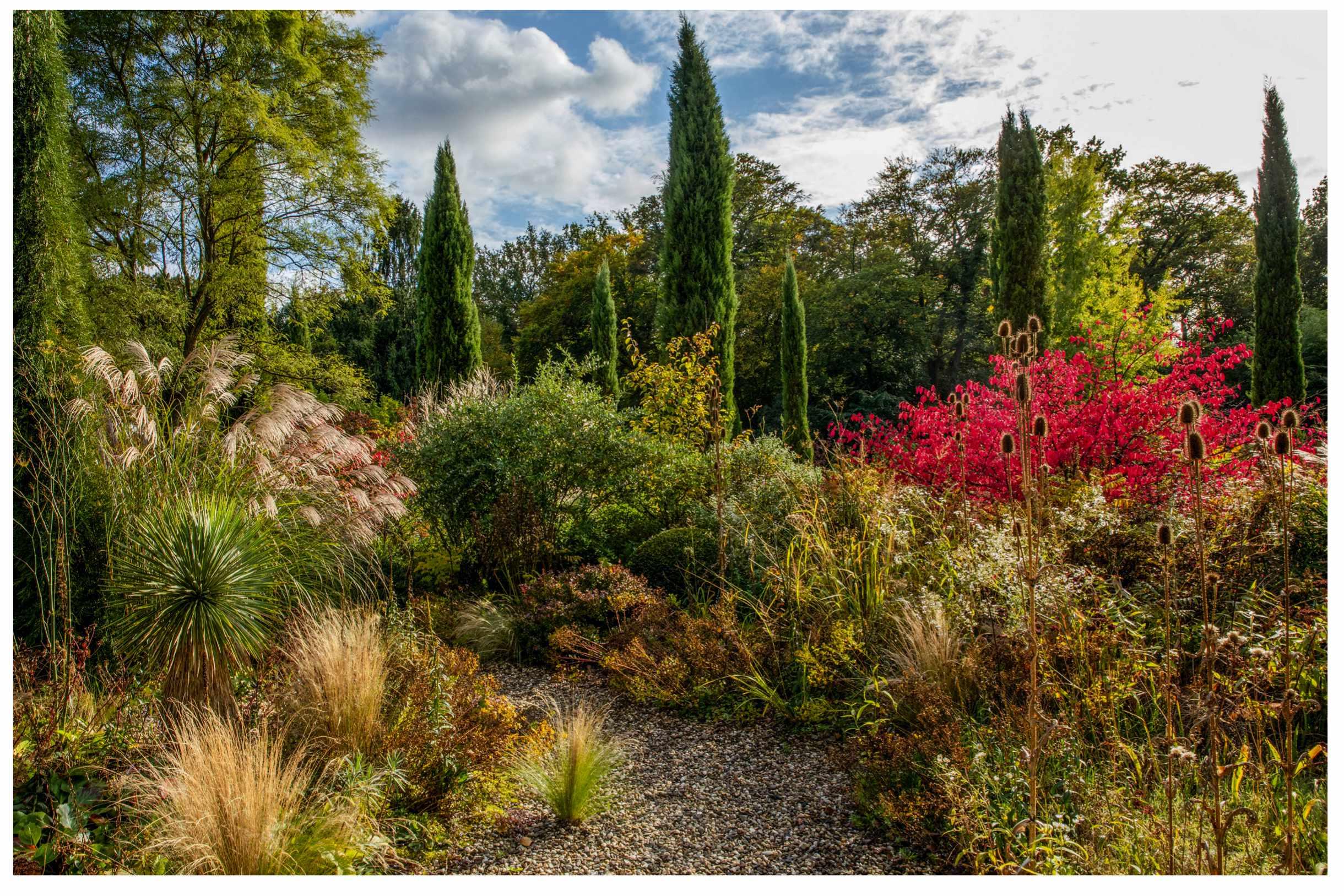
Peter recognises how crucial it is to work with the soil – mainly acidic sand – and not amend it too much. On planting, perennials get an initial feed of bonemeal and grit but are then left to fend for themselves; shrubs and trees are watered while they establish. When Beth first wrote The Dry Garden she would ‘improve’ the soil by adding compost and even peat to increase its moisture retentiveness before top dressing with gravel. The thinking has since developed with an awareness that drought-tolerant plants grow better in natural and often more mineral soils. When it comes to planting, Peter says Beth is still firmly in his mind, her maxim of ‘right plant, right place’ and the recognition that, even if plants have evolved in different parts of the world, their shared adaptation to dry conditions mean they will sit comfortably together.
These lessons can be seen in Peter’s silver garden, which sits adjacent to the gravel garden but where sinuous curves have resolved into concentric circles – an increased formality that
To continue turn to page 100
Above In the dry garden Stipa tenuissima is left to self-seed as rivers of gravel run between droughttolerant perennials. A group of Cupressus sempervirens Stricta Group beat a vertical rhythm, while other plants, such as common teasel, further loosen the scene, their strong skeletons standing out against the deep red of Euonymus alatus foliage.
Right above Moments of clipped, evergreen formality are a counterpoint to the loose naturalism of the main plantings. Early on Peter used large amounts of box but because of the twin attacks of blight and box caterpillar almost all have been removed. Here tight yew hedges underplanted with Alchemilla mollis lead to sentinel clumps of Miscanthus sinensis ‘Rotfuchs’.
Right below The rusted band of Corten steel edging contrasts warmly with the light greens and glaucous tones of the silver garden. A ring of Salix alba ‘Liempde’ frames the planting. Once pollarded, these trees will let in large amounts of light early in the year before growing out to offer beneficial shade in the heat of the summer.
Loose, naturalistic planting
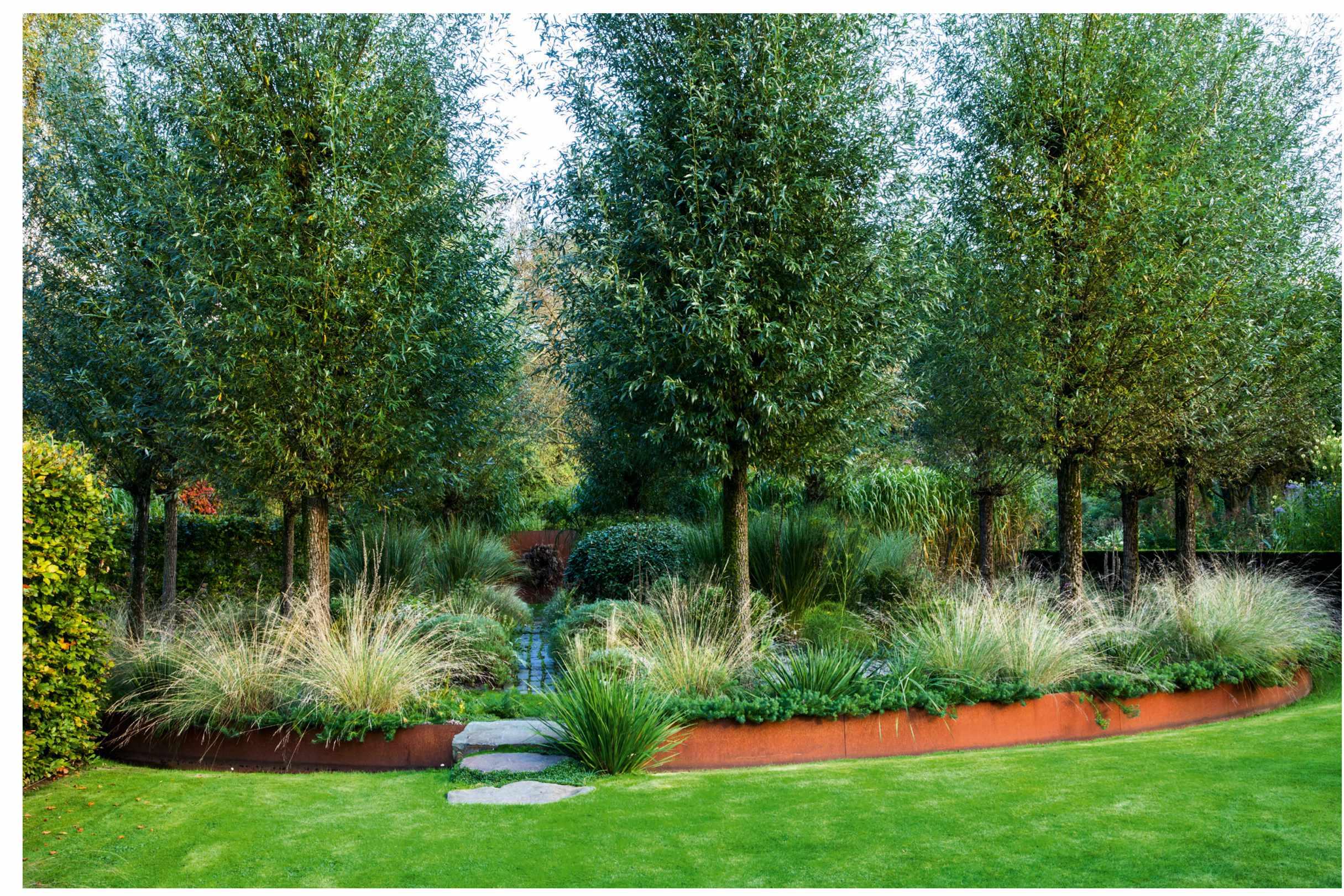
is tempered by geometry and clipped formality, alongside the mantra ‘right plant, right place’
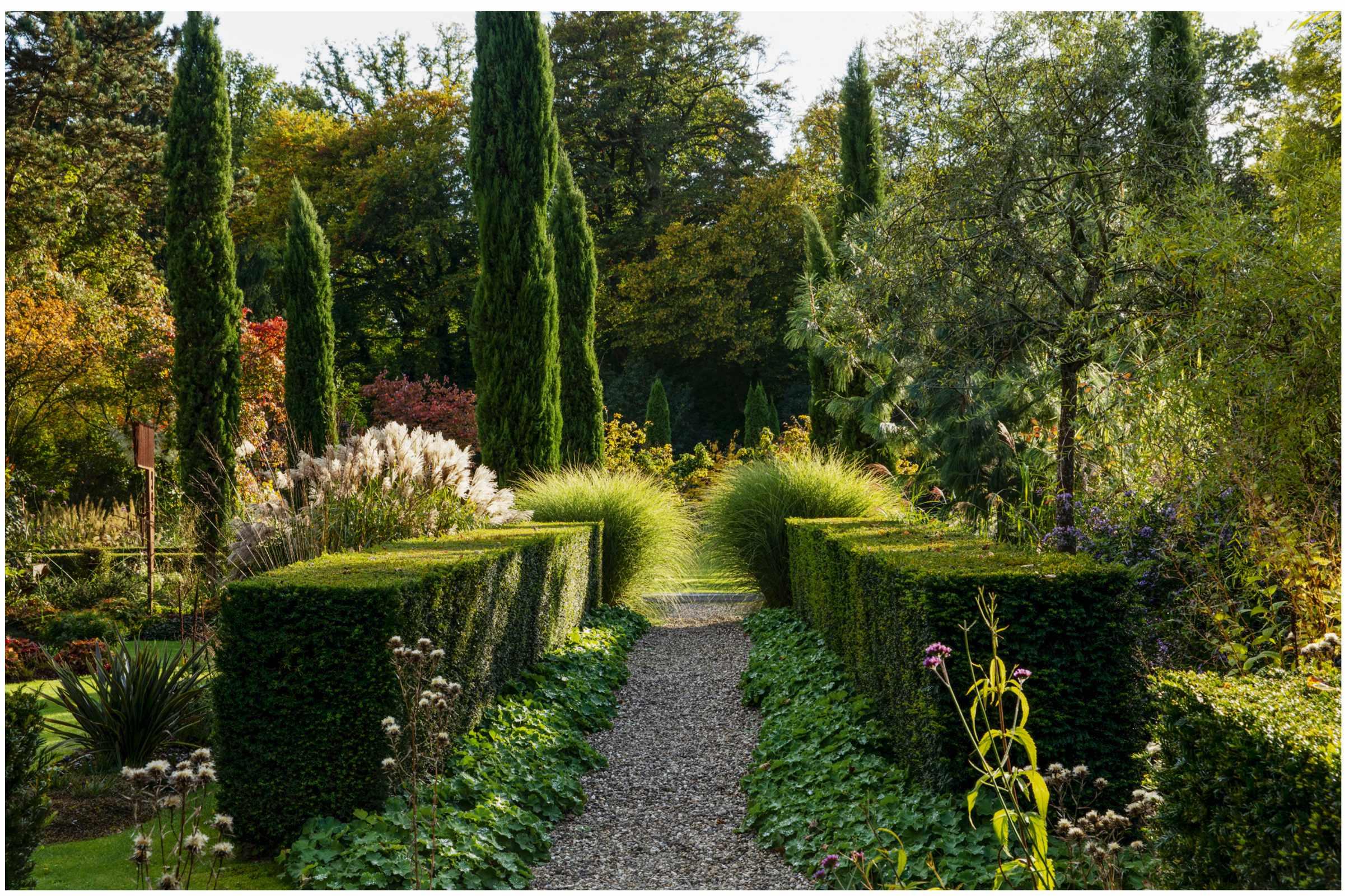

Gardening for a changing climate
As with most of the world, Germany is experiencing severe weather conditions as a result of climate change. This has been expressed in recent years by hotter summers and prolonged periods of drought often followed by flash floods. This poses a dilemma for gardeners as increasingly regular hosepipe bans mean that it is not possible to rely on irrigation to see plants through the summer. Peter admits that many of his plants have struggled in recent years, but for him it is necessary to adapt.
The most obvious first step in tackling climate change is to use a di�erent palette of plants. But it’s not as simple as just planting more Mediterranean species as many of these, while suited to hot, dry summers, will resent the increasingly wet winters. By creating beds with excellent drainage many issues of winter wet can be alleviated. While large amounts of organic matter can improve the water retention of a soil, too much rich compost and rotted manure can encourage excessive leafy growth
that is often more susceptible to pests and disease. Combined with well-timed planting and deep watering during establishment, a poorer soil can actually encourage a larger root system as the plant searches for nutrients. This in turn makes the plant more resistant to drought compared with well-fed, but more shallowly rooted, plants. Early spring mulches with low-nutrient material, such as leaf mould, is preferable as this improves soil structure, drainage and water retention without overfeeding.
Increased worm and insect activity creates burrows and channels that aerate plant roots and improve drainage, and organic, probiotic treatments can also improve the diversity of the soil microbiome. Many of these organisms work in symbiosis with plants, helping to prevent disease while improving access to water and nutrients through the mycorrhizal network. Plants established in this type of ‘living’ soil will be much more resilient to changes in climate and weather.
The gentle undulations of Taxus baccata offer an evergreen solidity to the softness of the grass-heavy planting. This perennial mix will be left all winter to provide habitat for insects and only cut down in March to allow for emerging shoots. The purples of Cotinus ‘Grace’ and Euonymus alatus contrast well with the dark green of the columnar cypresses (Cupressus sempervirens Stricta Group) and the silvery tones of faded perovskia (Salvia yangii). Sharp points of pink come from later-flowering nerines selected by famous plantswoman Margaret Owen.
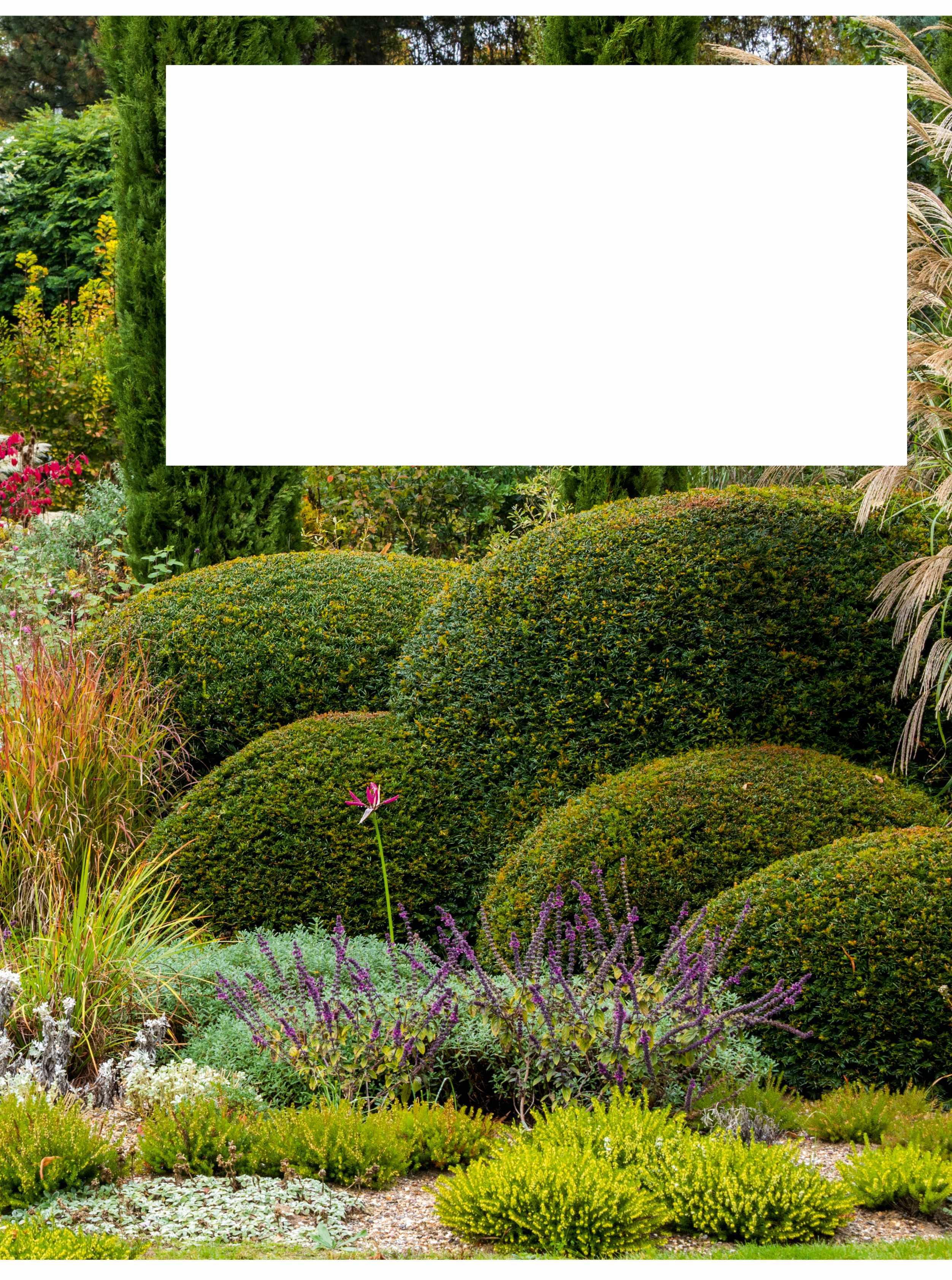
prepares you for the rest of the garden. In the centre of the garden is a gently raised mound of mainly sand with plants of similarly drought-tolerant adaptation, from architectural yuccas to the felty leaves of carpet-forming Stachys. Peter has ringed the planting with 12 upright willows (Salix alba ‘Liempde’), which, if allowed, would grow into large trees but are cut back hard in late winter letting in plenty of early spring light and are grown out to provide beneficial shade by midsummer. These pollarded trees provide an architecture to the space as well as verticality.
A natural spring once kept part of the garden moist but over the past five years it has dried up. While the increasingly hot summers exacerbate the problem, Peter also points to high levels of development in the area with building and industrial sites pumping water to lower the water table. There is a further factor in the unpredictability and increased number of high rainfall events. This puts pressure on the local government to create more emergency reservoirs to capture the flood water but this in turn further drains the water table.
What sets Hortvs apart is this special meeting of plantsmanship and design, and crucial to this is the nursery. Peter admits that it is very hard to make money selling plants and it is the design work that supports the garden but
that he “could not be a good designer without the nursery”. He goes on to explain that, while he is also keen to promote the same ecological principles in his designs, “my garden is my garden and in many parts has nothing to do with my work for my clients”. This is due to the diverse range of unusual plants requiring specialist maintenance.
The nursery also poses other challenges for, while Peter is totally organic in the garden, he uses slug pellets to protect young seedlings. He has been tempted to protect the hostas in the garden, which have been devastated by a new snail from the Mediterranean, but admits the need to “be consistent”, and is cautious of nematodes, which can affect a wide range of insects.
Peter sees this garden as an important tool for promoting a more environmentally conscious style of gardening where people can be inspired by the diversity of plants much as he was when he first opened Beth’s book all those years ago. n
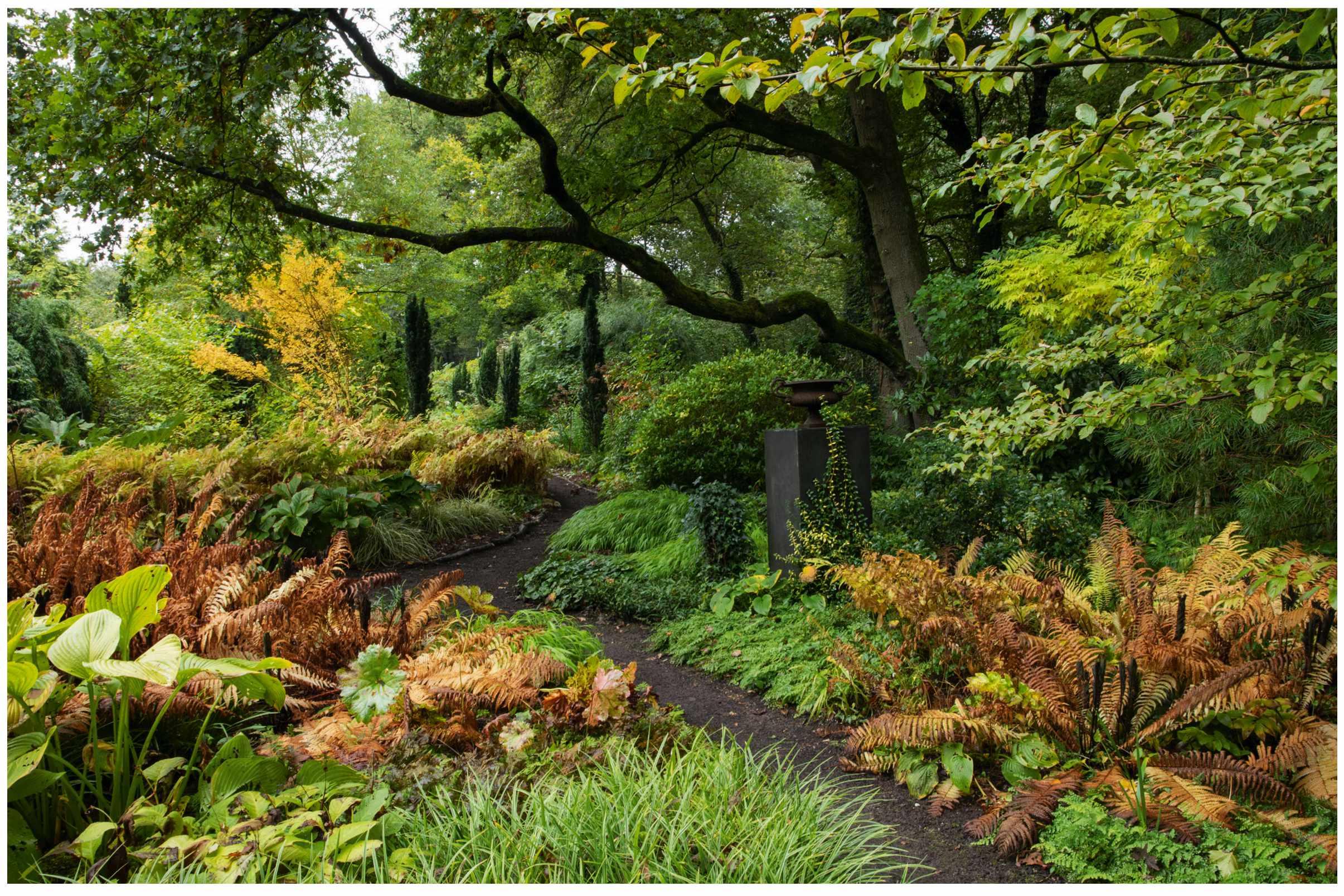
USEFUL INFORMATION
Address Hortvs, Hochdahler Straße 350, 40724 Hilden, Germany. Tel +49 (0)2103 360508 Web peter-janke-gartenkonzepte.de
Open April – November, Thursday – Friday, 10am-6pm; Saturday, 10am-4pm. Gardens and nursery open in March and December but close an hour earlier. Garden admission �5.
Above Beautiful senescence in what was established as the damp garden. In recent years, however, the spring that kept this part of the garden moist has largely dried up as the water table has dropped. Peter is loath to irrigate the garden, meaning that large foliage plants such as rodgersias, hostas, Darmera peltata, Matteuccia struthiopteris and other damp-loving ferns have suffered. Even mature trees have been struggling, especially shallowrooted trees such as beech.
Right above A circular bench allows visitors to take a moment of contemplative rest under the cut leaves of Acer saccharinum
f. laciniatum ‘Laciniatum Wieri’ as the low, late-autumn light catches the foliage’s buttery tones.
Right below This shaded walk snakes behind the house along the edge of the garden farthest from the busy road, providing further moments of calm. Peter has accentuated this feeling with the cool, green palette, yet even here the repetition of fastigiate yews provides a formal contrast to the looseness of the perennial planting.
�ere is now a recognition that drought-tolerant plants grow better in natural and o�en more mineral soils
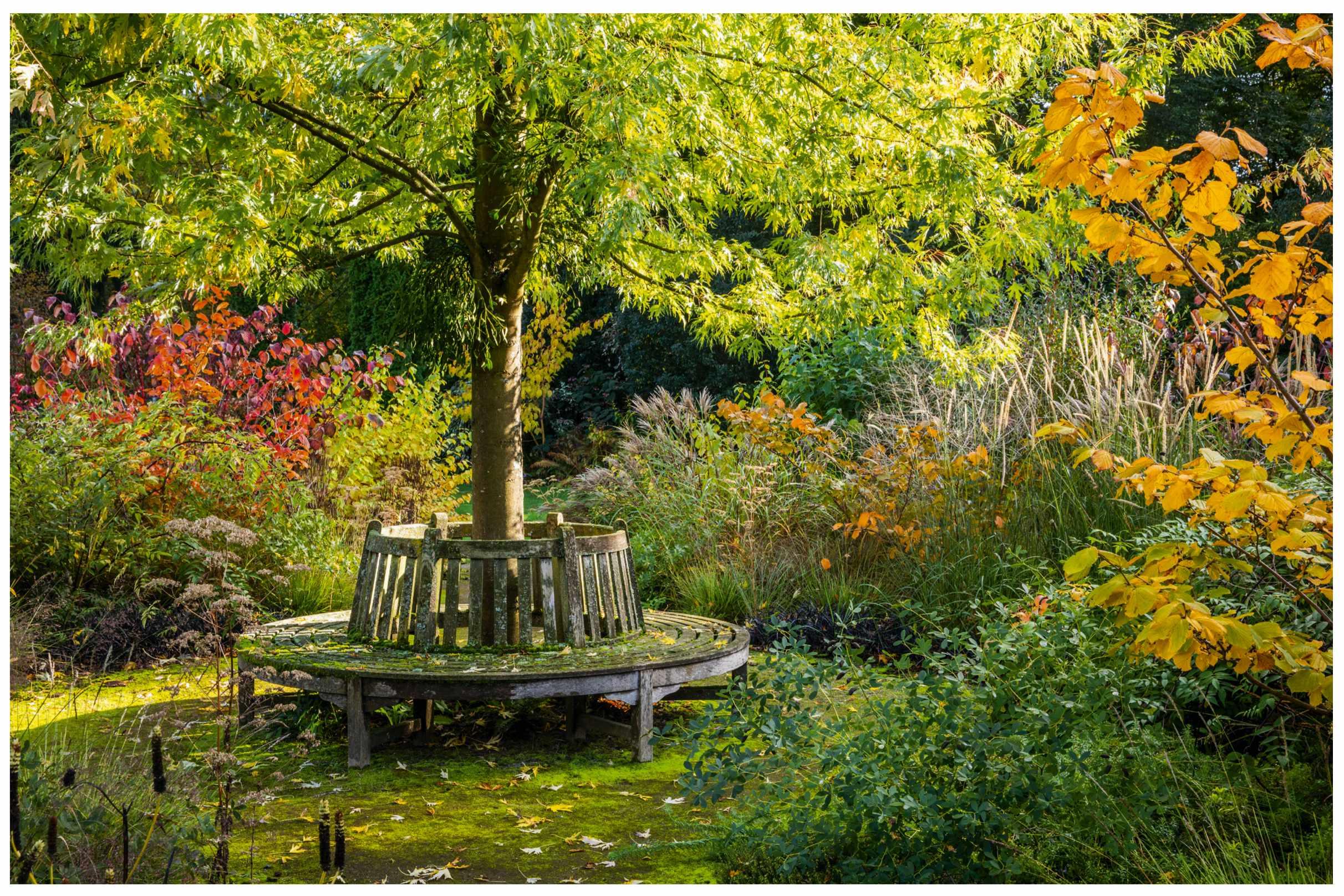
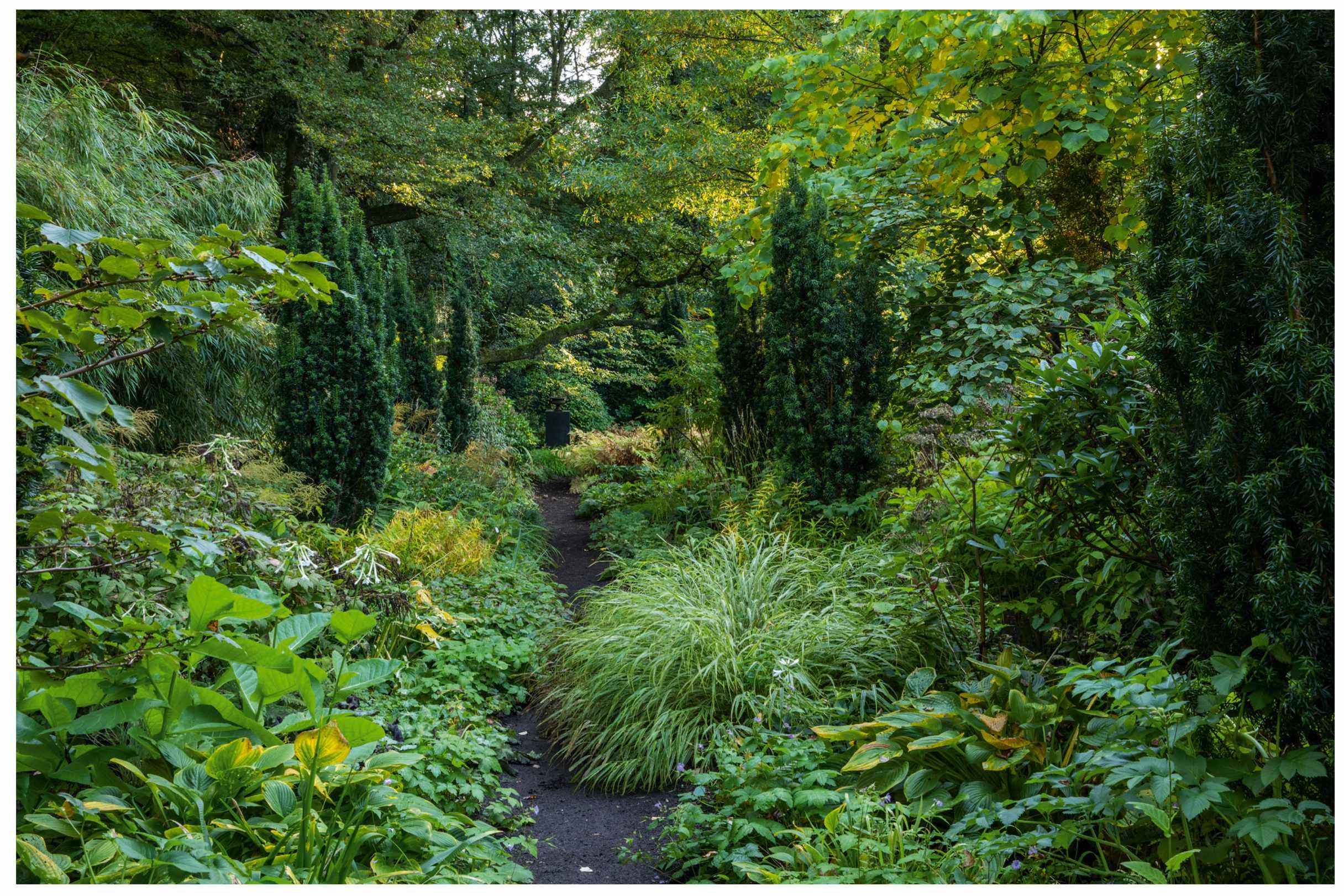


Design
NEW LIFE IN OLD RUINS
The National Trust has opened a new garden in the ruined Great Hall of Nymans, West Sussex, which was gutted in a catastrophic fire in 1947. The Garden in the Ruins, which was researched and designed by assistant head gardener Nick Delves, features plants introduced and propagated by the Messel family (famous for sponsoring plant-hunting expeditions) and their head gardeners James and Harold Comber. These include Camellia ‘Leonard Messel’, Eucryphia x nymansensis ‘Nymansay’ and Magnolia x loebneri ‘Leonard Messel’. The plants are presented in giant pots and planters and the space is divided by weathered steel screens, inspired by Oliver Messel’s theatre designs. nationaltrust.org.uk

1 THREE HOSPITALS, ONE VISION

A public–private partnership between the Hellenic Ministry of Health and the Stavros Niarchos Foundation has commissioned Renzo Piano and his team at Renzo Piano Building Workshop to design three state-of-the-art public hospitals in Greece, one each in Thessaloniki, Komotini and Sparta. The designs prioritise light, ventilation and proximity to nature to enhance patients’ recovery and wellbeing. Therapeutic gardens, new tree plantings and play areas will further enhance patients’ hospital experiences. Photovoltaic roof panels will provide most of the electricity, while geothermal systems support all the heating. The hospitals are due to be completed in 2025. rpbw.com, designboom.com

CATHEDRAL GARDENS, BELFAST
The masterplan for Cathedral Gardens in Belfast, an area of sustainable and biodiverse green spaces combined with cafés and restaurants situated between Ulster University and St Anne’s Cathedral, has been presented for public consultation. Drawn up by Hassell Studio, the site will tell the stories of the city through artworks, landscape features and a memorial to the Blitz bombings. The plan shows expansive lawns, an urban forest, a tree-lined events area and an interactive water feature. The forest, lawns and gardens will be fed with collected rainwater. hassellstudio.com

ESTATE OF THE ART
Proposals to restore Grade II-listed Impney Hall and its naturalistic parkland setting in Worcestershire have been submitted for planning by LDA Design. The hall will continue as a hotel and restaurant, but many recent add-ons will be demolished. The public right of way across the estate will be enhanced and new pedestrian and cycle routes will connect with nearby Droitwich and the rail station. A mixed-use village of 125 homes and business spaces, designed by Proctor & Matthews Architects, will replace the conference centre and will include allotments and community orchards. lda-design.co.uk
PARTERRE FOR PITMEDDEN
The National Trust for Scotland has reopened Pitmedden Garden after a redesign of the historic parterre by Chris Beardshaw. The new design focuses on the upper terraces, which had an overlay of some early designs added in the 1990s. It creates what Beardshaw describes as a contemporary, deconstructed parterre, comprising herbaceous plants, bulbs and grasses, which increases biodiversity and provides year-round floral interest. Four 19th-century sigmoid pathways leading from the house terrace have been reintroduced in mown grass. nts.org.uk
FACTORY IN THE FOREST
Urban furniture maker Vestre has built a new production factory in a forested area of Magnor, Norway. The building, designed by Bjarke Ingels Group, consists of four ‘wings’ that tilt upwards at each corner, providing views out to the tree canopy, with an open-air courtyard in the centre. It is clad in charred larch, and the glass façades have been developed to ensure maximum transparency and low energy consumption. The roof is fitted with nearly 1,000 solar panels that are surrounded by vegetation. The surrounding forest area is open to the public for hiking and camping. theplus.no
MR FOX’S GARDEN
Handmade Garden Art and Decor
The perfect Gifts for Gardeners
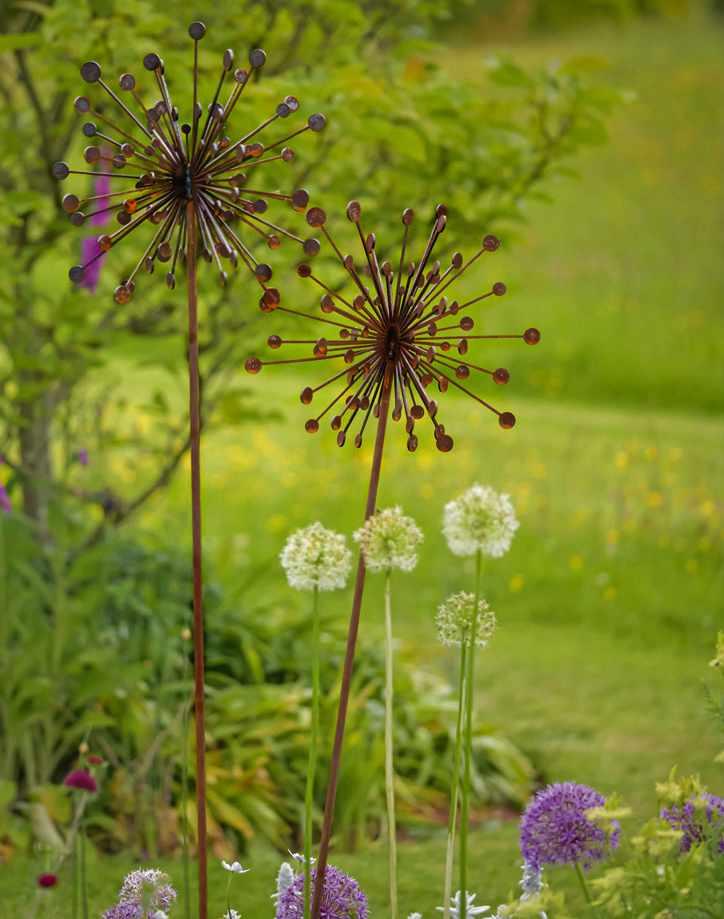

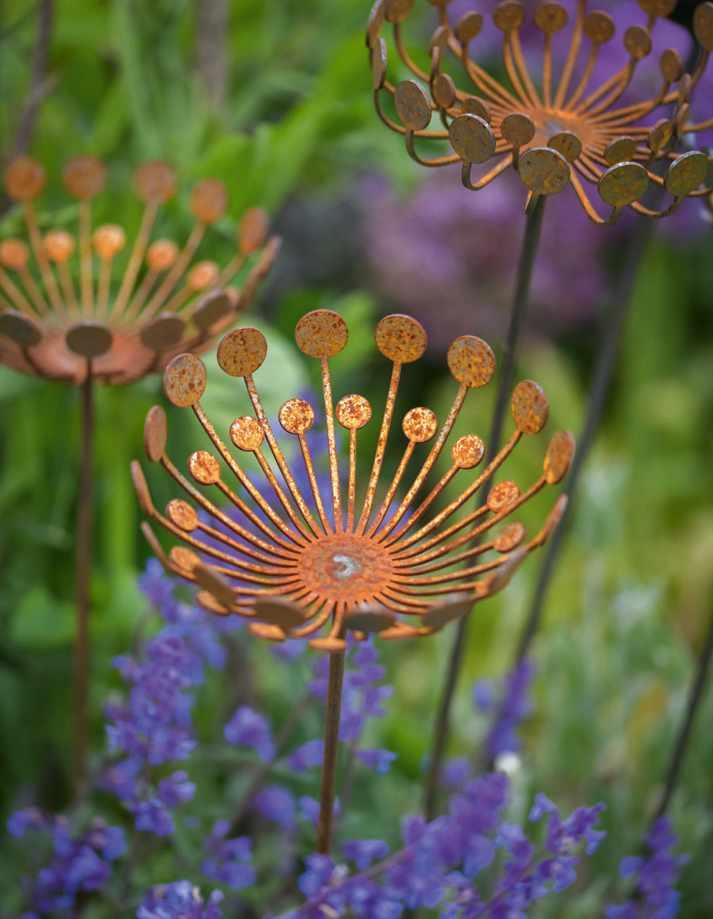
We offer a beautiful selection of metal artwork, which is all designed and hand crafted by us, in Devon. We also have some fun rustic Christmas decorations and a good range of artistic pieces, which give winter interest and structure.

6 TREEHOUSE TRIUMPHS
The three winning designs of the Treehouses at Kew design competition, a collaboration between the Royal Botanic Gardens, Kew, and the Museum of Architecture, have been announced. Applicants were asked to consider the relationship between natural and built environments, to work with innovative and sustainable materials and to celebrate Kew’s collection of trees. India Aspin and Amy Jenkins Smith’s Polypore/Play that Fungi Music is inspired by the wonder of mushrooms. The winning designs will form part of Kew’s treehouse exhibition, which will run from April to October 2023. See all shortlisted entries at museumofarchitecture.org
7 LIFTING THE LANDSCAPE AT RABY CASTLE
Designers Luciano Giubbilei and Alistair Baldwin have joined forces to create new landscapes for the garden at Raby Castle, County Durham. Giubbilei has designed a series of different elements for the Walled Garden, including a water garden at the centre with a rill that leads to the garden’s entrance, and a flower garden, intersected by narrow paths, with seating. Baldwin has designed a series of landscapes, including sculptural lawns that frame a historic view of the castle and parkland, and the Duchess Walk, a linear garden planted with multi-stemmed cherries and woodland species. raby.co.uk

Rooting for
change
By pledging to leave a gift in your Will, you can help Cancer Research UK continue to transform lives for future generations
One in two people in the UK born after 1960 will get cancer in their lifetime 1. But thanks, in part, to the help of charities such as Cancer Research UK, cancer survival in the UK has doubled in the past 40 years.
This year marks 20 years since Cancer Research UK was formed, and 120 years since the founding of its predecessor, the Imperial Cancer Research Fund. In that time, gifts (or donations) left in Wills have helped the charity play a leading role in cancer prevention, diagnosis and treatment, and with your help, it will continue to fund future breakthroughs. Cancer Research UK’s work has already contributed to more than 50 cancer drugs in use today, proved the link between smoking and cancer and laid the foundations for modern radiotherapy, to name just a few examples.
Liz’s story
Liz Roberts has seen first-hand the heartbreak cancer can cause and the importance of funding research. “My youngest brother Clive died of leukaemia in 1996 when he was only 37 years old. I joined the local Cancer Research UK committee soon after that,” she says.
“In 2003, I had a melanoma removed, luckily it was a very shallow one and needed no follow-up treatment after removal.
I had a biopsy and then a wide excision afterwards,” she explains, aware that not every story has the same positive outcome. “I used to work in a GP surgery, so have seen more than my fair share of people a�ected by cancer.

“Over the years, I’ve lost several friends to breast cancer, but I also have several friends who have had successful treatment and they are still enjoying life more than 15 years on, thanks to research.”
Of course, while Cancer Research UK’s work has already benefited so many, there is still more to be done to help beat cancer for good –a goal that’s made more achievable by the generosity of people such as Liz. “I’m determined to carry on raising funds to help support its work in whatever way I can,” she says.
As well as fundraising for the charity, Liz has pledged a lasting legacy by leaving a gift in her Will. “I want my grandchildren and their children to grow up in a world where cancer is a much less scary word, thanks to improved treatments and diagnosis. I’m leaving a legacy in my Will to help make this possible.”
The power of a pledge
Gifts in Wills fund a third of Cancer Research UK’s life-saving work and are vital to accelerating progress. The charity couldn’t have achieved so much without the incredible support of its legacy pledgers –and you can help it go even further.
As the world’s leading cancer charity, Cancer Research UK wants to continue making new discoveries, driving progress and bringing hope so that one day we can lead longer, better lives, free from the fear of cancer.
The impact of this pioneering work could be felt for generations to come, helping to drive the charity to see three in four people survive their cancer for ten years or more by 2034, instead of two in four today.
Growing hope
In the 1970s, almost half of women with breast cancer in the UK survived the disease for ten years or more. Over the past 40 years, Cancer Research UK’s work has helped double breast cancer survival, so now almost eight in ten women will survive their disease for at least ten years. The charity helped to prove that tamoxifen (a breast cancer drug) can prevent breast cancer recurrence after surgery. By leaving a gift in your Will, you can be a part of these life-changing achievements.






“I want my grandchildren to grow up in a world where cancer is a much less scary word. I’m leaving a legacy in my Will to make this possible.”Liz, pledger
BOOKING NOW Garden Makers Day 2 November with Ambra
THE ESSENTIAL GARDEN DESIGN DIPLOMA

January – March 2023
Based at the Chelsea Physic Garden and led by Rosemary Alexander and architect Catriona Rowbotham, the course is an overview of Garden Design, covering all the elements needed to rethink an average garden. Taking students step by step through site surveying, using the grid, horizontal and vertical features, garden layouts and planting plans, costing and specification, plus drawing tuition and homework on design and plant portfolios. Tutors are well respected in the industry and will guide students on how to succeed in this diverse profession. (2 days a week (Wed & Thu), 10.30am–3.15pm, plus 2 days homework)
ONE YEAR GOOD GARDENING DIPLOMA
September 2022 – beg July 2023
Covers the best in planting design while training in the more serious aspects of horticultural techniques. Practical sessions held at Arundel Castle under the guidance of head gardener Martin Duncan and at Sandhill Farm House, Rogate. Lectures by many leading gardening personalities and regular visits to outstanding private gardens. Students also learn to draw up planting plans. (1 day a week (Tues), 10.30am–3.15pm, over three terms)
GARDENING FOR BEGINNERS
Wednesday & Thursday 19, 20, 26, 27 April 2023
One of our most popular courses, led by master horticulturist Ben Pope, which aims to take each student through all the practical elements of caring for a garden from soil, tools, maintenance, seed sowing and propagating, weed control and pests and diseases. The first 3 days will be spent with lectures at the Chelsea Physic Garden and the final day will be spent gaining practical experience in Rosemary Alexander’s much praised garden near Petersfield and another private garden nearby, where Ben is in charge. Participants will be given a chance to prune, plant, sow seeds and regular maintenance tasks will be discussed. A light lunch and refreshments will be provided daily.
GARDEN DESIGN & CARING FOR YOUR GARDEN
Distance Learning Courses study anytime, anywhere in the world
A stepping stone to a new career. These two correspondence courses are a step by step guide to either designing your own garden or learning how to plant and maintain an existing garden: drawing up plans, hard landscaping, site analysis, planting, month by month tasks etc. Taught through a comprehensive course book, with projects submitted to us. (1-3 years to complete and individual assessment)
Not sure which Diploma course is for you?
We prefer potential students to attend an Information Session when Rosemary explains the whole course content and you can see our facilities at the historic Chelsea Physic Garden.

JUST CONTACT US TO SET UP A DATE/TIME www.englishgardeningschool.co.uk Email:
01730 818373

SOURCEBOOK
Path and pedestal lights
Illuminate pathways and drives with our stylish selection of outdoor lights


COMPILED BY MOLLY BLAIR
BLACK ALUMINIUM
Balham Path Light, £60, Garden Trading, 01993 845559, gardentrading.co.uk
SIMPLY RUSTIC Industrial Outdoor Pole 65cm, £94.95, Lamp and Light UK, 020 3318 2395, lampandlight.co.uk
MODERN FINISH
Garden Trading Regent Mast Outdoor Path Light, £90, Naken, 01986 781663, naken.co.uk
NATURAL COPPER Elipta Domo II Spreadlight, £154.80, Lighting For Gardens, 01462 486777, lightingforgardens.com


SUBTLE SPOTLIGHTS
Lucide Biltin Round Outdoor Deck Light, £59.99, Lighting Direct, 0345 646 1137, lighting-direct.co.uk

ALL SQUARED UP
Lucide Claire Square Outdoor Pedestal Light, £108, Online Lighting, 0345 646 1139, onlinelighting.co.uk


FUTURISTIC Cruz LED Outdoor Post Light, £120.03, Outdoor Lighting, 0808 196 9386, outdoor-lighting.co.uk


PERFECT POSTS
Timm LED Path Light 60cm, £159.90, lights.co.uk, 020 3514 3658, lights.co.uk
SCANDI CHIC Stockholm Outdoor Bollards, From £448.20, The Worm That Turned, 0345 605 2505, worm.co.uk

DOWNTOOLS
Book reviews, competition, the crossword and Alice Vincent

BOOK REVIEWS
HUSBANDRY: MAKING GARDENS WITH MR B
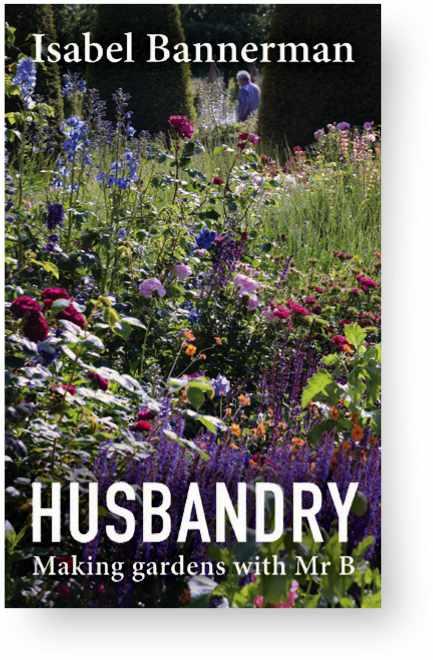 by Isabel Bannerman
by Isabel Bannerman
Pimpernel Press, £14.99
ISBN 978-1914902949
‘Making a garden together… is what Mr B and me like to do best,’ writes garden designer Isabel Bannerman. Husbandry tells the story of the garden she and her husband are currently making at Ashington Manor in Somerset, where they moved three years ago. But, as the title suggests, it is also a book about a quixotic marriage, and a working relationship that has lasted for four decades. And it is brilliantly done.
There’s an exuberance and generosity about the Bannermans’ gardens that is very beguiling, impressive too, since here, at Ashington, as in their previous gardens at Trematon Castle and Hanham Court, they start with a fair amount of chaos. But finding a balance between ‘chaos and charm’ is the key to the Bannerman style. ‘We like a bit of wonk,’ says the author.
Since most of us are not professional garden designers, it’s refreshing to be told at the outset that there is no such thing as taste, only ‘one’s personal whims and fantasies’.
But a great deal of excellent advice follows. Understand, for instance, that a garden ‘is always in the throes of becoming something else’. Take time to absorb its surroundings. Understand, too, the soil you have inherited. There is excellent advice on paths, and what they should be made of. Plants are not the start of her own garden making, says Bannerman, but whatever plants you use, use a lot of the same thing. She is also refreshingly honest; the newly planted rose garden at Ashington has not worked out as she hoped. ‘Maybe it will come right, or it could be one of those little bits which never works.’ We all have those.
Isabel Bannerman’s last book, Scent Magic (2019), was a luscious production, heavily illustrated. Husbandry is more modest, the size of a paperback, but so beguiling in its content, so poignant in its perceptions, that when I had finished it, I started at the beginning once more, to read it all over again.
BEYOND BOLD: INSPIRATION/ COLLABORATION/EVOLUTION
by Shelia Brady, Lisa Delplace and Eric GroftPointed Leaf Press, $85
ISBN 978-0977787586
An enthusiastic and detailed review of the design projects of landscape architecture firm OvS, pioneers of the naturalistic planting style. Reviewer Tim Richardson is a garden critic and writer.

Nearly half a century ago, Wolfgang Oehme and James van Sweden founded OvS in Washington, DC. At the time, they were outliers, pursuing a naturalistic planting style, using a fairly narrow range of plants for climatic and maintenance reasons, more than a decade before designers in Europe. The typical OvS landscape is still defined by broad swathes of perennials and grasses in simple but powerful shapes.
Oehme and van Sweden passed away in 2011 and 2013 respectively, and the authors of this book have taken up the mantle of the firm. All three have had a long association with the company. They have maintained the practice authentically with a few updates, chiefly involving sustainability issues. This book is a series of case studies of projects from the past decade or so, loosely arranged into thematic chapters, with detailed descriptions of the design challenges faced.
Highlights include the gardens at the American Museum in Bath, and Lake
Forest, Illinois, a reinvigoration of a classic design by early 20th-century naturalistic designer Jens Jensen. The Native Plant Garden at the New York Botanical Garden is probably the firm’s most high-profile commission of the past decade, and it is given its due here. One surprising project is Tippet Rise Art Center in Montana, a 10,000-acre former ranch, which now contains sculpture and performance venues. The firm’s light-touch role here was largely bound up with the creation of walking and cycling routes.
Beyond Bold can be recommended – but with reservations. While the text is usefully descriptive, it is somewhat lacking in critical or historic insight, reading at times more like marketing or website copy. Perhaps in this case it should be read alongside the original – Bold Romantic Gardens (1991) by James van Sweden in which the author is consistently more generous to the reader than to his own practice – as a way to mitigate any sense of self-praise.
A perceptive and engrossing view of making a new garden – with a little help from Mr B –by one of today’s leading garden designers.
Reviewer Anna Pavord is a garden writer and GI contributing editor.
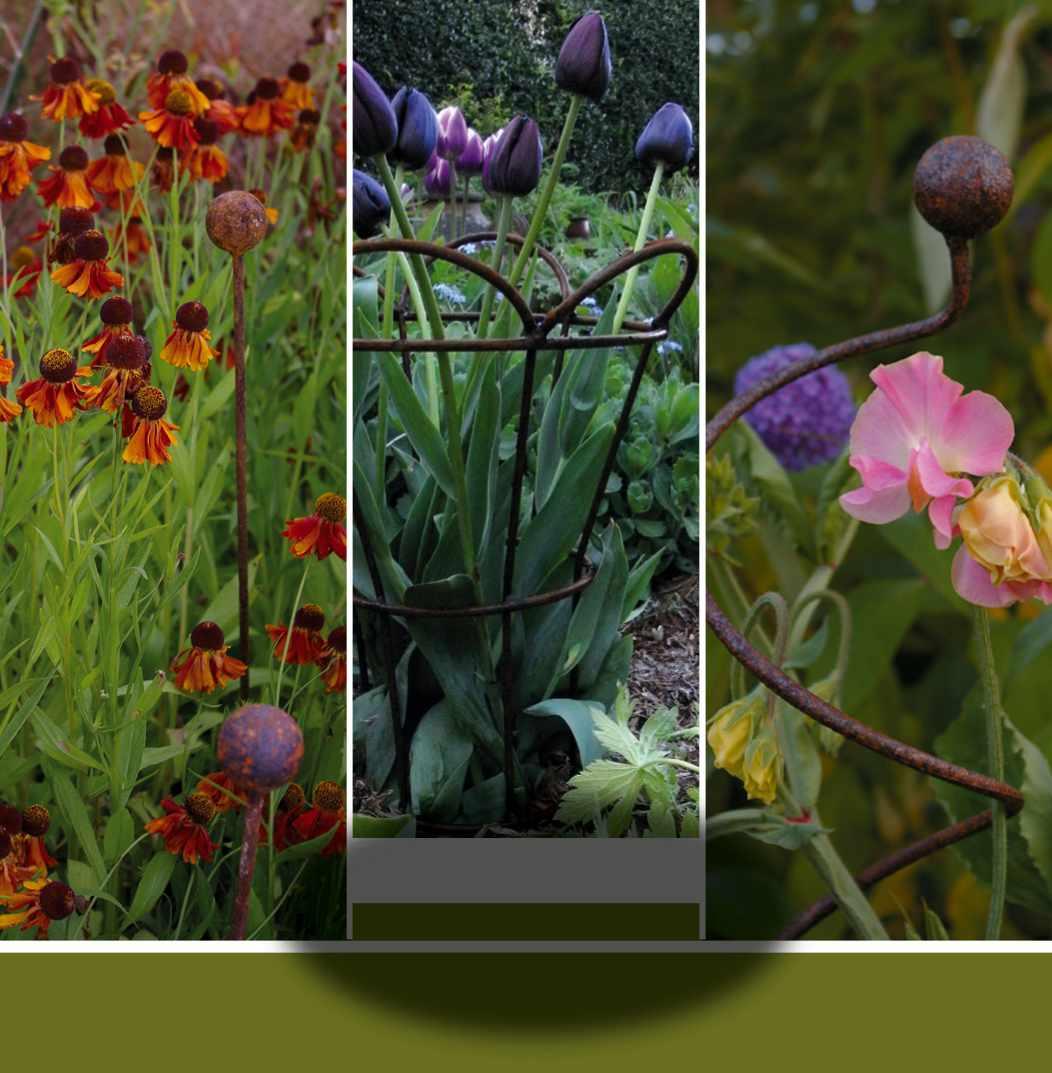



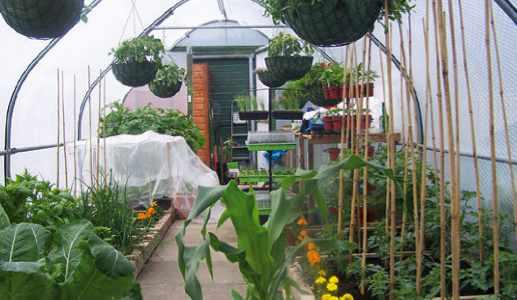


�1*. 1-1'2�-($2(%-2�%-+1-!
�-/&,.&/*2�0+,/0,2�1')1�2.+2#-1 )-(�02.02�$2*10),"+�
$/�.0)2"/0'*.0)2/0'2#*/0,.0)2 1-!21/+!�2/0'2%+.0)2
+#1&./**!2'1+.)01'2,-(%)"2�/)+2.,2&/021 102�122 #*/0,1'2/**2!1/-2-(%0'� �.0&12.,+2*/%0&"2�-/&,.&/*22
�0+,/0,2�1')1�2"/+2-1)%*/-*!2�1102%+1'2.02$%*,.#*12
/�/-'��.00.0)2)/-'10+2/,2,"12��� �"1*+1/2/0'2
�/$#,(02�(%-,2�*(�1-2+"(�+�
�1$.2�/,%-12�-11+
�-/&,.&/*.,!2�-(�02"/ 12�1102+%##*!.0)22

#-1$.%$2�%/*.,!2+1$. $/,%-12*/-)12,-11+2/0'2.0+,/0,2 "1')1+2+.0&12����� �+.0)2(%-2!1/-+2(�21�#1-.10&122
.02'1 1*(#.0)�2$/.0,/.0.0)2/0'2#*/0,.0)2.0+,/0,2 "1').0)� �120(�2)-(�2(%-2(�02�-/&,.&/*2�0+,/0,2 �1')1�2-/0)1�2/+2�1**2/+2,-11+�2/,2(%-20%-+1-!2.022 �%&�.0)"/$+".-1�
�-/&,.&/*2�0+,/0,2�1')1�
�12/*+(2+#1&./*.+12.02#-( .'.0)2*/-)12+1$. $/,%-122 /0'2+#1&.$102,-11+�2(��1-.0)2/2&($#*1,12'1*. 1-!2/0'2 #*/0,.0)2+1- .&1� �-.0).0)2.0+,/0,2.$#/&,2,(2/0!2)/-'102 (-2*/0'+&/#1� �12+1*1&,2,"12�1+,2�%/*.,!21 1-)-1102/0'2 '1&.'%(%+2,-11+21/&"2+1/+(02�-($2( 1-2�������2,-11+22 .02( 1-2���2 /-.1,.1+�2+(2!(%2"/ 12,"12�1+,2#(++.�*12 ,-11+2/ /.*/�*1�
�.0'2$(-12.0�(-$/,.(02/,�

www.pracbrown.co.uk

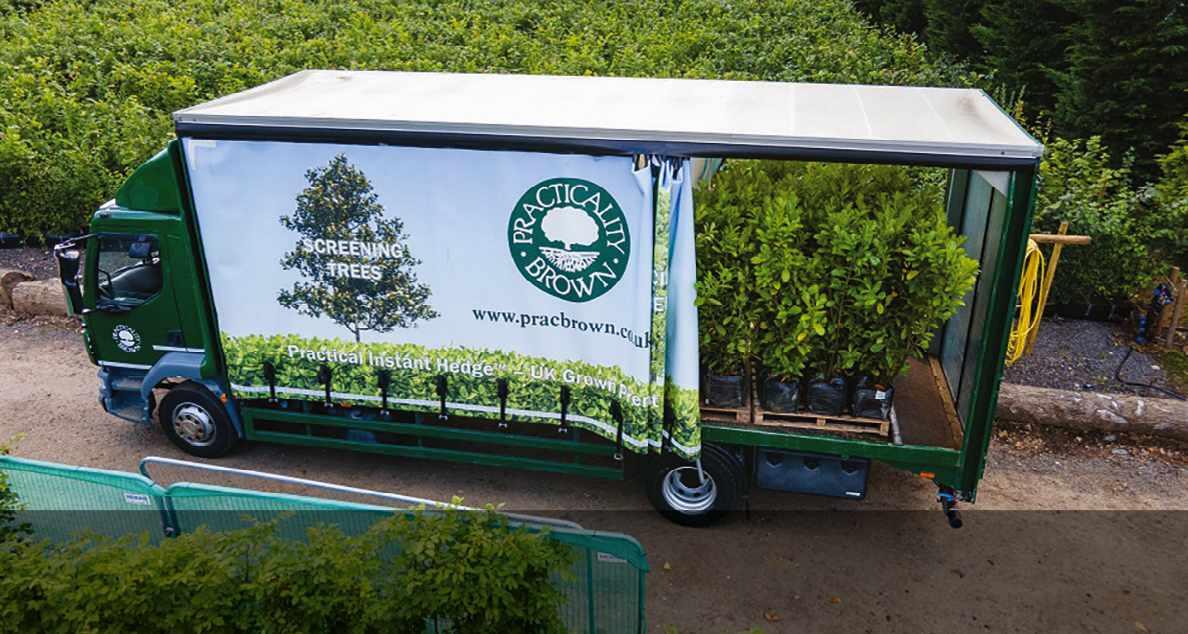



GARDENING IN A CHANGING WORLD: PLANTS, PEOPLE AND THE CLIMATE CRISIS
 by Darryl Moore
by Darryl Moore
Pimpernel Press, £20
ISBN 978-1910258286
BOOK REVIEWS
If there were a prize for ‘most timely publication’ of the year, this book would be a contender. Having experienced the highest-ever recorded temperatures in the UK this summer, with gardens that were completely scorched, is this our wake-up call? Landscape designer Darryl Moore explores how we have reached this position and suggests how we might find a way, through designing and gardening more sustainably, to improve the situation.
Garden books are often inclined to be picture-led, with less focus on words and hard facts. This book bucks the trend, with few images and plenty to say. I was struck by the amount of meticulous, in-depth research that has gone into the writing of this book. Moore has left no stone unturned in his quest to unravel the complex situation that we find ourselves in. He writes: ‘We all have responsibilities as gardeners in the widest sense of the word, and our actions matter.’
The first part of the book focuses on Plants as Producers and as Panacea, tackling subjects such as nature disconnect, novel ecosystems and cleaning up the garden, where Moore draws our attention to the ‘unholy trinity of pesticides, peat and plastic pots’ to which our industry is still firmly wedded. Plants as Pictures then describes how and why people have gardened throughout history, from the early Mesopotamians to the late Beth Chatto.
In the second half of the book, Plants as Processes; Possibilities and Partners, Moore focuses on the people and places who have been advancing the study of plants and planting in more recent times. We travel from Germany and the USA to Sheffield and southern France. Moore has a great deal to say, yet this must-read book is expertly divided into neat, digestible sections that are jam-packed with fascinating and vital information.
BRILLIANT ENGLISH GARDENS
b Cli Ni h ls
Cl i £60
ISBN 978-1908337641
A celebration of the English garden through a sumptuous masterclass in garden photography by one of the UK’s foremost garden photographers. Reviewer Rae Spencer-Jones is a garden writer.
Twenty-seven gardens, spanning several centuries, and in locations ranging from the West Sussex coast to County Durham, feature in this latest book from Clive Nichols, one of the UK’s foremost garden photographers.
With no introduction to explain why Nichols chose these of the many brilliant English gardens that he must have photographed, the reader can only surmise, but there is no doubt that each one is worthy of its presence in the book. They range from well-known classics such as the 18th-century Forde Abbey created by Sir Francis Gwyn in the grounds of a former 12th-century Cistercian monastery, to the contemporary and ingenious 21st-century coastal garden, with its drawbridge access to the beach in West Wittering, by designer Anthony Paul.
This book is a visual ode, not only to the gardens but to some outstanding designers, head gardeners and garden owners. Through a short explanatory text for each garden, but mostly

luxurious images that spill off the edge of each page, Nichols pays homage to, among others, Dutch plantsman Piet Oudolf and his glorious prairie planting at the Hauser & Wirth garden in Somerset; garden owners Stephen and Jane Baughan of Aston Pottery in Oxfordshire, who take four days to plant their 70m border with 5,000 flowering annuals from 120 packets of seed; and Mat Reese, latterly a gardener at Great Dixter, who now oversees the spectacular flower gardens at Malverleys in Hampshire.
Brilliant English Gardens is a big book by any standards. However, the sumptuous format offers an invitation to fully immerse oneself in this masterclass in garden photography. Through Nichols’ artistry in capturing the magical qualities of light, whether at dawn, noon or dusk, or his innate ability to compose the perfect garden image, each of these superb gardens shows up at its very best, and Nichols demonstrates why he remains at the top of his game.
A timely, in-depth book that is an essential read for anyone who gardens and cares about the future of our planet.
Reviewer Annie Guilfoyle is a garden designer and lecturer.
I have long been an admirer of Harriet Rycroft’s work and it is a joy to have her philosophy on this multidisciplinary artform distilled so eloquently in this small but sumptuous book.
The shackles of horticultural convention all too often stifle creativity in the garden, but Rycroft urges the reader not to worry about ‘doing it wrong’, but to think about creating a ‘beautiful plant community’. There is an emphasis on experimentation stemming from years of practical experience beyond the confines of the author’s own garden.
Topics include the cyclical nature of working with planted containers, the virtues of seasonal bulbs, recalibrating your planted pots for the next portion of the year, and creating a semi-permanent display with ornamental trees or shrubs.
The chapters of the book are a sequential journey beginning with the art of planting containers and concluding with how to keep your planted creations in good condition and help them to
POTS: FILL YOUR CONTAINERS WITH PLANTS, TEND TO THEIR NEEDS, WATCH THEM FLOURISH
by Harriet RycroftFrances Lincoln (Bloom Gardener’s Guide), £12.99
ISBN 978-0711272484
thrive – an all too often overlooked skillset. A wealth of knowledge is there to be absorbed. I particularly enjoyed the breakdown of all the components that make up the featured arrangements (including quantities of bulbs and so on).
Extensive photographs sit harmoniously alongside the text, helping to articulate the techniques covered, but also skilfully capturing the atmosphere and authenticity of the author’s own garden.
A catalogue of plants worthy of consideration makes up a significant portion of the book, where trees, shrubs, perennials, annuals and grasses that have been described or photographed in other chapters are lauded with fuller, more comprehensive cultural notes.
The joy of planting in containers is the creative fluidity it affords you. That freedom to experiment and unashamedly stray beyond boundaries is something this book expresses and celebrates at every opportunity.
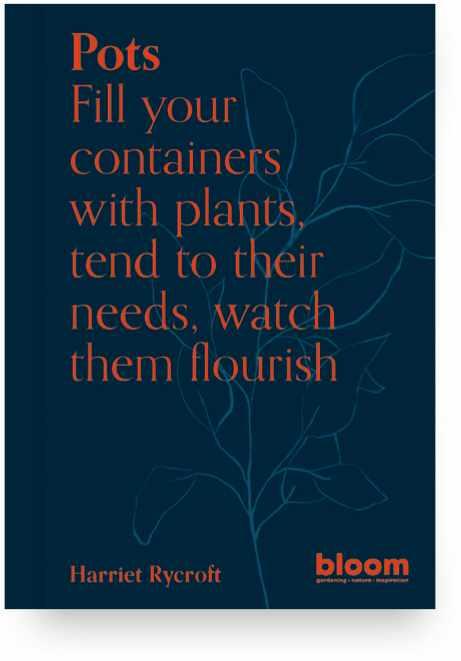
One glance at the shocking pink cover and it is glaringly obvious that Hortus Curious is not your average plant book. Perhaps we need a shock. Plant blindness – or plant awareness disparity, as it is also known – is a serious and growing issue: one survey found that 82 per cent of British children could not identify an oak leaf.
Hortus Curious is aimed at people who would be unlikely to pick up a regular plant book, introducing them to 40 charismatic plants and fungi, from cotton and cacao to the carnivorous Venus flytrap and the squirting cucumber, which gets its name from its explosive, seedspreading fruits. The book is arranged into chapters that include Plants Behaving Badly and Superheroes, designed to entice even the greatest plant sceptic to dip into its pages. Watercolourist Aaron Apsley’s pictures bring the words to life beautifully, offering accurate illustrations that reminded me of some of my favourite plant

HORTUS CURIOUS: DISCOVER THE WORLD’S MOST WEIRD AND WONDERFUL PLANTS AND FUNGI
by Michael PerryDorling Kindersley, £16.99
ISBN 978-0241561553
books from my childhood in the 1970s and 80s.
Hortus Curious is certainly in the author’s wheelhouse. Michael Perry, via his alter ego Mr Plant Geek, is often to be found dispensing plant knowledge on daytime television, including the shopping channel QVC, and on social media. Perry’s presenting experience shows in his writing.
The book is squarely aimed at the gift market, and its writing style is very casual and conversational – I have to admit that the editor in me winced at a sentence starting with the word ‘Okay’. However, readers who find more traditional plant books too intimidating (or indeed dull) may well be drawn in.
This certainly happened in my house: I left a copy of Hortus Curious on the dining room table and came back to find my 12-year-old son avidly turning the pages. He soon began telling me about the biggest flower in the world and an orchid that looks like a duck.
This plant book with a difference aims to instill a sense of curiosity in the plant blind and bring the wonders of botany to new audiences.
Reviewer Jane Perrone is a freelance writer and podcaster.
For the aspiring curator of planted containers striving for fresh ideas, this manifesto on the art of gardening in pots is essential reading.
Reviewer Tom Attwood is a plantsperson and nursery co-owner.
THE SEED DETECTIVE: UNCOVERING THE SECRET HISTORIES OF REMARKABLE VEGETABLES
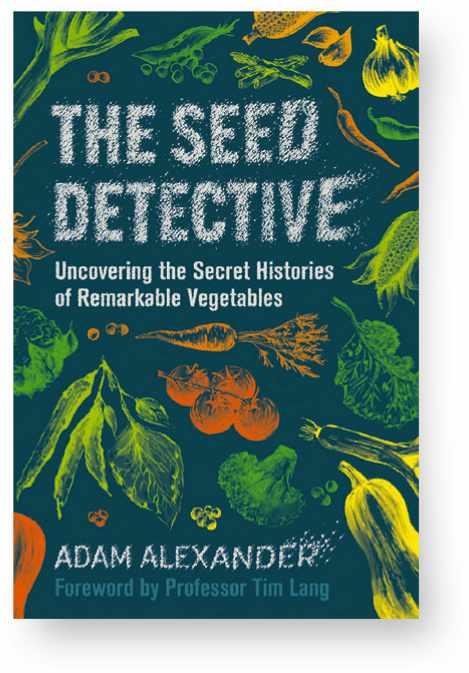 by Adam Alexander
by Adam Alexander
Chelsea Green Publishing, £18.99
ISBN 978-1915294005
The fascinating tale of one man’s detective hunt to uncover the stories behind some of the world’s most unusual vegetables and save them before it’s too late. Reviewer Sally Nex is a writer and professional gardener.
Some years ago, BC (Before Covid), my family owned a house in France. It was surrounded by vineyards and pretty villages where you’d find marchés des producteurs with stalls tumbling with tomatoes, melons and lettuces grown and sold by local people.
Once, I bought a plump, pink garlic bulb and brought it home – this was also BB (Before Brexit) so I was still allowed to. I save cloves from its descendants to this day. They produce spicy heads the size of a toddler’s fist and nothing has matched them since.
I think Adam Alexander might be interested in my garlic. His quest for locally grown vegetable varieties has taken him to many markets, from Laos and Syria to Donetsk in Ukraine, where (in happier times) he bought the sweet red pepper that started it all.
Like Alexander, I find seeds passed from gardener to gardener incredibly evocative: each time I plant my garlic, I’m back in that Gironde marketplace. He’s an
BOOK REVIEWS
Other books
More new releases, from how to make the most of groundcover plants to experiencing the restorative power of trees.
TEAMING WITH BACTERIA by Je�
LowenfelsTimber Press, £18.99, ISBN 978-1643261393

Lowenfels digs into new science behind how endophytic bacteria supply nutrients to plants and explains how this applies to gardeners and growers.

BLOOM by Lauren
 Camilleri
Camilleri
and Sophia Kaplan
Smith Street Books, £28, ISBN 978-1922417855
entertaining storyteller, full of quirky encounters with impatient stall holders and helpful translators (one shared the contents of his mum’s veg garden). His eclectic curiosity skips from favism (a genetic mutation rendering you allergic to broad beans – who knew?) and its role in Pythagoras’ death, to Neanderthal eating habits, via Louis XIV’s France.
At its heart are tales of extraordinary, colourful, rare vegetables. We’ve now lost 90 per cent of vegetable varieties: Garden Organic board member Alexander is devoted to finding those that are left so he can grow them in his three-anda-half-acre Welsh garden and provide seed for the Heritage Seed Library.
Alexander’s descriptions just make you want to try them yourself. Now on my must-grow list are towering Luang Prabang mangetouts, Lamon beans and dauntingly named ‘Bloody Warrior’ lettuces. It’s down to people like Alexander that I can still get hold of seeds. I’m profoundly grateful.
The co-founders of the Sydneybased online plant store Leaf Supply demonstrate how to enjoy flowering plants indoors.
THE COMPLETE BOOK OF GROUND COVERS by Gary Lewis

Timber Press, £40, ISBN 978-1604694604
Expert advice on groundcover plants of varying colours, textures and forms for a wide range of situations and conditions.
HABITAT CREATION IN GARDEN DESIGN by Catherine

and
Heatherington Alex JohnsonThe Crowood Press, £20, ISBN 978-0719840968
Advice on marrying garden design principles and an ecological outlook to create wildlife havens.
TREE GLEE by Cheryl
RickmanWelbeck Publishing, £16.99, ISBN 978-1801291170
A look at the science behind how trees comfort, restore and revitalise us – plus what we can learn from woodlands to improve our wellbeing.
Rewards PROGRAMME
As the nights draw in, treat yourself with a new season of o � ers from the Gardens Illustrated Reader Rewards scheme
HOW IT WORKS
1Browse
Take a look at some of our latest fantastic o�ers, covering gardening, lifestyle, travel, food and drink, and more.
2 Redeem
Follow the link provided in each o�er and apply the o�er code when placing your order.
3 Find even more
Head to gardensillustrated.com/ o�ers to find the full range of discounts, deals and competitions available to you.
SAVE 20%
REFRESH YOUR AUTUMN WARDROBE FOR LESS
Seasalt Cornwall’s new collection for autumn is inspired by the colour of Cornwall’s ever-changing landscape. Clothes feature handcrafted prints and simple silhouettes, o�ering light but warming layers, new workwear styles and flowing jersey dresses. And as with all Seasalt Cornwall’s clothes, you can guarantee beautiful quality and items that are manufactured sustainably and designed to last. Get 20% o� everything in the new collection plus all other full-price Seasalt clothes and accessories with this fantastic o�er.

Shop online at seasaltcornwall.com and use code GISUM22 at checkout
To browse our full selection of o�ers, go to gardensillustrated.com/o�ers
5% OFF SAGA’S BOUTIQUE CRUISES
Small ships, unforgettable experiences! Come onboard Saga’s boutique cruise ships for a cruise you’ll always remember. These voyages are designed exclusively with Saga customers in mind, helping you escape the crowds and discover lesserknown destinations. On Saga’s ocean cruise ships you’ll enjoy an all-inclusive experience with drinks and speciality dining. Each cabin comes with a private balcony, and there’s plenty to do on board the spacious decks with five restaurants, a gym and spa, and a show-stopping theatre. Fancy a river cruise instead? Explore Europe’s celebrated network of rivers, from the wine towns on the Rhine to the rich culture of the Douro. With both cruises, start and end your trip in style with Saga’s inclusive VIP travel, o�ering you either chau�eur service or free airport parking.
Find your cruise at saga.co.uk/gardens-2022. To book with your exclusive 5% discount call free on 0800 838 838, quoting GDNIL

SAVE 10%
10% OFF WHISKY SOCIETY MEMBERSHIP
The Scotch Malt Whisky Society is a whisky club unlike any other. Connect with other like-minded whisky lovers and start an adventurous journey of discovery with monthly whiskies, tastings, an in-house magazine and access to the club’s private whisky bars.

Go to smws.com/whisky-clubmembership and use code SMWSGGI10 to get 10% o�

THREE REASONS WHY YOU SHOULD JOIN THE CLUB
Find out why 35,000 people are members of the Scotch Malt Whisky Society
You meet like-minded people
UP TO 20% OFF WIGHTLINK FERRY TICKETS

Autumn is a lovely time of year to visit the stunning Isle of Wight, with plenty of gardens showing o� their seasonal colours. Travel to this beautiful island for less with Wightlink by taking advantage of 15% o� car tickets and 20% o� foot passenger tickets.
To get your discounted tickets, head to rb.gy/ucdnwp
15% OFF YOUR NEXT ONLINE ORDER AT MOLTON BROWN

Pamper yourself this autumn with the luxurious toiletries and accessories from Molton Brown. From body wash, shampoo and soaps to candles and reed di�users, you can get 15% o� everything you buy online.
To claim your 15% discount, shop online at www.moltonbrown.co.uk and use code GI2215 at checkout
Members are adventurous enthusiasts who appreciate the opportunity to discuss whisky in a club of kindred spirits.
You can try rare whiskies
As a member, you can access around 30 rare whiskies released every month from over 150 di�erent distilleries.
You can visit members’ rooms
Meet fellow members in Edinburgh, Glasgow and London.
GA R DENS
Join Gardens Illustrated online

Don’t miss all the exclusive features, videos, interviews, masterclass news and more at




gardensillustrated.com
Head to the Gardens Illustrated website for insight into gorgeous gardens and to discover the best seasonal plants. You’ll also find practical gardening guides, the latest horticultural news and details of forthcoming events – plus news of our online masterclasses, offers and competitions. Follow us on Instagram for inspiration from gardens throughout the world and join our garden community on Twitter and Facebook. And be sure to sign up to the weekly Gardens Illustrated newsletter and fortnightly Kitted Out newsletter, which brings you our pick of the best gardening products.
READER COMPETITION
WIN A luxury stay for two at Bodysgallen Hall
Bodysgallen Hall, a romantic country house hotel and spa on the edge of Snowdonia National Park, is offering one Gardens Illustrated reader the chance to win a luxury two-night stay for two.

Owned by the National Trust, 17th-century Bodysgallen Hall enjoys a privileged location in North Wales with spectacular views of Snowdonia, and can also lay claim to one of Wales’s greatest hotel gardens. Surrounding the Grade I-listed house, the 220 acres of parkland include a rare 17th-century parterre of box hedges (shown below) filled with sweet-smelling herbs, along with natural limestone outcrops, a rockery with a cascade, walled gardens, a lily pond and several follies. There is also a formal rose garden and
a variety of well-established specimen trees and shrubs, including medlar and mulberry. Another highlight is the kitchen garden, which provides the freshest of ingredients for the award-winning restaurant, with an abundance of seasonal foliage used for arrangements through the house and luxury spa. To find out more about the hotel go to bodysgallen.com
While staying at Bodysgallen Hall, why not take the opportunity to visit other notable National Trust properties? One not to be missed is Bodnant Garden, a historic Grade I-listed horticultural gem, while Powis Castle with its world-famous gardens laid out along French- and Italian-style terraces, overhung with giant clipped yews that shelter rare and tender plants, is within easy reach.

THE PRIZE
• Two-night stay at Bodysgallen Hall with a room in the main hall
• Breakfast each day for two
• Three-course dinner for two on one evening
• Afternoon tea for two on one afternoon
• One spa treatment per person, and use of the spa facilities throughout your stay
• A guided tour of the gardens followed by coffee or tea
HOW TO ENTER
For your chance to win answer the following question:
When was Snowdonia designated a National Park?
a) 1951
b) 1962
c) 1977
Enter online at gardensillustrated.com/ bodysgallen
Closing date 11.59pm, 31 October 2022
Terms and conditions apply*
TERMS AND CONDITIONS
Entrants must be UK residents, aged 18 or over. Prize is based on two guests sharing a double or twin bedroom. Valid for stays for 12 months excluding the Christmas, New Year, Easter and Bank Holiday periods. Three-course dinner for two on one evening excludes drinks, which can be purchased. Afternoon tea for two on one afternoon excludes alcohol, which can be purchased. Daily breakfast for two.
A 25-minute spa treatment per person and use of the spa facilities throughout. A brief guided tour of the gardens followed by coffee or tea in the hotel. Full terms and conditions can be found at gardensillustrated.com/bodysgallen
In 2008, Historic House Hotels Ltd and all its interest in the three Historic House Hotels (Hartwell House, Bodysgallen Hall and Middlethorpe Hall) became the property of the National Trust, by donation, with all profits henceforward benefiting the houses and the charity. bodysgallen.com
BODYSGALLEN HALL




ACROSS
1 Fluffy-flowered aster relative, aka floss flower – a great, um, sort! (8)
6 Genus of caraway plant – included in Jamaica rum! (5)
9 Angelica, say, seen in kitchen garden? (4)
10 ___ japonica, a white-flowering Asian shrub – held by Monsieur Yates (5)
11/15 across Another name for Calibrachoa Million Bells plants (4,7)
12 Tough, robust (6)
14 Conifer leaves: they have eyes (7)
15 See 11 across
16 Single-stemmed fruit tree with short side shoots – wow, Monty! (6)
17 Species name meaning ‘creeping’ –in rare penstemon (6)
19 Partly opened sweet briar, say … bored us, sadly! (7)
21 Coprinopsis mushrooms – some think capsicums! (7)
23 Coastal form of Lathyrus – Pa, ease off! (3,3)
25 A cucurbit species in Europe (Poland) (4)
26 Labours – takes time turning soil (5)
28 Defoliated? Top of beeches are! (4)
29 A violet-blue clematis – for Henry VIII’s house? (5)
30 Deep-blue geranium named after a Sussex manor house and gardens – gate very wobbly (8)
PRINT VERSION
You can buy printed issues of the magazine published up to six issues ago at buysubscriptions.com or see below for details.
DIGITAL VERSION
Gardens
CLOTHBOUND SLIPCASES
Cost from £9.99 each (inc p&p). Subscriber discounts available – see below for details.
DOWN
2 Hybrid group of azaleas bred in Flemish city – good, then spoilt (5)
3 A ribbed-leaved plantain wildflower –some crib, worthless (7)
4/15 down Purple-flowering clematis with red stamens – ‘Joe Biden’? (3,9)
5 The ‘prayer plant’ genus – wild amaranth with end removed (7)
6 Dwarf white ‘Bird’ series rhododendron – right inside raspberry stem? (5)
7 One who goes on and on about trailing/climbing plant? (7)
8 Poisonous aconite – goes to religious man’s head? (9)
13 Taxonomic classification: consummate intellectual, not I! (5)
15 See 4 down
16 Worms’ excretions (5)
18 Henry, father of the sweet pea –forced to move around Kew initially (7)
19 Like dormant buds in winter – in forest in Galloway (7)
20 Common name of uncultivated form of Rubus fruticosus (7)
22 See 27 down
24 As Rocket potatoes are, seasonally (5)
27/22 Set areas out … for daisy-like native plant of salt marshes (3,5)
TO
I
GARDENS
I would like to order slipcase(s)
n EU – £9.45 each
– £9.99 each
n EU – £10.50 each
n Rest of world – £10.80 each n Rest of world – £12 each
Postage & packaging is included in all prices.
n I enclose a cheque/international money order made payable to Our Media Ltd for £
n I would like to pay by credit/debit card, please debit my card
Visa n Mastercard n
n n n n n n n n n n n n n n n n
Expiry date n n n n Issue no. (if shown) n n
Signature
SOLUTIONS TO SEPTEMBER CROSSWORD

KEEP
TOUCH Gardens Illustrated (published by Our Media Limited) would like to send you updates, special o�ers and promotions by email. You can unsubscribe at any time.



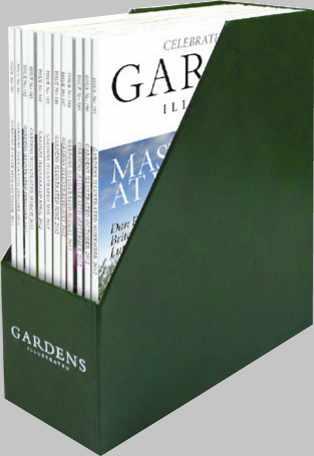
Please tick here if you would like to receive these n
We would also like to keep in touch by post and telephone about other relevant o�ers and promotions from our publisher Our Media Limited. If you’d rather not be contacted this way please tick here post n phone n .For more information about how to change the way we contact you, and how we hold your personal information, please see our privacy policy, which can be viewed online at policies.immediate.co.uk/privacy
Nursery guide
Get inspired for the autumn season with the best plant and bulb suppliers
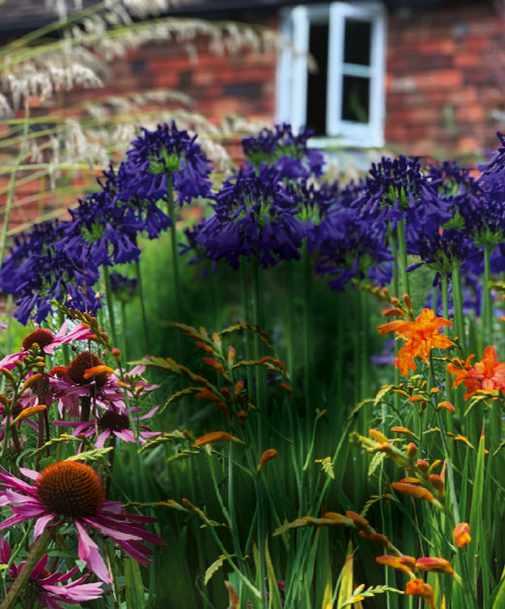

BLUEBELL ARBORETUM & NURSERY
Specialists in hardy trees, shrubs and climbers including a huge selection of unusual species and cultivars. Informative website and a reliable mail-order service is available. bluebellnursery.com
01530 413700
BUNKERS HILL PLANT NURSERY
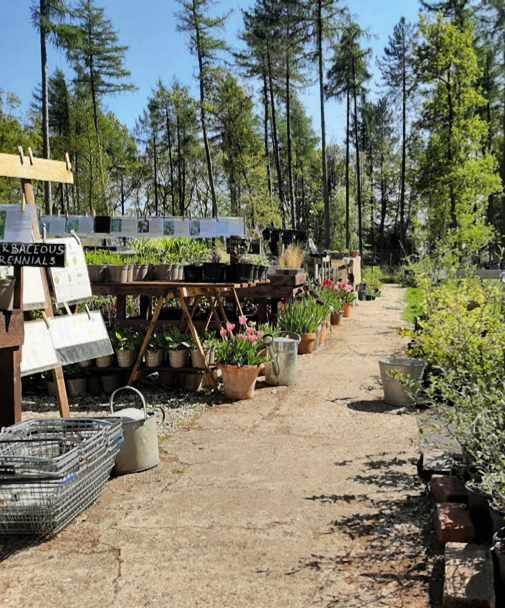
A family-run plant nursery near Woodstock, Oxfordshire, with an old-fashioned feel and traditional values. We have a huge selection of spring bulbs, bareroot roses and so� fruit available to pre-order for Nationwide Delivery.
bunkershillgardenshop.co.uk
01869 331492
OLD COURT NURSERIES
Specialist family-run nursery and garden open every day 11am–5pm September to the 20 October. Catalogue available on request or online. Order now for May 2023 delivery of Michaelmas daisies and more.

autumnasters.co.uk
01684 540416
PELHAM PLANTS
Quality perennials, lovingly propagated and grown in peat-free compost, at our charming woodland-edge nursery in Sussex. Mail order and downloadable catalogue available. Visits by appointment only. pelhamplants.co.uk pelhamplants@gmail.com
MEADOWGATE NURSERY
A family-run, independent nursery, specialising in ornamental grasses. Over ten years’ experience of growing a diverse range of grasses. We o�er tailored advice on the use and care of the grasses we sell. meadowgatenursery.co.uk
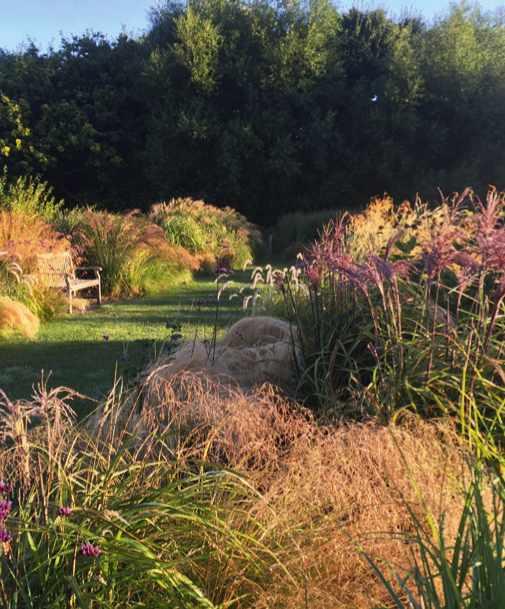
07736 523262
BINNY PLANTS
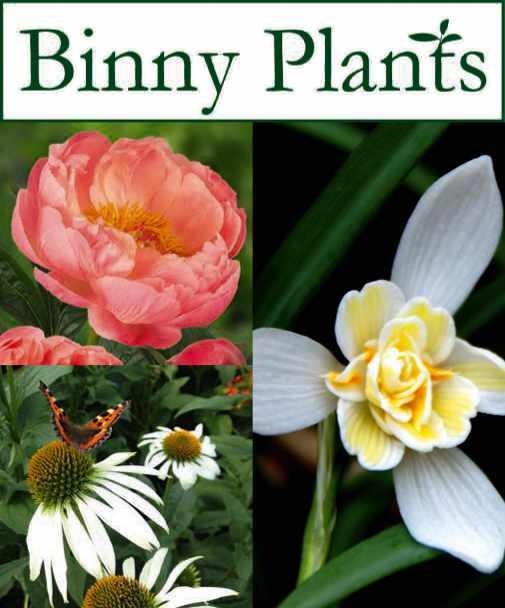
2022 Peony catalogue online. More than 300 herbaceous, intersectional, and tree peonies, as well as thousands of perennials, grasses, shrubs and ferns are now available for delivery nationwide. binnyplants.com contact@binnyplants.com
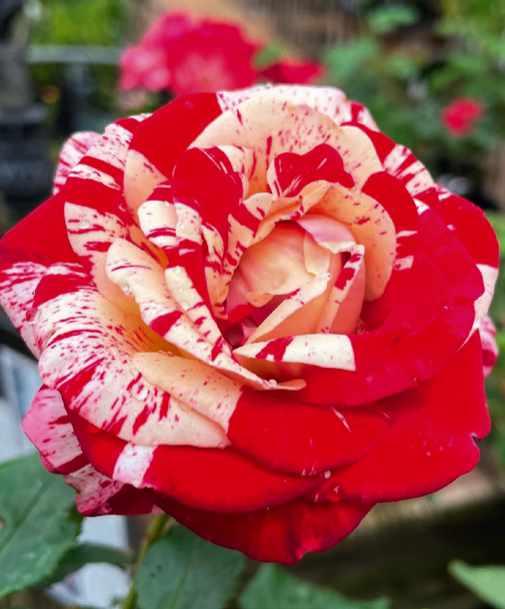
STOTTS NURSERY
Small, family-run nursery set in Chiltern Hills woodland, specialising in hardy annuals, herbaceous perennials, shrubs, climbers and trees. Christmas willow and moss wreath making workshops in November and December. stottsnursery.co.uk

07542 718307
ASHWOOD NURSERIES
An independent nursery situated in the West Midlands o�ering many home-grown, beautiful plants. Open seven days a week. Mainland UK mail-order service available. ashwoodnurseries.com
01384 401996
Autumn gardens to visit
Autumn is a great time to visit this collection of stunning gardens

1HEVER CASTLE & GARDENS
Hever’s striking trees come to the fore in Autumn. Colour abounds with vivid maples and brilliant beech. Boston ivy scrambles up the castle walls while Vitis coignetiae covers bridges and pergolas with crimson. Visit on a still day for the best views of reflections in the moats and lake.

Hever, Edenbridge, Kent TN8 7NG | 01732 865224 | hevercastle.co.uk
2WATERPERRY GARDENS
Enjoy a visit to Waterperry’s Ornamental Gardens to see the famous herbaceous border take centre stage. �e Michaelmas daisies create a late �ourish, and beautiful autumn colours �ank the riverside walks. A place to explore, relax and shop in beautiful surroundings all year round.
Nr Wheatley, Oxfordshire OX33 1LA | 01844 339226 | waterperrygardens.co.uk
3BLUEBELL ARBORETUM & NURSERY
Visit our tranquil, nine-acre, woodland garden full of unusual trees and shrubs, many of which have been planted for their superb autumn colour. Many of the rarities on display are available for sale from our adjoining specialist plant nursery. RHS Partner Garden.
Smisby, South Derbyshire LE65 2TA | 01530 413700 | bluebellnursery.com

4CHELSEA PHYSIC GARDEN
Established in 1673, London’s oldest botanic garden is home to over 4,500 medicinal, edible and useful plants from around the world. Visit for the Christmas Fair, Thursday 24 – Sunday 27 November. The perfect place to start your Christmas shopping!
66 Royal Hospital Road, London SW3 4HS | chelseaphysicgarden.co.uk
5THE YORKSHIRE

ARBORETUM
�e Yorkshire Arboretum o�ers 120 acres of peace and tranquillity in the heart of North Yorkshire. Experience natural beauty, a botanically diverse tree collection, sweeping vistas, lakes and fabulous autumn colours. Just 30 minutes from York, it’s yours to explore!

The Yorkshire Arboretum, Castle Howard, York YO60 7BY | yorkshirearboretum.org

Autumn inspiration
From beautiful craftsmanship to handmade pots and practical accessories, we can help to make your autumn garden special

WONDERLAND BOUTIQUE
A pure silk scarf is a perfect gi� �e Silk Scarf shown is £39 with free gi� wrapping and p&p. Visit wonderlandboutique.com to view their stunning collection of silk scarves and clothing.

01263 732643 wonderlandboutique.com
ARCHITECTURAL HERITAGE
�e Verdigris Copper Garden Planter Collection. Hand cra�ed from heavy gauge brass, riveted together and then verdigris patinated; our planters are all handmade to order and available in circular, square and rectangular forms. Contact us for a copy of our latest catalogue.

01386 584414 architectural-heritage.co.uk
CORINNE YOUNG TEXTILES
Corinne Young creates embroidered heirloom Pot Plant sculptures, (shown at Chelsea 2021/22). She is inspired by the �owers she studies in her garden, antique botanical books and artefacts, and �ower myths and meanings. Available via her website or by commissioning your own unique piece.
@corinneyoungtextiles corinneyoungtextiles.co.uk
DEVENICK DESIGNS
Meet Willow the roe deer. She�s made from 5mm-thick steel, stands 1.2m tall and is supplied with a rust patina finish. Willow will look great in any setting and is sure to add warmth and interest to her surroundings. She is often purchased along with her daughter, Grace, and/or her mate Hagrid the stag.

07720 841394 devenickdesigns.co.uk
PERILLA ALPACA SOCKS
Blissfully comfortable 75 per cent alpaca short ribbed socks repel bacteria and odour and keep feet at a perfect temperature. �ey have ribbed sides and a so�, cushioned sole in a great palette of colours from vibrant raspberry and purples to natural undyed colours of pale grey and mid brown.

01886 853615 perilla.co.uk
RUTH MOILLIET SCULPTURE
Highly �nished metal sculptures inspired by the plant kingdom. Choose from an existing portfolio or commission your own bespoke piece. An ideal addition to any garden or indoor setting. Featured artwork –Allium stems – an a�ordable addition to any home or garden, makes an ideal gi� sculpture@ruthmoilliet.com ruthmoilliet.com

NOVEMBER
• A dramatic rock garden by Peter Berg on a hillside overlooking the River Moselle in Germany
• Cottesbrooke’s head gardener Jenny Barnes shows how to use berries and warm winter foliage in pot displays
• Suffolk garden Fullers Mill in its moody, autumn guise
• A tour of the Cornish nursery Surreal Succulents near Penzance, which inspires a touch of the tropical
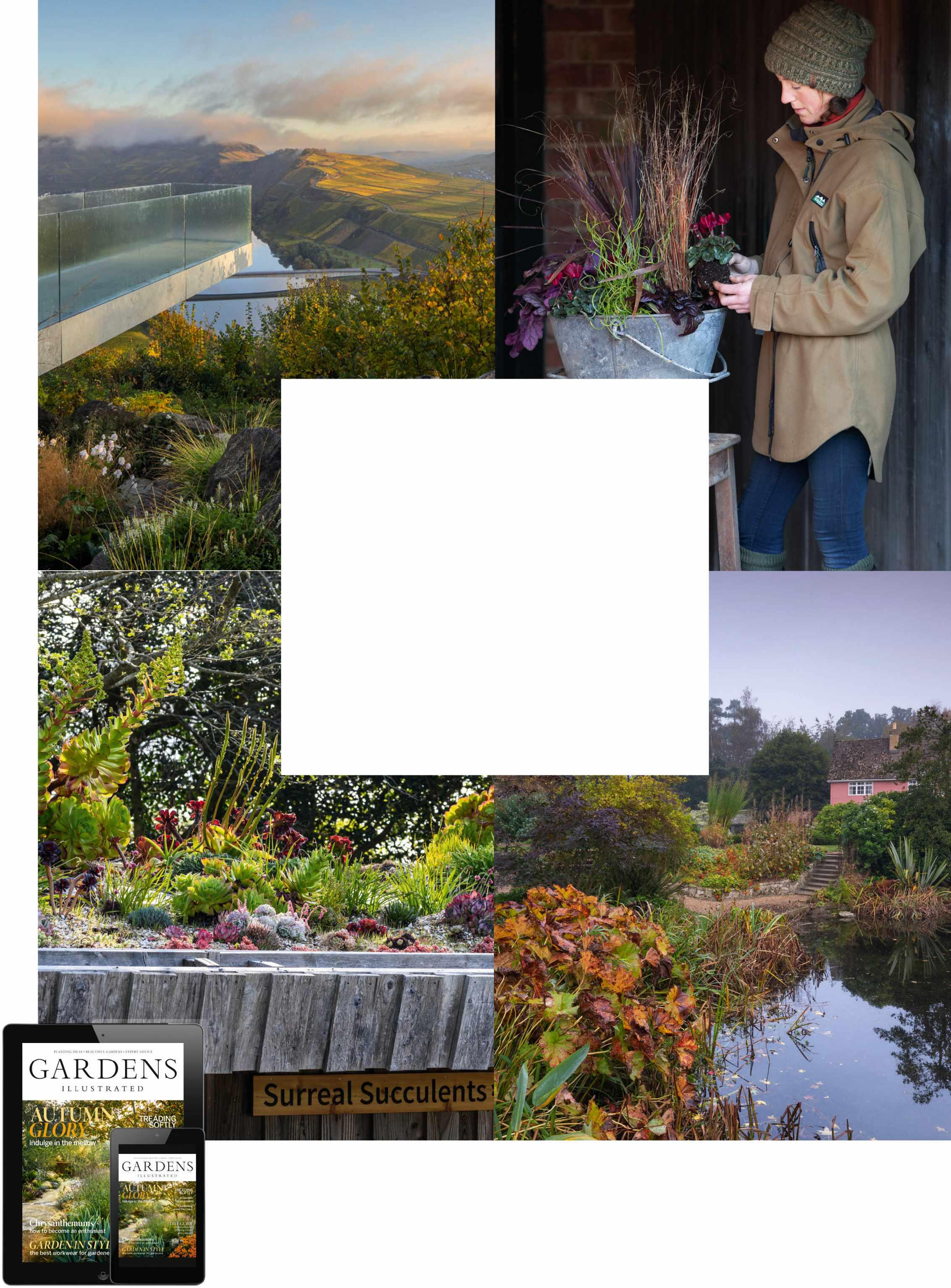
• The best acers for interesting bark
ON SALE 1 NOVEMBER
Save money when you subscribe to the digital edition – see page 24. Also in selected Waitrose, Sainsbury’s and Tesco stores, as well as WHSmith, and all good magazine retailers.
TULIP MANIA
As we enter the peak month for panic buying spring bulbs, Alice wonders if it might be time to rein in our unsustainable pursuit of the perfect Instagrammable border
 by Alice Vincent
by Alice Vincent
I’m not saying we’ve taken to ruffs and haggling by lamplight, but I do wonder if we’re in the midst of a 21st-century tulip mania. Nearly 400 years ago the lust for tulips in the Netherlands was such that certain bulbs sold for multiples of people’s salaries on contract alone. When the market crashed three years after it bubbled up, many investors walked away empty handed, their fortunes in tatters.
These days, diving into the website of Peter Nyssen for my annual bulb binge hardly holds such peril, but tulips still induce frenzy. It starts in midsummer, with the organised snaffling up the most covetable cultivars while everyone else is on holiday.
Once they arrive, the bulbs sit in a cardboard box by the back door for several weeks until one finally musters up the energy to plant them – for tulips it’s worth waiting until November, when it’s cooler, which lowers the risk of tulip fire, the fungal disease that you’ll only know about once they start growing. And then we wait, for months, for the display we’ve probably been planning for nearly a year.
That makes it sound straightforward, and tulips can be deliriously easy to grow. I remember some jolly parrot-style ones (frilly edges on the petals) appearing on my first
balcony and being amazed that such splendour appeared from what looked like a bad onion. I included them in my first book, How to Grow Stuff, because they seemed so effortless. But that balcony was free of pests –no foxes, no squirrels, no mice – and the tulips could grow in peace. Within a few years I’d be watching a squirrel uproot bulbs from pots on my new woodland balcony, and Robin Hoodlike, bury them in my neighbour’s troughs, and realising my naivety.
I spent most of the first winter burying bulbs, and then shouting at squirrels who dug them up. A heavy mulch helped for a week or so. Cayenne pepper or chilli flakes deterred for a while, but had to be replaced every time it rained. The next year, I mixed narcissus bulbs in with the tulips, which seemed to work best, but April’s bulb explosion (gorgeous) was a high price to pay for lacklustre summer perennials in the same spot.
What’s less discussed, though, is the innate indulgence of tulips. They’re technically perennial, but the biggest, blousiest blooms come from annual replacing. Some, such as the delicate, curly petalled T sylvestris, will naturalise and return for decades, and when I’ve been bothered to lift bulbs, and stored them in a large tub of old compost by the shed, they have come back with surprising
vigour in new spots – under trees works better than you might expect.
Still, many replace or restock their tulips every year. Plant purchasing and sustainability is something I’m increasingly trying to reckon with: at a time when we ought to be consuming less from a planet ever-more drained of resources, ordering, buying, planting and then uprooting bulbs feels particularly indulgent. It’s tempting to skew towards those flowers that last better in the ground, such as narcissus.
I hold Instagram responsible; all those gorgeous photos of tulips flopping elegantly from vases. From the panic over ordering them to the obsession with lifting and replacing every year. It’s responsible, too, for the boom-and-bust cycles of certain cultivars: ‘La Belle Époque’ is to tulips what ‘Café au Lait’ is to dahlias – popular, and quite boring; I’ve never been able to look at it the same way since my husband called it “belly pork”.
This year, I’ve abstained – landscaping does not a happy tulip bed make – and will be curious to see what returns from the dolly tubs I generously planted last year: the delicate, pink-and-yellow T. saxatilis, especially. Small and unshowy in Love Hearts pastels, they’re about as opposite from the fashionable Dutch Master blouse aesthetic as you could get. n




